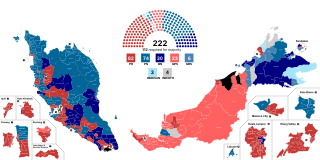
2022 Malaysian general election
The 2022 Malaysian general election, formally the 15th Malaysian general election, was held on Saturday, 19 November 2022 to elect the 222 members of the Dewan Rakyat in the 15th Parliament of Malaysia.
Five days after the general elections which resulted in a hung parliament, opposition leader and former deputy prime minister Anwar Ibrahim is officially named as the 10th prime minister of Malaysia.

The 2022 Malaysian general election, formally the 15th Malaysian general election, was held on Saturday, 19 November 2022 to elect the 222 members of the Dewan Rakyat in the 15th Parliament of Malaysia.
A hung parliament is a term used in legislatures primarily under the Westminster system to describe a situation in which no single political party or pre-existing coalition has an absolute majority of legislators in a parliament or other legislature. This situation is also known as a balanced parliament, or as a legislature under no overall control (NOC), and can result in a minority government. The term is irrelevant in multi-party systems where it is rare for a single party to hold a majority.
The Leader of the Opposition is a title traditionally held by the leader of the largest political party not in government, typical in countries utilizing the parliamentary system form of government. The leader of the opposition is typically seen as an alternative prime minister, premier, first minister, or chief minister to the incumbent; in the Westminster system, they head a rival alternative government known as the shadow cabinet or opposition front bench. The same term is also used to refer to the leader of the largest political party that is not in government in subnational state, provincial, and other regional and local legislatures.

The deputy prime minister of Malaysia is the second-highest political office in Malaysia. There have been 15 officeholders since the office was created in 1957. The first prime minister of Malaysia, Tunku Abdul Rahman, started the convention of appointing a deputy prime minister, but some cabinets have opted not to appoint a deputy prime minister.
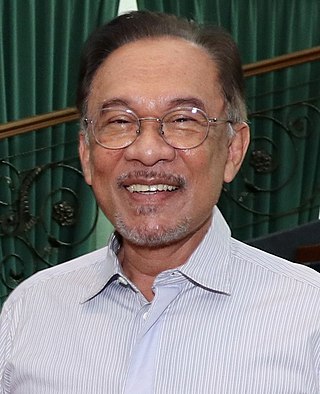
Anwar bin Ibrahim is a Malaysian politician who has served as the 10th Prime Minister of Malaysia since November 2022. He served as the 12th and 16th Leader of the Opposition from August 2008 to March 2015 and again from May 2020 to November 2022. He has also served as Minister of Finance from March 1991 to September 1998 and again since December 2022 and 2nd Chairman of the Pakatan Harapan (PH) coalition since May 2020, 2nd President of the People's Justice Party (PKR) since November 2018 and the Member of Parliament (MP) for Tambun since November 2022.
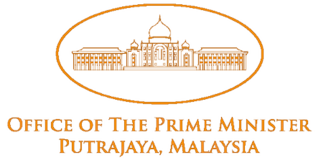
The prime minister of Malaysia is the head of government of Malaysia. The prime minister directs the executive branch of the federal government. The Yang di-Pertuan Agong appoints as the prime minister a member of Parliament (MP) who, in his opinion, is most likely to command the confidence of a majority of MPs; this person is usually the leader of the party winning the most seats in a general election.
The government of Colombia and the Revolutionary Armed Forces of Colombia—People's Army sign a revised peace deal, bringing an end to the country's more than 50-year-long civil war.

Colombia, officially the Republic of Colombia, is a country in South America with an insular region in North America. It is bordered by the Caribbean Sea to the north, Venezuela to the east, Brazil to the southeast, Ecuador and Peru to the south, the Pacific Ocean to the west and Panama to the northwest. Colombia comprises 32 departments and the Capital District of Bogotá, the country's largest city. It covers an area of 1,141,748 square kilometers (440,831 sq mi), with a population of 50 million. Colombia's cultural heritage reflects influences by various Amerindian civilizations, European settlement, enslaved Africans, as well as immigration from Europe and the Middle East. Spanish is the nation's official language, besides which over 70 languages are spoken.

The Revolutionary Armed Forces of Colombia – People's Army is a Marxist–Leninist guerrilla group involved in the continuing Colombian conflict starting in 1964. The FARC–EP was formed during the Cold War period as a peasant force promoting a political line of agrarianism and anti-imperialism. They are known to employ a variety of military tactics, in addition to more unconventional methods, including terrorism.
The Colombian peace process is the peace process between the Colombian government of President Juan Manuel Santos and the Revolutionary Armed Forces of Colombia (FARC–EP) to bring an end to the Colombian conflict, which eventually led to the Peace Agreements between the Colombian Government of Juan Manuel Santos and FARC-EP. Negotiations began in September 2012, and mainly took place in Havana, Cuba. Negotiators announced a final agreement to end the conflict and build a lasting peace on August 24, 2016. However, a referendum to ratify the deal on October 2, 2016 was unsuccessful after 50.2% of voters voted against the agreement with 49.8% voting in favor. Afterward, the Colombian government and the FARC signed a revised peace deal on November 24 and sent it to Congress for ratification instead of conducting a second referendum. Both houses of Congress ratified the revised peace agreement on November 29–30, 2016, thus marking an end to the conflict.
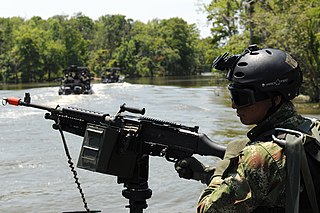
The Colombian conflict began on May 27, 1964, and is a low-intensity asymmetric war between the government of Colombia, far-right paramilitary groups, crime syndicates, and far-left guerrilla groups such as the Revolutionary Armed Forces of Colombia (FARC), the National Liberation Army (ELN) and the Popular Liberation Army (EPL), fighting each other to increase their influence in Colombian territory. Some of the most important international contributors to the Colombian conflict include multinational corporations, the United States, Cuba, and the drug trafficking industry.
A Russian Sukhoi Su-24 attack aircraft was shot down by a Turkish fighter jet after the former allegedly strayed into Turkish airspace and ignored warnings to change course.

The Sukhoi Su-24 is a supersonic, all-weather attack aircraft developed in the Soviet Union. The aircraft has a variable-sweep wing, twin-engines and a side-by-side seating arrangement for its crew of two. It was the first of the USSR's aircraft to carry an integrated digital navigation/attack system. It remains in service with the Russian Air Force, Syrian Air Force, Ukrainian Air Force, Algerian Air Force and various other air forces to which it was exported.

A Turkish Air Force F-16 fighter jet shot down a Russian Sukhoi Su-24M attack aircraft near the Syria–Turkey border on 24 November 2015. According to Turkey, the aircraft was fired upon while in Turkish airspace because it violated the border up to a depth of 2.19 kilometres for about 17 seconds after being warned to change its heading ten times over a period of five minutes before entering the airspace. The Russia Defence Ministry denied that the aircraft ever left Syrian airspace, claiming that their satellite data showed that the Sukhoi was about 1,000 metres (1,100 yd) inside Syrian airspace when it was shot down.
A Russian Air Force Sukhoi Su-24 fighter jet is shot down by the Turkish Air Force over the Syria–Turkey border, killing one of the two pilots; a Russian marine is also killed during a subsequent rescue effort.

The Russian Air Force is a branch of the Russian Aerospace Forces, the latter being formed on 1 August 2015 with the merging of the Russian Air Force and the Russian Aerospace Defence Forces. The modern VVS was originally established on 7 May 1992 following Boris Yeltsin's creation of the Ministry of Defence. However, the Russian Federation's air force can trace its lineage and traditions back to the Imperial Russian Air Service (1912–1917) and the Soviet Air Forces (1918–1991).

The Sukhoi Su-24 is a supersonic, all-weather attack aircraft developed in the Soviet Union. The aircraft has a variable-sweep wing, twin-engines and a side-by-side seating arrangement for its crew of two. It was the first of the USSR's aircraft to carry an integrated digital navigation/attack system. It remains in service with the Russian Air Force, Syrian Air Force, Ukrainian Air Force, Algerian Air Force and various other air forces to which it was exported.

A Turkish Air Force F-16 fighter jet shot down a Russian Sukhoi Su-24M attack aircraft near the Syria–Turkey border on 24 November 2015. According to Turkey, the aircraft was fired upon while in Turkish airspace because it violated the border up to a depth of 2.19 kilometres for about 17 seconds after being warned to change its heading ten times over a period of five minutes before entering the airspace. The Russia Defence Ministry denied that the aircraft ever left Syrian airspace, claiming that their satellite data showed that the Sukhoi was about 1,000 metres (1,100 yd) inside Syrian airspace when it was shot down.
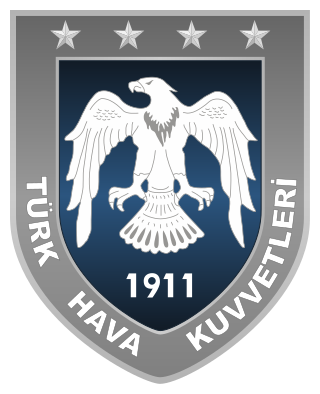
The Turkish Air Force is the aerial warfare service branch of the Turkish Armed Forces. The Turkish Air Force can trace its origins back to June 1911 when it was founded by the Ottoman Empire, however, the air force as it is known today did not come into existence until 1923 with the creation of the Republic of Turkey. It is considered to be the third largest airforce in NATO.

The border between the Syrian Arab Republic and the Republic of Turkey is about 909 kilometres (565 mi) long, and runs from the Mediterranean Sea in the west to the tripoint with Iraq in the east. It runs across Upper Mesopotamia for some 400 kilometres (250 mi), crossing the Euphrates and reaching as far as the Tigris. Much of the border follows the Southern Turkish stretch of the Baghdad Railway, roughly along the 37th parallel between the 37th and 42nd eastern meridians. In the west, it almost surrounds the Turkish Hatay Province, partly following the course of the Orontes River and reaching the Mediterranean coast at the foot of Jebel Aqra.
A terrorist attack on a hotel in Al-Arish, Egypt, kills at least seven people and injures 12 others.
The Arish hotel bombing was a terrorist attack on a hotel in the coastal city of Al-Arish, Egypt, on 24 November 2015. A group of militants approached the heavily guarded hotel with a car bomb, but Egyptian security forces opened fire at the vehicle, blowing it up before it could reach the building. One of the two attackers managed to get inside the hotel, where a number of people were injured and killed as a result of gunfire and a subsequent suicide bombing. Authorities reported at least seven dead, including two judges who had been in Al-Arish to supervise the country's second round of parliamentary elections, held the day before. The Islamic State's Wilayat Sinai offshoot claimed responsibility in a statement released later the same day.

ʻArish or el-ʻArīsh is the capital and largest city of the North Sinai Governorate of Egypt, as well as the largest city on the entire Sinai Peninsula, lying on the Mediterranean coast 344 kilometers (214 mi) northeast of Cairo. It borders the Gaza Strip and Israel.
An explosion on a bus carrying Tunisian Presidential Guard personnel in Tunisia's capital Tunis leaves at least 14 people dead.
On 24 November 2015, a bus carrying Tunisian presidential guards exploded, killing 12, on a principal road in Tunis, Tunisia. ISIL claimed responsibility for the attack. The bomber, who also died in the attack, was identified as Houssem Abdelli.
Tunisian Presidential Security is the apparatus responsible of the security of the President of Tunisia.

Tunis is the capital and largest city of Tunisia. The greater metropolitan area of Tunis, often referred to as "Grand Tunis", has about 2,700,000 inhabitants. As of 2020, it is the third-largest city in the Maghreb region and the eleventh-largest in the Arab world.
Iran signs an interim agreement with the P5+1 countries, limiting its nuclear program in exchange for reduced sanctions.
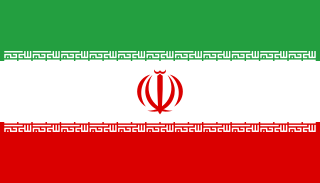
Iran, officially the Islamic Republic of Iran, and also called Persia, is a country in Western Asia. It is bordered by Iraq and Turkey to the west, by Azerbaijan and Armenia to the northwest, by the Caspian Sea and Turkmenistan to the north, by Afghanistan and Pakistan to the east, and by the Gulf of Oman and the Persian Gulf to the south. It covers an area of 1.64 million square kilometres, making it the 17th-largest country. Iran has a population of 86 million, making it the 17th-most populous country in the world, and the second-largest in the Middle East. Its largest cities, in descending order, are the capital Tehran, Mashhad, Isfahan, Karaj, Shiraz, and Tabriz.
On 24 November 2013, the Joint Plan of Action, also known as the Geneva interim agreement, was a pact signed between Iran and the P5+1 countries in Geneva, Switzerland. It consists of a short-term freeze of portions of Iran's nuclear program in exchange for decreased economic sanctions on Iran, as the countries work towards a long-term agreement. It represented the first formal agreement between the United States and Iran in 34 years. Implementation of the agreement began 20 January 2014.

The P5+1 refers to the UN Security Council's five permanent members ; namely China, France, Russia, the United Kingdom, and the United States; plus Germany. The P5+1 is often referred to as the E3+3 by European countries. It is a group of six world powers which, in 2006, joined together in diplomatic efforts with Iran with regard to its nuclear program.
The nuclear program of Iran is an ongoing scientific effort by Iran to research nuclear technology that can be used to make nuclear weapons. Iran has several research sites, two uranium mines, a research reactor, and uranium processing facilities that include three known uranium enrichment plants.
There have been a number of sanctions against Iran imposed by a number of countries, especially the United States, and international entities. Iran was the most sanctioned country in the world until it was surpassed by Russia following its invasion of neighboring Ukraine in February 2022.
A fire at a clothing factory in the Ashulia district on the outskirts of Dhaka, Bangladesh, killed at least 117 people.
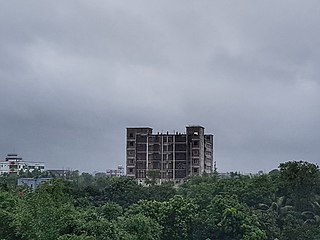
The 2012 Dhaka garment factory fire broke out on 24 November 2012, in the Tazreen Fashion factory in the Ashulia district on the outskirts of Dhaka, Bangladesh. At least 117 people were confirmed dead in the fire, and over 200 were injured, making it the deadliest factory fire in the nation's history. The fire was initially presumed to be caused by an electrical short circuit, but Prime Minister Sheikh Hasina has since suspected that the fire had been arson and an act of "sabotage" due to the occurrence of previous comparable events. This event and others similar to it have led to numerous proposed reforms in workers' rights and safety laws in Bangladesh.

Ashulia is a suburban area near Dhaka, the capital city of Bangladesh. Nearby areas are Savar, Savar DOHS, and Tongi. The attractive view of Ashulia lake and vast paddy fields of Ashulia makes it a popular tourist spot. Two major theme parks of Bangladesh namely Fantasy Kingdom and Nandan Park are also located at Ashulia. A thana under Dhaka district has been established here in the recent years.
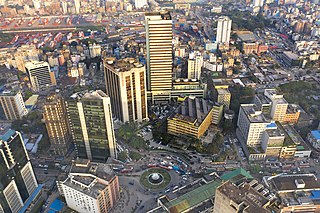
Dhaka, formerly known as Dacca, is the capital and largest city of Bangladesh, as well as the world's largest Bengali-speaking city. It is the eighth largest and sixth most densely populated city in the world with a population of 8.9 million residents as of 2011, and a population of over 21.7 million residents in the Greater Dhaka Area. According to a Demographia survey, Dhaka has the most densely populated built-up urban area in the world, and is popularly described as such in the news media.Dhaka is one of the major cities of South Asia and a major global Muslim-majority city. Dhaka ranks 39th in the world and 3rd in South Asia in terms of urban GDP. As part of the Bengal delta, the city is bounded by the Buriganga River, Turag River, Dhaleshwari River and Shitalakshya River.
A fire at a clothing factory in Dhaka, Bangladesh, kills at least 112 people.

The 2012 Dhaka garment factory fire broke out on 24 November 2012, in the Tazreen Fashion factory in the Ashulia district on the outskirts of Dhaka, Bangladesh. At least 117 people were confirmed dead in the fire, and over 200 were injured, making it the deadliest factory fire in the nation's history. The fire was initially presumed to be caused by an electrical short circuit, but Prime Minister Sheikh Hasina has since suspected that the fire had been arson and an act of "sabotage" due to the occurrence of previous comparable events. This event and others similar to it have led to numerous proposed reforms in workers' rights and safety laws in Bangladesh.

Dhaka, formerly known as Dacca, is the capital and largest city of Bangladesh, as well as the world's largest Bengali-speaking city. It is the eighth largest and sixth most densely populated city in the world with a population of 8.9 million residents as of 2011, and a population of over 21.7 million residents in the Greater Dhaka Area. According to a Demographia survey, Dhaka has the most densely populated built-up urban area in the world, and is popularly described as such in the news media.Dhaka is one of the major cities of South Asia and a major global Muslim-majority city. Dhaka ranks 39th in the world and 3rd in South Asia in terms of urban GDP. As part of the Bengal delta, the city is bounded by the Buriganga River, Turag River, Dhaleshwari River and Shitalakshya River.

Bangladesh, officially the People's Republic of Bangladesh, is a country in South Asia. It is the eighth-most populous country in the world, with a population exceeding 165 million people in an area of 148,460 square kilometres (57,320 sq mi). Bangladesh is among the most densely populated countries in the world, and shares land borders with India to the west, north, and east, and Myanmar to the southeast; to the south it has a coastline along the Bay of Bengal. It is narrowly separated from Bhutan and Nepal by the Siliguri Corridor; and from China by the Indian state of Sikkim in the north. Dhaka, the capital and largest city, is the nation's political, financial and cultural centre. Chittagong, the second-largest city, is the busiest port on the Bay of Bengal. The official language is Bengali, one of the easternmost branches of the Indo-European language family.
The Avdhela Project, an Aromanian digital library and cultural initiative, is launched in Bucharest, Romania.

The Avdhela Project, also known as the Library of Aromanian Culture, is a digital library and cultural initiative developed by the Predania Association. The Avdhela Project aims to collect, edit and open to the public academic works on the Aromanians based on a series of specific principles. It was launched on 24 November 2009 in Bucharest, Romania. Public events, the promotion of cultural works and the publication of audiovisual material are other activities carried out by the Avdhela Project in support of Aromanian culture.

The Aromanians are an ethnic group native to the southern Balkans who speak Aromanian, an Eastern Romance language. They traditionally live in central and southern Albania, south-western Bulgaria, northern and central Greece and North Macedonia, and can currently be found in central and southern Albania, south-western Bulgaria, south-western North Macedonia, northern and central Greece, southern Serbia and south-eastern Romania. An Aromanian diaspora living outside these places also exists. The Aromanians are known by several other names, such as "Vlachs" or "Macedo-Romanians".

Bucharest is the capital and largest city of Romania, as well as its cultural, industrial, and financial centre. It is located in the southeast of the country, on the banks of the Dâmbovița River, less than 60 km (37.3 mi) north of the Danube River and the Bulgarian border.
The Avdhela Project, an Aromanian digital library and cultural initiative, is founded in Bucharest, Romania.

The Avdhela Project, also known as the Library of Aromanian Culture, is a digital library and cultural initiative developed by the Predania Association. The Avdhela Project aims to collect, edit and open to the public academic works on the Aromanians based on a series of specific principles. It was launched on 24 November 2009 in Bucharest, Romania. Public events, the promotion of cultural works and the publication of audiovisual material are other activities carried out by the Avdhela Project in support of Aromanian culture.

The Aromanians are an ethnic group native to the southern Balkans who speak Aromanian, an Eastern Romance language. They traditionally live in central and southern Albania, south-western Bulgaria, northern and central Greece and North Macedonia, and can currently be found in central and southern Albania, south-western Bulgaria, south-western North Macedonia, northern and central Greece, southern Serbia and south-eastern Romania. An Aromanian diaspora living outside these places also exists. The Aromanians are known by several other names, such as "Vlachs" or "Macedo-Romanians".
A digital library, also called an online library, an internet library, a digital repository, or a digital collection is an online database of digital objects that can include text, still images, audio, video, digital documents, or other digital media formats or a library accessible through the internet. Objects can consist of digitized content like print or photographs, as well as originally produced digital content like word processor files or social media posts. In addition to storing content, digital libraries provide means for organizing, searching, and retrieving the content contained in the collection. Digital libraries can vary immensely in size and scope, and can be maintained by individuals or organizations. The digital content may be stored locally, or accessed remotely via computer networks. These information retrieval systems are able to exchange information with each other through interoperability and sustainability.

Bucharest is the capital and largest city of Romania, as well as its cultural, industrial, and financial centre. It is located in the southeast of the country, on the banks of the Dâmbovița River, less than 60 km (37.3 mi) north of the Danube River and the Bulgarian border.
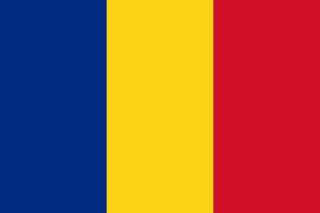
Romania is a country located at the crossroads of Central, Eastern, and Southeast Europe. It borders Bulgaria to the south, Ukraine to the north, Hungary to the west, Serbia to the southwest, Moldova to the east, and the Black Sea to the southeast. It has a predominantly temperate-continental climate, and an area of 238,397 km2 (92,046 sq mi), with a population of around 19 million. Romania is the twelfth-largest country in Europe and the sixth-most populous member state of the European Union. Its capital and largest city is Bucharest, followed by Iași, Cluj-Napoca, Timișoara, Constanța, Craiova, Brașov, and Galați.
China Southern Airlines Flight 3943 crashes on approach to Guilin Qifengling Airport in Guilin, China, killing all 141 people on board.

China Southern Airlines Flight 3943 was a China Southern Airlines flight from the former Guangzhou Baiyun International Airport, Guangzhou to Guilin Qifengling Airport, Guilin, China on 24 November 1992. It crashed on descent to Guilin Airport, killing all 141 people aboard.

Guilin Qifengling Airport is a military airport in Guilin, Guangxi, China. Built in 1958, the airport originally served all commercial traffic to Guilin. It was poorly equipped to handle the rapid increase in tourism to the city during the 1990s. As a result, Liangjiang International Airport was opened in 1996 and all commercial flights shifted to it.

Guilin is a prefecture-level city in the northeast of China's Guangxi Zhuang Autonomous Region. It is situated on the west bank of the Li River and borders Hunan to the north. Its name means "forest of sweet osmanthus", owing to the large number of fragrant sweet osmanthus trees located in the region. The city has long been renowned for its scenery of karst topography.

China, officially the People's Republic of China (PRC), is a country in East Asia. It is the world's most populous country, with a population exceeding 1.4 billion, slightly ahead of India. China spans the equivalent of five time zones and borders fourteen countries by land, the most of any country in the world, tied with Russia. China also has a narrow maritime boundary with the disputed Taiwan. Covering an area of approximately 9.6 million square kilometers (3,700,000 sq mi), it is the world's third largest country by total land area. The country consists of 22 provinces, five autonomous regions, four municipalities, and two Special Administrative Regions. The national capital is Beijing, and the most populous city and financial center is Shanghai.
After a week of mass protests against the Communist regime known as the Velvet Revolution, Miloš Jakeš and the entire Politburo of the Czechoslovak Communist Party resign from office. This brings an effective end to Communist rule in Czechoslovakia.

The Velvet Revolution or Gentle Revolution was a non-violent transition of power in what was then Czechoslovakia, occurring from 17 November to 28 November 1989. Popular demonstrations against the one-party government of the Communist Party of Czechoslovakia included students and older dissidents. The result was the end of 41 years of one-party rule in Czechoslovakia, and the subsequent dismantling of the command economy and conversion to a parliamentary republic.

Miloš Jakeš was a Czech communist politician. He was General Secretary of the Communist Party of Czechoslovakia from 1987 until 1989.
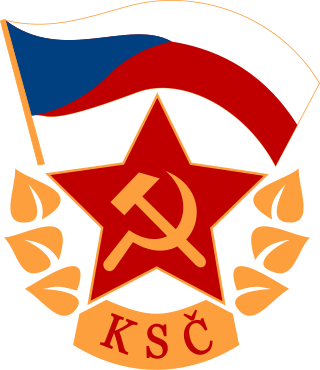
The Communist Party of Czechoslovakia was a Communist and Marxist–Leninist political party in Czechoslovakia that existed between 1921 and 1992. It was a member of the Comintern. Between 1929 and 1953, it was led by Klement Gottwald. The KSČ was the sole governing party in the Czechoslovak Socialist Republic though it was a leading party along with the Slovak branch and four other legally permitted non-communist parties. After its election victory in 1946, it seized power in the 1948 Czechoslovak coup d'état and established a one-party state allied with the Soviet Union. Nationalization of virtually all private enterprises followed.
From the Communist coup d'état in February 1948 to the Velvet Revolution in 1989, Czechoslovakia was ruled by the Communist Party of Czechoslovakia. The country belonged to the Eastern Bloc and was a member of the Warsaw Pact and of Comecon. During the era of Communist Party rule, thousands of Czechoslovaks faced political persecution for various offences, such as trying to emigrate across the Iron Curtain.
A magnitude 7.3 earthquake struck eastern Turkey, destroying 80 per cent of the buildings in the area, with at least 4,000 casualties.

The 1976 Çaldıran–Muradiye earthquake occurred at 14:22 local time on 24 November. The epicenter was located near Çaldıran, 20 km northeast of Muradiye, in the Van Province of eastern Turkey. The earthquake had a magnitude of 7.3 with a maximum intensity of X (Extreme) on the Mercalli intensity scale. The area of severe damage, where over 80% of the buildings were destroyed, covered an area of 2,000 square kilometres. There were between 4,000 and 5,000 casualties.
The Çaldıran–Muradiye earthquake in eastern Turkey kills between 4,000 and 5,000 people.

The 1976 Çaldıran–Muradiye earthquake occurred at 14:22 local time on 24 November. The epicenter was located near Çaldıran, 20 km northeast of Muradiye, in the Van Province of eastern Turkey. The earthquake had a magnitude of 7.3 with a maximum intensity of X (Extreme) on the Mercalli intensity scale. The area of severe damage, where over 80% of the buildings were destroyed, covered an area of 2,000 square kilometres. There were between 4,000 and 5,000 casualties.
Donald Johanson and Tom Gray discover the 40% complete Australopithecus afarensis skeleton, nicknamed "Lucy" (after The Beatles song "Lucy in the Sky with Diamonds"), in the Awash Valley of Ethiopia's Afar Depression.

Donald Carl Johanson is an American paleoanthropologist. He is known for discovering, with Yves Coppens and Maurice Taieb, the fossil of a female hominin australopithecine known as "Lucy" in the Afar Triangle region of Hadar, Ethiopia.

Australopithecus afarensis is an extinct species of australopithecine which lived from about 3.9–2.9 million years ago (mya) in the Pliocene of East Africa. The first fossils were discovered in the 1930s, but major fossil finds would not take place until the 1970s. From 1972 to 1977, the International Afar Research Expedition—led by anthropologists Maurice Taieb, Donald Johanson and Yves Coppens—unearthed several hundreds of hominin specimens in Hadar, Ethiopia, the most significant being the exceedingly well-preserved skeleton AL 288-1 ("Lucy") and the site AL 333. Beginning in 1974, Mary Leakey led an expedition into Laetoli, Tanzania, and notably recovered fossil trackways. In 1978, the species was first described, but this was followed by arguments for splitting the wealth of specimens into different species given the wide range of variation which had been attributed to sexual dimorphism. A. afarensis probably descended from A. anamensis and is hypothesised to have given rise to Homo, though the latter is debated.

AL 288-1, commonly known as Lucy, is a collection of several hundred pieces of fossilized bone representing 40 percent of a female of the hominin species Australopithecus afarensis. In Ethiopia, the assembly is also known as Dinkinesh, which means "you are marvelous" in Amharic. Lucy was discovered in 1974 in Africa, at Hadar, a site in the Awash Valley of the Afar Triangle in Ethiopia, by paleoanthropologist Donald Johanson of the Cleveland Museum of Natural History.

The Beatles were an English rock band, formed in Liverpool in 1960, that comprised John Lennon, Paul McCartney, George Harrison and Ringo Starr. They are regarded as the most influential band of all time and were integral to the development of 1960s counterculture and popular music's recognition as an art form. Rooted in skiffle, beat and 1950s rock 'n' roll, their sound incorporated elements of classical music and traditional pop in innovative ways; the band also explored music styles ranging from folk and Indian music to psychedelia and hard rock. As pioneers in recording, songwriting and artistic presentation, the Beatles revolutionised many aspects of the music industry and were often publicised as leaders of the era's youth and sociocultural movements.

"Lucy in the Sky with Diamonds" is a song by the English rock band the Beatles from their 1967 album Sgt. Pepper's Lonely Hearts Club Band. It was written primarily by John Lennon and credited to the Lennon–McCartney songwriting partnership. Lennon's son Julian inspired the song with a nursery school drawing that he called "Lucy – in the sky with diamonds". Shortly before the album's release, speculation arose that the first letter of each of the nouns in the title intentionally spelled "LSD", the initialism commonly used for the hallucinogenic drug lysergic acid diethylamide. Lennon repeatedly denied that he had intended it as a drug song, and attributed the song's fantastical imagery to his reading of Lewis Carroll's Alice in Wonderland books.

The Awash is a major river of Ethiopia. Its course is entirely contained within the boundaries of Ethiopia and empties into a chain of interconnected lakes that begin with Lake Gargori and end with Lake Abbe on the border with Djibouti, some 100 kilometres from the head of the Gulf of Tadjoura. It is the principal stream of an endorheic drainage basin covering parts of the Amhara, Oromia and Somali Regions, as well as the southern half of the Afar Region.

Ethiopia, officially the Federal Democratic Republic of Ethiopia, is a landlocked country in the Horn of Africa. It shares borders with Eritrea to the north, Djibouti to the northeast, Somalia to the east and northeast, Kenya to the south, South Sudan to the west, and Sudan to the northwest. Ethiopia has a total area of 1,100,000 square kilometres. As of 2022, it is home to around 113.5 million inhabitants, making it the 12th-most populous country in the world and the 2nd-most populous in Africa after Nigeria. The national capital and largest city, Addis Ababa, lies several kilometres west of the East African Rift that splits the country into the African and Somali tectonic plates.
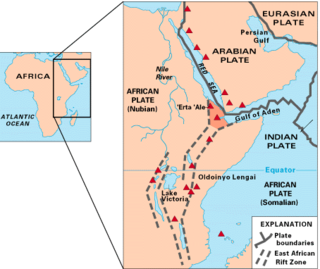
The Afar Triangle is a geological depression caused by the Afar Triple Junction, which is part of the Great Rift Valley in East Africa. The region has disclosed fossil specimens of the very earliest hominins; that is, the earliest of the human clade, and it is thought by some paleontologists to be the cradle of the evolution of humans. The Depression overlaps the borders of Eritrea, Djibouti and the entire Afar Region of Ethiopia; and it contains the lowest point in Africa, Lake Assal, Djibouti, at 155 m (509 ft) below sea level.
A national speed limit is imposed on the Autobahn in Germany because of the 1973 oil crisis. The speed limit lasts only four months.

The Autobahn is the federal controlled-access highway system in Germany. The official German term is Bundesautobahn, which translates as 'federal motorway'. The literal meaning of the word Bundesautobahn is 'Federal Auto(mobile) Track'.

The 1973 oil crisis or first oil crisis began in October 1973 when the members of the Organization of Arab Petroleum Exporting Countries (OAPEC), led by Saudi Arabia, proclaimed an oil embargo. The embargo was targeted at nations that had supported Israel during the Yom Kippur War. The initial nations targeted were Canada, Japan, the Netherlands, the United Kingdom and the United States, though the embargo also later extended to Portugal, Rhodesia and South Africa. By the end of the embargo in March 1974, the price of oil had risen nearly 300%, from US$3 per barrel ($19/m3) to nearly $12 per barrel ($75/m3) globally; US prices were significantly higher. The embargo caused an oil crisis, or "shock", with many short- and long-term effects on global politics and the global economy. It was later called the "first oil shock", followed by the 1979 oil crisis, termed the "second oil shock".
After collecting a ransom payout of $200,000, D. B. Cooper (depicted) parachuted out of the rear stairway of the airplane he had hijacked over the Pacific Northwest and disappeared.

D. B. Cooper is a media epithet for an unidentified man who hijacked Northwest Orient Airlines Flight 305, a Boeing 727 aircraft operated by Northwest Orient Airlines, in United States airspace on November 24, 1971. During the flight from Portland, Oregon, to Seattle, Washington, the hijacker told a flight attendant he was armed with a bomb, demanded $200,000 in ransom, and requested four parachutes upon landing in Seattle. After releasing the passengers in Seattle, the hijacker instructed the flight crew to refuel the aircraft and begin a second flight to Mexico City, with a refueling stop in Reno, Nevada. Approximately thirty minutes after taking off from Seattle, the hijacker opened the aircraft's aft door, deployed the staircase, and parachuted into the night over southwestern Washington. The hijacker was never identified, apprehended, or found.
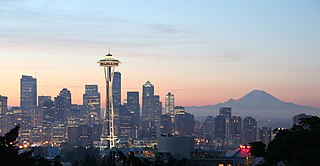
The Pacific Northwest is a geographic region in western North America bounded by its coastal waters of the Pacific Ocean to the west and, loosely, by the Rocky Mountains to the east. Though no official boundary exists, the most common conception includes the U.S. states of Oregon, Washington, and Idaho, and the Canadian province of British Columbia. Some broader conceptions reach north into Alaska and Yukon, south into northern California, and east into western Montana. Other conceptions may be limited to the coastal areas west of the Cascade and Coast mountains. The variety of definitions can be attributed to partially overlapping commonalities of the region's history, culture, geography, society, ecosystems, and other factors.
During a severe thunderstorm over Washington state, a hijacker calling himself Dan Cooper (aka D. B. Cooper) parachutes from a Northwest Orient Airlines plane with $200,000 in ransom money. He has never been found.
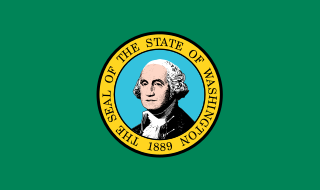
Washington, officially the State of Washington, is a state in the Pacific Northwest region of the Western United States. Named for George Washington—the first U.S. president—the state was formed from the western part of the Washington Territory, which was ceded by the British Empire in 1846, by the Oregon Treaty in the settlement of the Oregon boundary dispute. The state is bordered on the west by the Pacific Ocean, Oregon to the south, Idaho to the east, and the Canadian province of British Columbia to the north. It was admitted to the Union as the 42nd state in 1889. Olympia is the state capital; the state's largest city is Seattle. Washington is often referred to as Washington state to distinguish it from the nation's capital, Washington, D.C.
Aircraft hijacking is the unlawful seizure of an aircraft by an individual or a group. Dating from the earliest of hijackings, most cases involve the pilot being forced to fly according to the hijacker's demands. There have also been incidents where the hijackers have overpowered the flight crew, made unauthorized entry into cockpit and flown them into buildings – most notably in the September 11 attacks – and in several cases, planes have been hijacked by the official pilot or co-pilot; e.g., Germanwings Flight 9525.

D. B. Cooper is a media epithet for an unidentified man who hijacked Northwest Orient Airlines Flight 305, a Boeing 727 aircraft operated by Northwest Orient Airlines, in United States airspace on November 24, 1971. During the flight from Portland, Oregon, to Seattle, Washington, the hijacker told a flight attendant he was armed with a bomb, demanded $200,000 in ransom, and requested four parachutes upon landing in Seattle. After releasing the passengers in Seattle, the hijacker instructed the flight crew to refuel the aircraft and begin a second flight to Mexico City, with a refueling stop in Reno, Nevada. Approximately thirty minutes after taking off from Seattle, the hijacker opened the aircraft's aft door, deployed the staircase, and parachuted into the night over southwestern Washington. The hijacker was never identified, apprehended, or found.

Northwest Airlines Corp. (NWA) was a major American airline founded in 1926 and absorbed into Delta Air Lines, Inc. by a merger. The merger, approved on October 29, 2008, made Delta the largest airline in the world until the American Airlines-US Airways merger on December 9, 2013. Northwest continued to operate under its own name and brand until the integration of the carriers was completed on January 31, 2010.
Apollo program: The Apollo 12 command module splashes down safely in the Pacific Ocean, ending the second manned mission to land on the Moon.

The Apollo program, also known as Project Apollo, was the third United States human spaceflight program carried out by the National Aeronautics and Space Administration (NASA), which succeeded in preparing and landing the first humans on the Moon from 1968 to 1972. It was first conceived in 1960 during President Dwight D. Eisenhower's administration as a three-person spacecraft to follow the one-person Project Mercury, which put the first Americans in space. Apollo was later dedicated to President John F. Kennedy's national goal for the 1960s of "landing a man on the Moon and returning him safely to the Earth" in an address to Congress on May 25, 1961. It was the third US human spaceflight program to fly, preceded by the two-person Project Gemini conceived in 1961 to extend spaceflight capability in support of Apollo.

Apollo 12 was the sixth crewed flight in the United States Apollo program and the second to land on the Moon. It was launched on November 14, 1969, by NASA from the Kennedy Space Center, Florida. Commander Charles "Pete" Conrad and Lunar Module Pilot Alan L. Bean performed just over one day and seven hours of lunar surface activity while Command Module Pilot Richard F. Gordon remained in lunar orbit.
Bulgarian TABSO Flight 101 crashes near Bratislava, Czechoslovakia, killing all 82 people on board.

TABSO Flight 101 was a scheduled service of the Bulgarian national airline from Sofia, Bulgaria via Budapest, Hungary and Prague, Czechoslovakia to East Berlin in the German Democratic Republic. The service was operated by the airline's 1960s' flagship equipment, the Ilyushin Il-18B airliner. On Thursday 24 November 1966, the service crashed near Bratislava, the capital of Slovakia, with the loss of 82 lives. The crash remains Slovakia's deadliest aviation disaster.

Bratislava is the capital and largest city of Slovakia. Officially, the population of the city is about 475,000; however, it is estimated to be more than 660,000 — approximately 140% of the official figures. Bratislava is in southwestern Slovakia at the foot of the Little Carpathians, occupying both banks of the River Danube and the left bank of the River Morava. Bordering Austria and Hungary, it is the only national capital that borders two sovereign states.
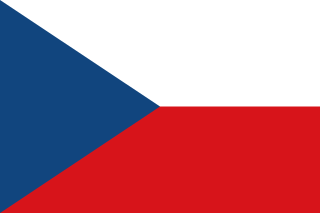
The Czechoslovak Socialist Republic, formerly known from 1948 to 1960 as the Czechoslovak Republic or Fourth Czechoslovak Republic, was the official name of Czechoslovakia from 1960 to 29 March 1990, when it was renamed the Czechoslovak Federative Republic. On 23 April 1990, it became the Czech and Slovak Federative Republic. From 1948 until the end of November 1989, the country was under Communist rule and was regarded as a satellite state in the Soviet sphere of interest.
Joseph-Désiré Mobutu seizes power in the Democratic Republic of the Congo and becomes President; he rules the country (which he renames Zaire in 1971) for over 30 years, until being overthrown by rebels in 1997.

Mobutu Sese Seko Kuku Ngbendu Wa Za Banga was a Congolese politician and military officer who was the president of Zaire from 1965 to 1997. He also served as Chairman of the Organisation of African Unity from 1967 to 1968. During the Congo Crisis, Mobutu, serving as Chief of Staff of the Army and supported by Belgium and the United States, deposed the democratically elected government of left-wing nationalist Patrice Lumumba in 1960. Mobutu installed a government that arranged for Lumumba's execution in 1961, and continued to lead the country's armed forces until he took power directly in a second coup in 1965.
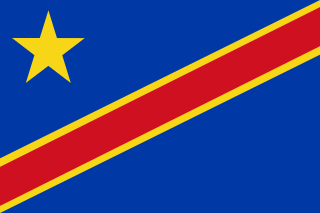
The Republic of the Congo was a sovereign state in Central Africa, created with the independence of the Belgian Congo in 1960. From 1960 to 1966, the country was also known as Congo-Léopoldville to distinguish it from its northwestern neighbor, which is also called the Republic of the Congo, alternatively known as "Congo-Brazzaville". In 1964, the state's official name was changed to the Democratic Republic of the Congo, but the two countries continued to be distinguished by their capitals; with the renaming of Léopoldville as Kinshasa in 1966, it became also known as Congo-Kinshasa. After Joseph Désiré Mobutu, renamed Mobutu Sese Seko in 1972, commander-in-chief of the national army, seized control of the country, it became the Republic of Zaire in 1971. It would again become the Democratic Republic of the Congo in 1997. The period between 1960 and 1964 is referred to as the First Congolese Republic.

This is a list of presidents of the Democratic Republic of the Congo since the country's independence in 1960.
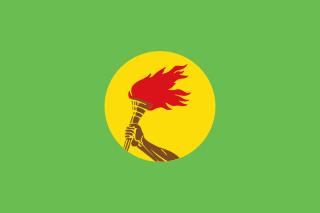
Zaire, officially the Republic of Zaire, was a Congolese state from 1971 to 1997 in Central Africa that was previously and is now again known as the Democratic Republic of the Congo. Zaire was, by area, the third-largest country in Africa, and the 11th-largest country in the world. With a population of over 23 million inhabitants, Zaire was the most-populous officially Francophone country in Africa, as well as one of the most populous in Africa.
During a live television broadcast, businessman Jack Ruby shot and fatally wounded Lee Harvey Oswald, who assassinated U.S. president John F. Kennedy, fueling numerous conspiracy theories.
Jack Leon Ruby was an American nightclub owner and alleged associate of the Chicago Outfit who murdered Lee Harvey Oswald on November 24, 1963, two days after Oswald was accused of the assassination of President John F. Kennedy. A Dallas jury found Ruby guilty of murdering Oswald and sentenced him to death. Ruby's conviction was later appealed, and he was to be granted a new trial; however, he became ill in prison and died of a pulmonary embolism from lung cancer on January 3, 1967.

Lee Harvey Oswald was a U.S. Marine veteran who assassinated John F. Kennedy, the 35th president of the United States, on November 22, 1963.

John F. Kennedy, the 35th president of the United States, was assassinated on Friday, November 22, 1963, at 12:30 p.m. CST in Dallas, Texas, while riding in a presidential motorcade through Dealey Plaza. Kennedy was in the vehicle with his wife, Jacqueline, Texas Governor John Connally, and Connally's wife, Nellie, when he was fatally shot from the nearby Texas School Book Depository by Lee Harvey Oswald, a former US Marine. Governor Connally was seriously wounded in the attack. The motorcade rushed to Parkland Memorial Hospital, where Kennedy was pronounced dead about 30 minutes after the shooting; Connally recovered.

The assassination of President John F. Kennedy on November 22, 1963 spawned numerous conspiracy theories. These theories allege the involvement of the CIA, the Mafia, Vice President Lyndon B. Johnson, Cuban Prime Minister Fidel Castro, the KGB, or some combination of these individuals and entities. The original FBI investigation and Warren Commission report, as well as an alleged "benign CIA cover-up", have led to the claim that the federal government deliberately covered up crucial information in the aftermath of the assassination. Former Los Angeles District Attorney Vincent Bugliosi estimated that a total of 42 groups, 82 assassins, and 214 people had been accused at one time or another in various conspiracy scenarios.
Lee Harvey Oswald, the assassin of President John F. Kennedy, is killed by Jack Ruby.

Lee Harvey Oswald was a U.S. Marine veteran who assassinated John F. Kennedy, the 35th president of the United States, on November 22, 1963.
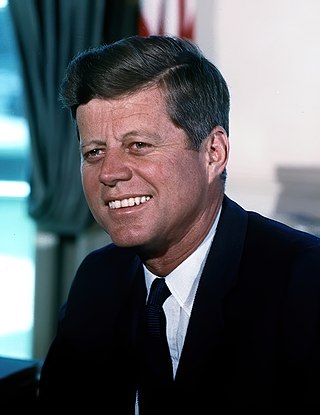
John Fitzgerald Kennedy, often referred to by his initials JFK and the nickname Jack, was an American politician who served as the 35th president of the United States from 1961 until his assassination near the end of his third year in office. Kennedy was the youngest person to assume the presidency by election. He was also the youngest president at the end of his tenure. Kennedy served at the height of the Cold War, and the majority of his work as president concerned relations with the Soviet Union and Cuba. A Democrat, he represented Massachusetts in both houses of the U.S. Congress prior to his presidency.
Jack Leon Ruby was an American nightclub owner and alleged associate of the Chicago Outfit who murdered Lee Harvey Oswald on November 24, 1963, two days after Oswald was accused of the assassination of President John F. Kennedy. A Dallas jury found Ruby guilty of murdering Oswald and sentenced him to death. Ruby's conviction was later appealed, and he was to be granted a new trial; however, he became ill in prison and died of a pulmonary embolism from lung cancer on January 3, 1967.
Cold War: The West Berlin branch of the Socialist Unity Party of Germany forms a separate party, the Socialist Unity Party of West Berlin.

The Cold War is a term commonly used to refer to a period of geopolitical tension between the United States and the Soviet Union and their respective allies, the Western Bloc and the Eastern Bloc. The term cold war is used because there was no large-scale fighting directly between the two superpowers, but they each supported major regional conflicts known as proxy wars. The conflict was based around the ideological and geopolitical struggle for global influence by these two superpowers, following their temporary alliance and victory against Nazi Germany and Imperial Japan in 1945. Aside from the nuclear arsenal development and conventional military deployment, the struggle for dominance was expressed via indirect means such as psychological warfare, propaganda campaigns, espionage, far-reaching embargoes, rivalry at sports events, and technological competitions such as the Space Race.

West Berlin was a political enclave which comprised the western part of Berlin during the years of the Cold War. Although West Berlin was not legally part of West Germany, lacked any sovereignty, and was under military occupation until German reunification in 1990, the territory was claimed by the Federal Republic of Germany (FRG) which was heavily disputed by the Soviet Union and other Eastern Bloc countries. However, West Berlin aligned itself politically with the FRG on 23 May 1949 and was directly or indirectly represented in its federal institutions.

The Socialist Unity Party of Germany, often known in English as the East German Communist Party, was the founding and ruling party of the German Democratic Republic from the country's foundation in October 1949 until its dissolution after the Peaceful Revolution in 1989. It was a Marxist–Leninist communist party, established in April 1946 as a merger between the East German branches of the Communist Party of Germany and Social Democratic Party of Germany.

The Socialist Unity Party of West Berlin was a communist party in West Berlin. The party was founded on 24 November 1962, when the West Berlin local organization of the Socialist Unity Party of Germany (SED) was separated from the main party. Until 1969, the party was known as the Socialist Unity Party of Germany – West Berlin. Gerhard Danelius was the chairman of the party until 1978.
The influential British satirical television programme That Was the Week That Was is first broadcast.
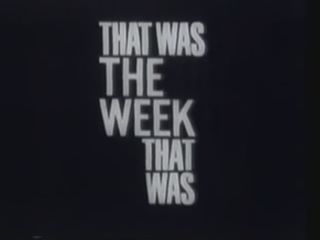
That Was the Week That Was, informally TWTWTW or TW3, is a satirical television comedy programme that aired on BBC Television in 1962 and 1963. It was devised, produced, and directed by Ned Sherrin and Jack Duncan, and presented by David Frost.
The "Great Appalachian Storm", a large extratropical cyclone, struck the east coast of the United States before moving northeast.

The Great Appalachian Storm of November 1950 was a large extratropical cyclone which moved through the Eastern United States, causing blizzard conditions along the western slopes of the Appalachian Mountains and significant winds and heavy rainfall east of the mountains. Hurricane-force winds, peaking at 110 miles per hour (180 km/h) in Concord, New Hampshire, and 160 mph (260 km/h) in the highlands of New England, disrupted power to 1 million customers during the event.
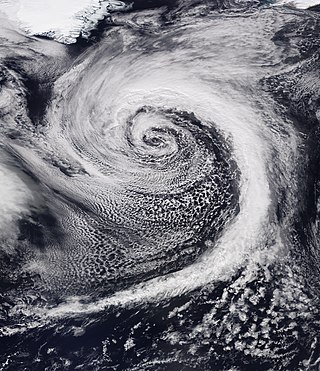
Extratropical cyclones, sometimes called mid-latitude cyclones or wave cyclones, are low-pressure areas which, along with the anticyclones of high-pressure areas, drive the weather over much of the Earth. Extratropical cyclones are capable of producing anything from cloudiness and mild showers to severe gales, thunderstorms, blizzards, and tornadoes. These types of cyclones are defined as large scale (synoptic) low pressure weather systems that occur in the middle latitudes of the Earth. In contrast with tropical cyclones, extratropical cyclones produce rapid changes in temperature and dew point along broad lines, called weather fronts, about the center of the cyclone.
World War II: The 73rd Bombardment Wing launches the first attack on Tokyo from the Northern Mariana Islands.

The 73d Air Division is an inactive United States Air Force unit. Its last assignment was with Air Defense Command at Tyndall Air Force Base, Florida, where it was inactivated on 1 April 1966.

The Bombing of Tokyo was a series of firebombing air raids by the United States Army Air Force during the Pacific campaigns of World War II. Operation Meetinghouse, which was conducted on the night of 9–10 March 1945, is the single most destructive bombing raid in human history. 16 square miles of central Tokyo were destroyed, leaving an estimated 100,000 civilians dead and over one million homeless. In comparison, the atomic bombing of Nagasaki resulted in the immediate death of between 39,000 and 80,000 people.
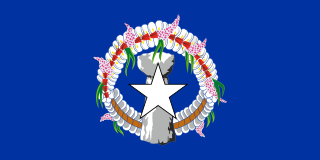
The Northern Mariana Islands, officially the Commonwealth of the Northern Mariana Islands, is an unincorporated territory and commonwealth of the United States consisting of 14 islands in the northwestern Pacific Ocean. The CNMI includes the 14 northernmost islands in the Mariana Archipelago; the southernmost island, Guam, is a separate U.S. territory.
World War II: Following the American capture of Makin Atoll, USS Liscome Bay was sunk by a torpedo from Japanese submarine I-175, killing 644.

World War II or the Second World War, often abbreviated as WWII or WW2, was a world war that lasted from 1939 to 1945. It involved the vast majority of the world's countries—including all of the great powers—forming two opposing military alliances: the Allies and the Axis powers. World War II was a total war that directly involved more than 100 million personnel from more than 30 countries.

The Battle of Makin was an engagement of the Pacific campaign of World War II, fought from 20 to 24 November 1943, on Makin Atoll in the Gilbert Islands.

USS Liscome Bay (ACV/CVE-56) was the second of fifty Casablanca-class escort carriers built to serve the United States Navy during World War II. Launched in April 1943 and commissioned the following August, she was named for Liscome Bay in Dall Island in the Alexander Archipelago of Alaska. On 24 November 1943, her munitions were catastrophically detonated by a torpedo attack by the Japanese submarine I-175 while she was acting as the flagship of Carrier Division 24, which was supporting operations on Makin. She quickly sank with the loss of 644 men. Her loss is the deadliest sinking of a carrier in the history of the United States Navy.

A modern torpedo is an underwater ranged weapon launched above or below the water surface, self-propelled towards a target, and with an explosive warhead designed to detonate either on contact with or in proximity to the target. Historically, such a device was called an automotive, automobile, locomotive, or fish torpedo; colloquially a fish. The term torpedo originally applied to a variety of devices, most of which would today be called mines. From about 1900, torpedo has been used strictly to designate a self-propelled underwater explosive device.

I-75, later I-175, was an Imperial Japanese Navy Kaidai-type cruiser submarine of the KD6B sub-class commissioned in 1938. During World War II, she took part in the attack on Pearl Harbor, the Battle of Midway, the Guadalcanal campaign, the Aleutian Islands campaign, and the Gilbert and Marshall Islands campaign and operated off Australia, before she was sunk in 1944 during her tenth war patrol. She is best known for sinking the United States Navy escort carrier USS Liscome Bay (CVE-56) on 24 November 1943.
World War II: At the battle of Makin the USS Liscome Bay is torpedoed near Tarawa and sinks, killing 650 men.

The Battle of Makin was an engagement of the Pacific campaign of World War II, fought from 20 to 24 November 1943, on Makin Atoll in the Gilbert Islands.

USS Liscome Bay (ACV/CVE-56) was the second of fifty Casablanca-class escort carriers built to serve the United States Navy during World War II. Launched in April 1943 and commissioned the following August, she was named for Liscome Bay in Dall Island in the Alexander Archipelago of Alaska. On 24 November 1943, her munitions were catastrophically detonated by a torpedo attack by the Japanese submarine I-175 while she was acting as the flagship of Carrier Division 24, which was supporting operations on Makin. She quickly sank with the loss of 644 men. Her loss is the deadliest sinking of a carrier in the history of the United States Navy.
The Holocaust: The Theresienstadt Ghetto was founded as a waystation to Nazi extermination camps and a "retirement settlement" for elderly and prominent Jews to mislead their communities about the Final Solution.

The Holocaust, also known as the Shoah, was the genocide of European Jews during World War II. Between 1941 and 1945, Nazi Germany and its collaborators systematically murdered some six million Jews across German-occupied Europe; around two-thirds of Europe's Jewish population. The murders were carried out in pogroms and mass shootings; by a policy of extermination through labor in concentration camps; and in gas chambers and gas vans in German extermination camps, chiefly Auschwitz-Birkenau, Bełżec, Chełmno, Majdanek, Sobibór, and Treblinka in occupied Poland.

Theresienstadt Ghetto was established by the SS during World War II in the fortress town of Terezín, in the Protectorate of Bohemia and Moravia. Theresienstadt served two main purposes: a waystation to the extermination camps, and a "retirement settlement" for elderly and prominent Jews to mislead their communities about the Final Solution. Its conditions were deliberately engineered to hasten the death of its prisoners, and the ghetto also served a propaganda role. Unlike other ghettos, the exploitation of forced labor was not economically significant.

Nazi Germany used six extermination camps, also called death camps, or killing centers, in Central Europe during World War II to systematically murder over 2.7 million people – mostly Jews – in the Holocaust. The victims of death camps were primarily murdered by gassing, either in permanent installations constructed for this specific purpose, or by means of gas vans. The six extermination camps were Chełmno, Belzec, Sobibor, Treblinka, Majdanek and Auschwitz-Birkenau. Auschwitz and Majdanek death camps also used extermination through labour in order to kill their prisoners.

The Final Solution or the Final Solution to the Jewish Question was a Nazi plan for the genocide of Jews during World War II. The "Final Solution to the Jewish question" was the official code name for the murder of all Jews within reach, which was not restricted to the European continent. This policy of deliberate and systematic genocide starting across German-occupied Europe was formulated in procedural and geopolitical terms by Nazi leadership in January 1942 at the Wannsee Conference held near Berlin, and culminated in the Holocaust, which saw the murder of 90% of Polish Jews, and two-thirds of the Jewish population of Europe.
World War II: The United States grants Lend-Lease to the Free French Forces.
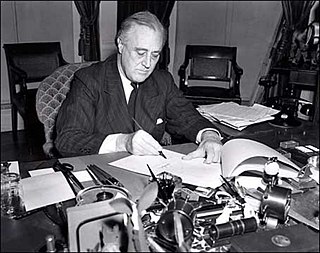
Lend-Lease, formally the Lend-Lease Act and introduced as An Act to Promote the Defense of the United States, was a policy under which the United States supplied the United Kingdom, the Soviet Union and other Allied nations with food, oil, and materiel between 1941 and 1945. It was given on the basis that such help was essential for the defense of the United States; this aid included warships and warplanes, along with other weaponry. It was signed into law on March 11, 1941, and ended on September 20, 1945. In general, the aid was free, although some hardware were returned after the war. Canada, already a belligerent, supplemented its aid to Great Britain with a similar, smaller program called Mutual Aid.

Free France was a political entity that claimed to be the legitimate government of France following the dissolution of the Third Republic. Led by French general Charles de Gaulle, Free France was established as a government-in-exile in London in June 1940 after the Fall of France during World War II and fought the Axis as an Allied nation with its Free French Forces. Free France also supported the resistance in Nazi-occupied France, known as the French Forces of the Interior, and gained strategic footholds in several French colonies in Africa.
World War II: The First Slovak Republic becomes a signatory to the Tripartite Pact, officially joining the Axis powers.

World War II or the Second World War, often abbreviated as WWII or WW2, was a world war that lasted from 1939 to 1945. It involved the vast majority of the world's countries—including all of the great powers—forming two opposing military alliances: the Allies and the Axis powers. World War II was a total war that directly involved more than 100 million personnel from more than 30 countries.
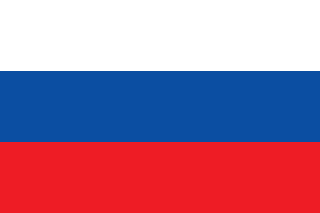
The (First) Slovak Republic, otherwise known as the Slovak State, was a partially-recognized client state of Nazi Germany which existed between 14 March 1939 and 7 May 1945. The Slovak part of Czechoslovakia declared independence with German support one day before the German occupation of Bohemia and Moravia. The Slovak Republic controlled the majority of the territory of present-day Slovakia but without its current southern parts, which were ceded by Czechoslovakia to Hungary in 1938. It was the first time in history that Slovakia had been a formally independent state.

The Tripartite Pact, also known as the Berlin Pact, was an agreement between Germany, Italy, and Japan signed in Berlin on 27 September 1940 by, respectively, Joachim von Ribbentrop, Galeazzo Ciano and Saburō Kurusu. It was a defensive military alliance that was eventually joined by Hungary, Romania, Bulgaria and Yugoslavia as well as by the German client state of Slovakia. Yugoslavia's accession provoked a coup d'état in Belgrade two days later. Germany, Italy and Hungary responded by invading Yugoslavia. The resulting Italo-German client state, known as the Independent State of Croatia, joined the pact on 15 June 1941.

The Axis powers, originally called the Rome–Berlin Axis, was a military coalition that initiated World War II and fought against the Allies. Its principal members were Nazi Germany, the Kingdom of Italy, and the Empire of Japan. The Axis were united in their opposition to the Allies, but otherwise lacked comparable coordination and ideological cohesion.
The Senegalese Socialist Party holds its second congress.

The Senegalese Socialist Party was a political party in Senegal. PSS was founded in July 1934 by Lamine Guèye, as a split from the French Section of the Workers' International (SFIO). Guèye was the party president, Armand Angrand general secretary and Maître Vidal, Charles Graziani and Amadou Assane Ndoye vice-presidents.
In Washington, D.C., the FBI Scientific Crime Detection Laboratory (better known as the FBI Crime Lab) officially opens.

The Federal Bureau of Investigation (FBI) is the domestic intelligence and security service of the United States and its principal federal law enforcement agency. Operating under the jurisdiction of the United States Department of Justice, the FBI is also a member of the U.S. Intelligence Community and reports to both the Attorney General and the Director of National Intelligence. A leading U.S. counterterrorism, counterintelligence, and criminal investigative organization, the FBI has jurisdiction over violations of more than 200 categories of federal crimes.

The FBI Laboratory is a division within the United States Federal Bureau of Investigation that provides forensic analysis support services to the FBI, as well as to state and local law enforcement agencies free of charge. The lab is located at Marine Corps Base Quantico in Quantico, Virginia. Opened November 24, 1932, the lab was first known as the Technical Laboratory. It became a separate division when the Bureau of Investigation (BOI) was renamed as the FBI.
The Finnish far-right Lapua Movement officially begins when a group of mainly the former White Guard members, led by Vihtori Kosola, interrupted communism occasion at the Workers' House in Lapua, Finland.
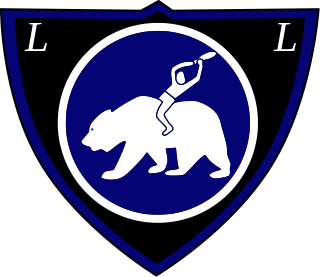
The Lapua Movement was a radical Finnish nationalist, fascist, pro-German and anti-communist political movement founded in and named after the town of Lapua. Led by Vihtori Kosola, it turned towards far-right politics after its founding and was banned after a failed coup d'etat attempt in 1932. The movement's anti-communist activities continued in the parliamentarian Patriotic People's Movement.

The White Guard or Civil Guard was a voluntary militia, part of the Finnish Whites movement, that emerged victorious over the socialist Red Guards in the Finnish Civil War of 1918. They were generally known as the "White Guard" in the West due to their opposition to the "communist" Red Guards. In the White Army of Finland many participants were recruits, draftees and German-trained Jägers – rather than part of the paramilitary. The central organization was named the White Guard Organization, and the organization consisted of local chapters in municipalities.

Iisakki Vihtori Kosola was the leader of the Finnish right-wing radical Lapua Movement.
Communism is a far-left sociopolitical, philosophical, and economic ideology and current within the socialist movement whose goal is the establishment of a communist society, a socioeconomic order centered around common ownership of the means of production, distribution, and exchange which allocates products to everyone in the society. Communist society also involves the absence of private property, social classes, money, and the state. Communists often seek a voluntary state of self-governance, but disagree on the means to this end. This reflects a distinction between a more libertarian approach of communization, revolutionary spontaneity, and workers' self-management, and a more vanguardist or communist party-driven approach through the development of a constitutional socialist state followed by the withering away of the state.

Lapua is a town and municipality of Finland.
Irish Civil War: Author and Irish nationalist Erskine Childers was executed by the Irish Free State for illegally carrying a semi-automatic pistol.

The Irish Civil War was a conflict that followed the Irish War of Independence and accompanied the establishment of the Irish Free State, an entity independent from the United Kingdom but within the British Empire.

Irish nationalism is a nationalist political movement which, in its broadest sense, asserts that the people of Ireland should govern Ireland as a sovereign state. Since the mid-19th century, Irish nationalism has largely taken the form of cultural nationalism based on the principles of national self-determination and popular sovereignty. Irish nationalists during the 18th, 19th, and 20th centuries such as the United Irishmen in the 1790s, Young Irelanders in the 1840s, the Fenian Brotherhood during the 1880s, Fianna Fáil in the 1920s, and Sinn Féin styled themselves in various ways after French left-wing radicalism and republicanism. Irish nationalism celebrates the culture of Ireland, especially the Irish language, literature, music, and sports. It grew more potent during the period in which all of Ireland was part of the United Kingdom, which led to most of the island gaining independence from the UK in 1922.
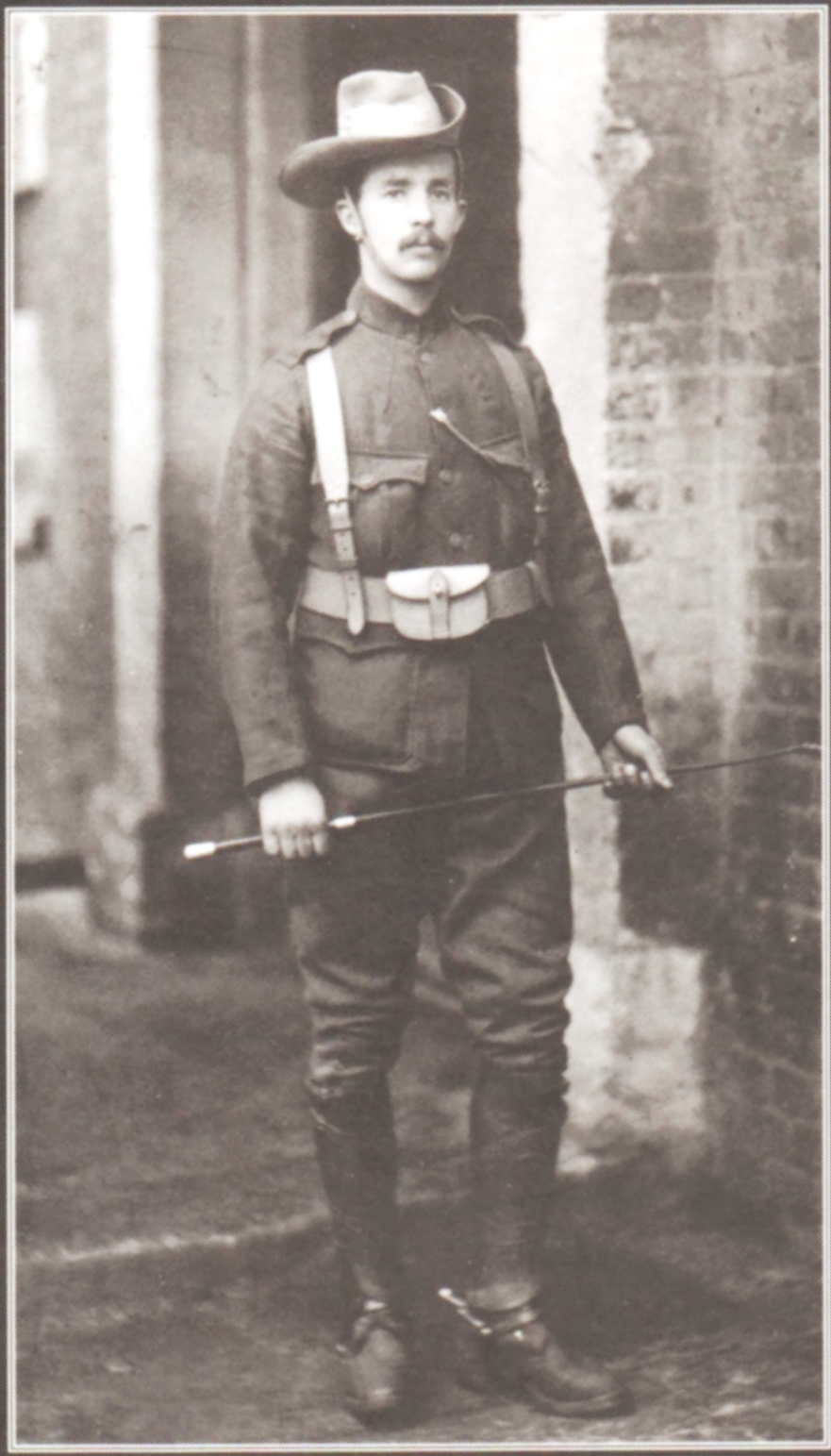
Robert Erskine Childers DSC, usually known as Erskine Childers, was an English-born Irish writer, politician, and militant. His works included the influential novel The Riddle of the Sands. Starting as an ardent Unionist, he later became a supporter of Irish Republicanism and smuggled guns into Ireland in his sailing yacht Asgard. He was executed by the authorities of the nascent Irish Free State during the Irish Civil War. He was the son of British Orientalist scholar Robert Caesar Childers; the cousin of Hugh Childers and Robert Barton; and the father of the fourth President of Ireland, Erskine Hamilton Childers.

The Irish Free State was a state established in December 1922 under the Anglo-Irish Treaty of December 1921. The treaty ended the three-year Irish War of Independence between the forces of the Irish Republic – the Irish Republican Army (IRA) – and British Crown forces.
A semi-automatic firearm, also called a self-loading or autoloading firearm, is a repeating firearm whose action mechanism automatically loads a following round of cartridge into the chamber (self-loading) and prepares it for subsequent firing, but requires the shooter to manually actuate the trigger in order to discharge each shot. Typically, this involves the weapon's action utilizing the excess energy released during the preceding shot to unlock and move the bolt, extracting and ejecting the spent cartridge case from the chamber, re-cocking the firing mechanism, and loading a new cartridge into the firing chamber, all without input from the user. To fire again, however, the user must actively release the trigger, allow it to "reset", before pulling the trigger again to fire off the next round. As a result, each trigger pull only discharges a single round from a semi-automatic weapon, as opposed to a fully automatic weapon, which will shoot continuously as long as the ammunition is replete and the trigger is kept depressed.
Nine Irish Republican Army members are executed by an Irish Free State firing squad. Among them is author Erskine Childers, who had been arrested for illegally carrying a revolver.

The Irish Republican Army (IRA) is a name used by various paramilitary organisations in Ireland throughout the 20th and 21st centuries. Organisations by this name have been dedicated to irredentism through Irish republicanism, the belief that all of Ireland should be an independent republic free from British rule.

The executions during the Irish Civil War took place during the guerrilla phase of the Irish Civil War. This phase of the war was bitter, and both sides, the government forces of the Irish Free State and the anti-Treaty Irish Republican Army (IRA) insurgents, used executions and terror in what developed into a cycle of atrocities. From November 1922, the Free State government embarked on a policy of executing Republican prisoners in order to bring the war to an end. Many of those killed had previously been allies, and in some cases close friends, of those who ordered their deaths in the civil war. In addition, government troops summarily executed prisoners in the field on several occasions. The executions of prisoners left a lasting legacy of bitterness in Irish politics.

The Irish Free State was a state established in December 1922 under the Anglo-Irish Treaty of December 1921. The treaty ended the three-year Irish War of Independence between the forces of the Irish Republic – the Irish Republican Army (IRA) – and British Crown forces.

Robert Erskine Childers DSC, usually known as Erskine Childers, was an English-born Irish writer, politician, and militant. His works included the influential novel The Riddle of the Sands. Starting as an ardent Unionist, he later became a supporter of Irish Republicanism and smuggled guns into Ireland in his sailing yacht Asgard. He was executed by the authorities of the nascent Irish Free State during the Irish Civil War. He was the son of British Orientalist scholar Robert Caesar Childers; the cousin of Hugh Childers and Robert Barton; and the father of the fourth President of Ireland, Erskine Hamilton Childers.
In Milwaukee, nine members of the Milwaukee Police Department are killed by a bomb, the most deaths in a single event in U.S. police history until the September 11 attacks in 2001.

Milwaukee, officially the City of Milwaukee, is both the most populous and most densely populated city in the U.S. state of Wisconsin and the county seat of Milwaukee County. With a population of 577,222 at the 2020 census, Milwaukee is the 31st largest city in the United States, the fifth-largest city in the Midwestern United States, and the second largest city on Lake Michigan's shore behind Chicago.
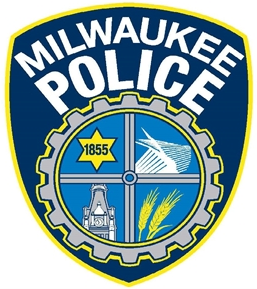
The Milwaukee Police Department is the police department organized under the city of Milwaukee, Wisconsin. The department has a contingent of about 1,800 sworn officers when at full strength and is divided into seven districts. Jeffrey B. Norman is the current chief of police, serving since December 2020.

The Milwaukee Police Department bombing was a November 24, 1917, bomb attack that killed nine members of local law enforcement and a civilian in Milwaukee, Wisconsin, United States. The perpetrators were never caught but are suspected to be an anarchist terrorist cell operating in the United States in the early 20th century. The target was initially an evangelical church in the Third Ward and only killed the police officers when the bomb was taken to the police station by a concerned civilian. The bombing remained the most fatal single event in national law enforcement history for over 80 years until the 9/11 attacks.
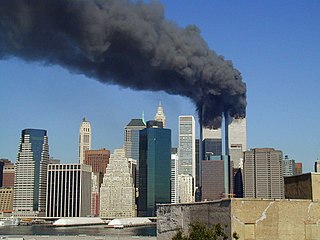
The September 11 attacks, commonly known as 9/11, were four coordinated suicide terrorist attacks carried out by al-Qaeda against the United States on Tuesday, September 11, 2001. That morning, nineteen terrorists hijacked four commercial airliners scheduled to travel from the Northeastern United States to California. The hijackers crashed the first two planes into the Twin Towers of the World Trade Center in New York City, and the third plane into the Pentagon in Arlington County, Virginia. The fourth plane was intended to hit a federal government building in Washington, D.C., but crashed in a field following a passenger revolt. The attacks killed nearly 3,000 people and instigated the war on terror.
2001 (MMI) was a common year starting on Monday of the Gregorian calendar, the 2001st year of the Common Era (CE) and Anno Domini (AD) designations, the 1st year of the 3rd millennium and the 21st century, and the 2nd year of the 2000s decade.
The second of two games between two Ohio football teams took place, after which accusations were made that players conspired to deliberately lose games.

American football, also known as gridiron, is a team sport played by two teams of eleven players on a rectangular field with goalposts at each end. The offense, the team with possession of the oval-shaped football, attempts to advance down the field by running with the ball or passing it, while the defense, the team without possession of the ball, aims to stop the offense's advance and to take control of the ball for themselves. The offense must advance at least ten yards in four downs or plays; if they fail, they turn over the football to the defense, but if they succeed, they are given a new set of four downs to continue the drive. Points are scored primarily by advancing the ball into the opposing team's end zone for a touchdown or kicking the ball through the opponent's goalposts for a field goal. The team with the most points at the end of a game wins.
The Canton Bulldogs–Massillon Tigers betting scandal was the first major scandal in professional football in the United States. It refers to a series of allegations made by a Massillon, Ohio newspaper charging the Canton Bulldogs coach, Blondy Wallace, and Massillon Tigers end, Walter East, of conspiring to fix a two-game series between the two clubs. One account of the scandal called for Canton to win the first game and Massillon was to win the second, forcing a third game—with the biggest gate—to be played legitimately, with the 1906 Ohio League championship at stake. Another account accused Wallace and East of bribing Massillon players to throw a game in the series. Canton denied the charges, maintaining that Massillon only wanted to damage the club's reputation. Although Massillon could not prove that Canton had indeed thrown the second game and it remains unknown if there was ever a match-fixing agreement, the scandal tarnished the Bulldogs name and reportedly helped ruin professional football in Ohio until the mid-1910s.
A 13–6 victory by the Massillon Tigers over their rivals, the Canton Bulldogs, for the "Ohio League" Championship, leads to accusations that the championship series was fixed and results in the first major scandal in professional American football.
The Massillon Tigers were an early professional football team from Massillon, Ohio. Playing in the "Ohio League", the team was a rival to the pre-National Football League version of the Canton Bulldogs. The Tigers won Ohio League championships in 1903, 1904, 1905, and 1906, then merged to become "All-Massillons" to win another title in 1907. The team returned as the Tigers in 1915 but, with the reemergence of the Bulldogs, only won one more Ohio League title. Pro football was popularized in Ohio when the amateur Massillon Tigers hired four Pittsburgh pros to play in the season-ending game against Akron. At the same time, pro football declined in the Pittsburgh area, and the emphasis on the pro game moved west from Pennsylvania to Ohio.
The Canton Bulldogs were a professional American football team, based in Canton, Ohio. They played in the Ohio League from 1903 to 1906 and 1911 to 1919, and the American Professional Football Association, from 1920 to 1923, and again from 1925 to 1926. The Bulldogs won the 1916, 1917, and 1919 Ohio League championships. They were the NFL champions in 1922 and 1923. In 1921–1923, the Bulldogs played 25 straight games without a defeat. This remains an NFL record.
The Ohio League was an informal and loose association of American football clubs active between 1902 and 1919 that competed for the Ohio Independent Championship (OIC). As the name implied, its teams were mostly based in Ohio. It is the direct predecessor to the modern National Football League (NFL).
In organized sports, match fixing is the act of playing or officiating a match with the intention of achieving a pre-determined result, violating the rules of the game and often the law. There are many reasons why match fixing might take place, including receiving bribes from bookmakers or sports bettors, and blackmail. Competitors may also intentionally perform poorly to gain a future advantage, such as a better draft pick or to face an easier opponent in a later round of competition. A player might also play poorly to rig a handicap system.
The Canton Bulldogs–Massillon Tigers betting scandal was the first major scandal in professional football in the United States. It refers to a series of allegations made by a Massillon, Ohio newspaper charging the Canton Bulldogs coach, Blondy Wallace, and Massillon Tigers end, Walter East, of conspiring to fix a two-game series between the two clubs. One account of the scandal called for Canton to win the first game and Massillon was to win the second, forcing a third game—with the biggest gate—to be played legitimately, with the 1906 Ohio League championship at stake. Another account accused Wallace and East of bribing Massillon players to throw a game in the series. Canton denied the charges, maintaining that Massillon only wanted to damage the club's reputation. Although Massillon could not prove that Canton had indeed thrown the second game and it remains unknown if there was ever a match-fixing agreement, the scandal tarnished the Bulldogs name and reportedly helped ruin professional football in Ohio until the mid-1910s.

American football, also known as gridiron, is a team sport played by two teams of eleven players on a rectangular field with goalposts at each end. The offense, the team with possession of the oval-shaped football, attempts to advance down the field by running with the ball or passing it, while the defense, the team without possession of the ball, aims to stop the offense's advance and to take control of the ball for themselves. The offense must advance at least ten yards in four downs or plays; if they fail, they turn over the football to the defense, but if they succeed, they are given a new set of four downs to continue the drive. Points are scored primarily by advancing the ball into the opposing team's end zone for a touchdown or kicking the ball through the opponent's goalposts for a field goal. The team with the most points at the end of a game wins.
Anna Sewell's animal welfare novel Black Beauty is published.

Anna Sewell was an English novelist. She is known as the author of the 1877 novel Black Beauty, her only published work, which is considered one of the top ten best selling novels for children, although the author intended the work for an adult audience. Sewell died only five months after Black Beauty's publication, having lived long enough to see her only novel become a success.

Animal welfare is the well-being of non-human animals. Formal standards of animal welfare vary between contexts, but are debated mostly by animal welfare groups, legislators, and academics. Animal welfare science uses measures such as longevity, disease, immunosuppression, behavior, physiology, and reproduction, although there is debate about which of these best indicate animal welfare.
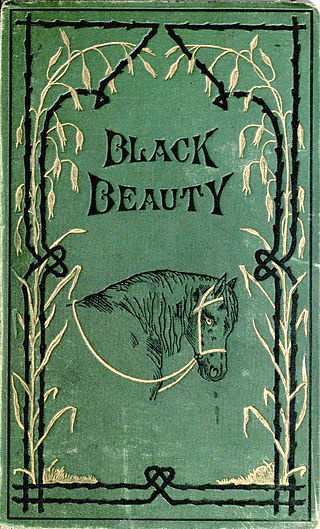
Black Beauty: His Grooms and Companions, the Autobiography of a Horse is an 1877 novel by English author Anna Sewell. It was composed in the last years of her life, during which she was bedridden and seriously ill. The novel became an immediate best-seller, with Sewell dying just five months after its publication, but having lived long enough to see her only novel become a success. With fifty million copies sold, Black Beauty is one of the best-selling books of all time.
American Civil War: As part of the Chattanooga campaign in Chattanooga, Tennessee, Union forces captured Lookout Mountain, helping them to begin breaking the Confederate siege of the city.

The American Civil War was a civil war in the United States. It was fought between the Union and the Confederacy, the latter formed by states that had seceded. The central cause of the war was the dispute over whether slavery would be permitted to expand into the western territories, leading to more slave states, or be prevented from doing so, which was widely believed would place slavery on a course of ultimate extinction.

The Chattanooga campaign was a series of maneuvers and battles in October and November 1863, during the American Civil War. Following the defeat of Maj. Gen. William S. Rosecrans's Union Army of the Cumberland at the Battle of Chickamauga in September, the Confederate Army of Tennessee under Gen. Braxton Bragg besieged Rosecrans and his men by occupying key high terrain around Chattanooga, Tennessee. Maj. Gen. Ulysses S. Grant was given command of Union forces in the West, now consolidated under the Division of the Mississippi. Significant reinforcements also began to arrive with him in Chattanooga from Mississippi and the Eastern Theater. On October 18, Grant removed Rosecrans from command of the Army of the Cumberland and replaced him with Major General George Henry Thomas.
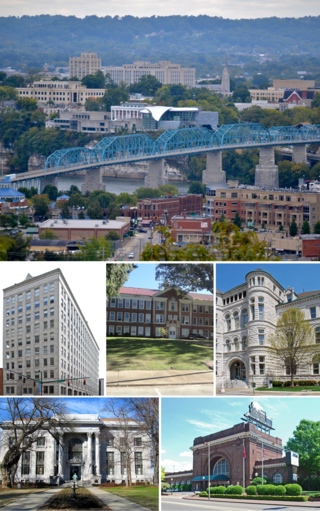
Chattanooga is a city in and the county seat of Hamilton County, Tennessee, along the Tennessee River bordering Georgia. It also extends into Marion County on its western end. With a population of 181,099 in 2020, it is Tennessee's fourth-largest city and one of the two principal cities of East Tennessee, along with Knoxville. It anchors the Chattanooga metropolitan area, Tennessee's fourth-largest metropolitan statistical area, as well as a larger three-state area that includes Southeast Tennessee, Northwest Georgia, and Northeast Alabama.

During the American Civil War, the Union, also known as the North, referred to the United States led by President Abraham Lincoln. It was opposed by the secessionist Confederate States of America (CSA), informally called "the Confederacy" or "the South". The Union is named after its declared goal of preserving the United States as a constitutional union. "Union" is used in the U.S. Constitution to refer to the founding formation of the people, and to the states in union. In the context of the Civil War, it has also often been used as a synonym for "the northern states loyal to the United States government;" in this meaning, the Union consisted of 20 free states and five border states.

The Battle of Lookout Mountain also known as the Battle Above The Clouds was fought November 24, 1863, as part of the Chattanooga Campaign of the American Civil War. Union forces under Maj. Gen. Joseph Hooker assaulted Lookout Mountain, Chattanooga, Tennessee, and defeated Confederate forces commanded by Maj. Gen. Carter L. Stevenson. Lookout Mountain was one engagement in the Chattanooga battles between Maj. Gen. Ulysses S. Grant's Military Division of the Mississippi and the Confederate Army of Tennessee, commanded by Gen. Braxton Bragg. It drove in the Confederate left flank and allowed Hooker's men to assist in the Battle of Missionary Ridge the following day, which routed Bragg's army, lifting the siege of Union forces in Chattanooga, and opening the gateway into the Deep South.

Lookout Mountain is a mountain ridge located at the northwest corner of the U.S. state of Georgia, the northeast corner of Alabama, and along the southeastern Tennessee state line in Chattanooga. Lookout Mountain was the scene of the 18th-century "Last Battle of the Cherokees" in this area during the Nickajack Expedition. On November 24, 1863, during the American Civil War, the Battle of Lookout Mountain took place here.

The Confederate States of America (CSA), commonly referred to as the Confederate States, the Confederacy, or "the South", was an unrecognized breakaway republic in North America that existed from February 8, 1861, to May 9, 1865. The Confederacy comprised U.S. states that declared secession and warred against the United States during the American Civil War. Eleven U.S. states, nicknamed Dixie, declared secession and formed the main part of the CSA. They were South Carolina, Mississippi, Florida, Alabama, Georgia, Louisiana, Texas, Virginia, Arkansas, Tennessee, and North Carolina. Kentucky, and Missouri also had declarations of secession and full representation in the Confederate Congress during their Union army occupation.
American Civil War: Battle of Lookout Mountain: Near Chattanooga, Tennessee, Union forces under General Ulysses S. Grant capture Lookout Mountain and begin to break the Confederate siege of the city led by General Braxton Bragg.

The American Civil War was a civil war in the United States. It was fought between the Union and the Confederacy, the latter formed by states that had seceded. The central cause of the war was the dispute over whether slavery would be permitted to expand into the western territories, leading to more slave states, or be prevented from doing so, which was widely believed would place slavery on a course of ultimate extinction.

The Chattanooga campaign was a series of maneuvers and battles in October and November 1863, during the American Civil War. Following the defeat of Maj. Gen. William S. Rosecrans's Union Army of the Cumberland at the Battle of Chickamauga in September, the Confederate Army of Tennessee under Gen. Braxton Bragg besieged Rosecrans and his men by occupying key high terrain around Chattanooga, Tennessee. Maj. Gen. Ulysses S. Grant was given command of Union forces in the West, now consolidated under the Division of the Mississippi. Significant reinforcements also began to arrive with him in Chattanooga from Mississippi and the Eastern Theater. On October 18, Grant removed Rosecrans from command of the Army of the Cumberland and replaced him with Major General George Henry Thomas.

Chattanooga is a city in and the county seat of Hamilton County, Tennessee, along the Tennessee River bordering Georgia. It also extends into Marion County on its western end. With a population of 181,099 in 2020, it is Tennessee's fourth-largest city and one of the two principal cities of East Tennessee, along with Knoxville. It anchors the Chattanooga metropolitan area, Tennessee's fourth-largest metropolitan statistical area, as well as a larger three-state area that includes Southeast Tennessee, Northwest Georgia, and Northeast Alabama.

The United States of America, commonly known as the United States or America, is a country in North America. It consists of 50 states, a federal district, five major unincorporated territories, nine Minor Outlying Islands, and 326 Indian reservations. It is the third-largest country by both land and total area. The United States shares land borders with Canada to its north and with Mexico to its south. It has maritime borders with the Bahamas, Cuba, Russia, and other nations. With a population of over 331 million, it is the most populous country in North America and the third most populous in the world. The national capital is Washington, D.C., and the most populous city and financial center is New York City.

Ulysses S. Grant was an American military officer and politician who served as the 18th president of the United States from 1869 to 1877. As Commanding General, he led the Union Army to victory in the American Civil War in 1865 and thereafter briefly served as Secretary of War. Later, as president, Grant was an effective civil rights executive who signed the bill that created the Justice Department and worked with Radical Republicans to protect African Americans during Reconstruction.

Lookout Mountain is a mountain ridge located at the northwest corner of the U.S. state of Georgia, the northeast corner of Alabama, and along the southeastern Tennessee state line in Chattanooga. Lookout Mountain was the scene of the 18th-century "Last Battle of the Cherokees" in this area during the Nickajack Expedition. On November 24, 1863, during the American Civil War, the Battle of Lookout Mountain took place here.

The Confederate States of America (CSA), commonly referred to as the Confederate States, the Confederacy, or "the South", was an unrecognized breakaway republic in North America that existed from February 8, 1861, to May 9, 1865. The Confederacy comprised U.S. states that declared secession and warred against the United States during the American Civil War. Eleven U.S. states, nicknamed Dixie, declared secession and formed the main part of the CSA. They were South Carolina, Mississippi, Florida, Alabama, Georgia, Louisiana, Texas, Virginia, Arkansas, Tennessee, and North Carolina. Kentucky, and Missouri also had declarations of secession and full representation in the Confederate Congress during their Union army occupation.

Braxton Bragg was an American army officer during the Second Seminole War and Mexican–American War and Confederate general in the Confederate Army during the American Civil War, serving in the Western Theater. His most important role was as commander of the Army of Mississippi, later renamed the Army of Tennessee, from June 1862 until December 1863.
British naturalist Charles Darwin's On the Origin of Species was first published, and sold out its initial print run on the first day.
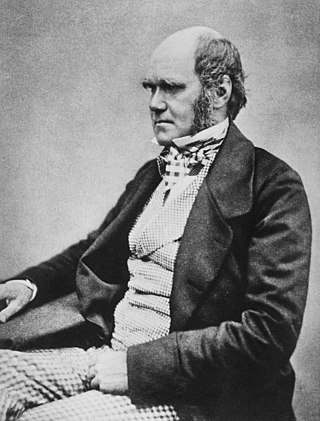
Charles Robert Darwin was an English naturalist, geologist, and biologist, widely known for his contributions to evolutionary biology. His proposition that all species of life have descended from a common ancestor is now generally accepted and considered a fundamental concept in science. In a joint publication with Alfred Russel Wallace, he introduced his scientific theory that this branching pattern of evolution resulted from a process he called natural selection, in which the struggle for existence has a similar effect to the artificial selection involved in selective breeding. Darwin has been described as one of the most influential figures in human history and was honoured by burial in Westminster Abbey.

On the Origin of Species, published on 24 November 1859, is a work of scientific literature by Charles Darwin that is considered to be the foundation of evolutionary biology. Darwin's book introduced the scientific theory that populations evolve over the course of generations through a process of natural selection. The book presented a body of evidence that the diversity of life arose by common descent through a branching pattern of evolution. Darwin included evidence that he had collected on the Beagle expedition in the 1830s and his subsequent findings from research, correspondence, and experimentation.
Charles Darwin publishes On the Origin of Species.

Charles Robert Darwin was an English naturalist, geologist, and biologist, widely known for his contributions to evolutionary biology. His proposition that all species of life have descended from a common ancestor is now generally accepted and considered a fundamental concept in science. In a joint publication with Alfred Russel Wallace, he introduced his scientific theory that this branching pattern of evolution resulted from a process he called natural selection, in which the struggle for existence has a similar effect to the artificial selection involved in selective breeding. Darwin has been described as one of the most influential figures in human history and was honoured by burial in Westminster Abbey.

On the Origin of Species, published on 24 November 1859, is a work of scientific literature by Charles Darwin that is considered to be the foundation of evolutionary biology. Darwin's book introduced the scientific theory that populations evolve over the course of generations through a process of natural selection. The book presented a body of evidence that the diversity of life arose by common descent through a branching pattern of evolution. Darwin included evidence that he had collected on the Beagle expedition in the 1830s and his subsequent findings from research, correspondence, and experimentation.
Danish troops defeat a Schleswig-Holstein force in the town of Lottorf, Schleswig-Holstein.
The Battle of Lottorf was fought between Denmark, and the Duchies of Schleswig and Holstein, on November 24, 1850, at Lottorf in Schleswig and was the final battle of the First Schleswig War. The Danish forces under Christian Bauditz won the battle.
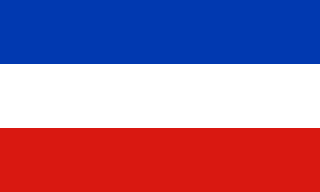
Schleswig-Holstein is the northernmost of the 16 states of Germany, comprising most of the historical duchy of Holstein and the southern part of the former Duchy of Schleswig. Its capital city is Kiel; other notable cities are Lübeck and Flensburg.
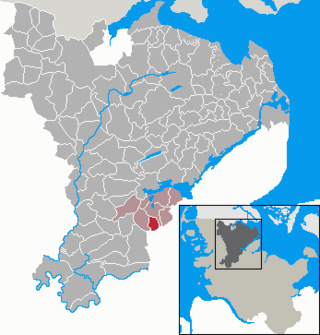
Lottorf is a municipality in the district of Schleswig-Flensburg, in Schleswig-Holstein, Germany.
The Texas Provincial Government authorizes the creation of a horse-mounted police force called the Texas Rangers (which is now the Texas Ranger Division of the Texas Department of Public Safety).
The origins of today's Texas Ranger Division trace back to the first days of Anglo-American settlement of what is today the State of Texas, when it was part of the Province of Coahuila y Tejas belonging to the newly independent country of Mexico. The unique characteristics that the Rangers adopted during the force's formative years and that give the division its heritage today—characteristics for which the Texas Rangers would become world-renowned—have been accounted for by the nature of the Rangers' duties, which was to protect a thinly populated frontier against protracted hostilities, first with Plains Indian tribes, and after the Texas Revolution, hostilities with Mexico.

The Texas Ranger Division, commonly called the Texas Rangers and also known as Los Diablos Tejanos, is an investigative law enforcement agency with statewide jurisdiction in the US state of Texas. It is based in the capital city of Austin. In the time since its creation, the Texas Rangers have investigated crimes ranging from murder to political corruption, acted in riot control and as detectives, protected the governor of Texas, tracked down fugitives, served as a security force at important state locations, including the Alamo, and functioned as a paramilitary force at the service of both the Republic (1836–1845) and the State of Texas.
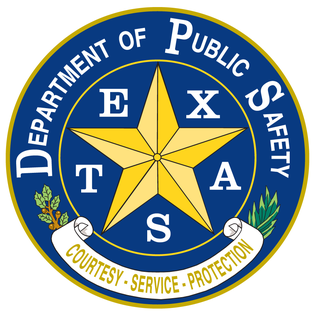
The Department of Public Safety of the State of Texas, commonly known as the Texas Department of Public Safety (DPS), is a department of the state government of Texas. The DPS is responsible for statewide law enforcement and driver license administration. The Public Safety Commission oversees the DPS. However, under state law, the Governor of Texas may assume command of the department during a public disaster, riot, insurrection, formation of a dangerous resistance to enforcement of law, or to perform his constitutional duty to enforce law. The commission's five members are appointed by the governor and confirmed by the Texas Senate, to serve without pay for staggered, six-year terms. The commission formulates plans and policies for enforcing criminal, traffic and safety laws, preventing and detecting crime, apprehending law violators, and educating citizens about laws and public safety.
South Carolina passes the Ordinance of Nullification, declaring that the Tariffs of 1828 and 1832 were null and void in the state, beginning the Nullification Crisis.
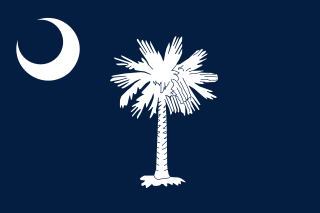
South Carolina is a state in the coastal Southeastern region of the United States. It is bordered to the north by North Carolina, to the southeast by the Atlantic Ocean, and to the southwest by Georgia across the Savannah River. South Carolina is the 40th most extensive and 23rd most populous U.S. state with a recorded population of 5,124,712 according to the 2020 census. In 2019, its GDP was $213.45 billion. South Carolina is composed of 46 counties. The capital is Columbia with a population of 137,300 in 2020; while its largest city is Charleston with a 2020 population of 150,277. The Greenville–Spartanburg-Anderson metropolitan area is the most populous in the state, with a 2020 population estimate of 1,455,892.
The Ordinance of Nullification declared the Tariffs of 1828 and 1832 null and void within the borders of the U.S. state of South Carolina, beginning on February 1, 1833. It began the Nullification Crisis. Passed by a state convention on November 24, 1832, it led to President Andrew Jackson's proclamation against South Carolina, the Nullification Proclamation on December 10, 1832, which threatened to send government ground troops to enforce the tariffs. In the face of the military threat, and following a Congressional revision of the law which lowered the tariff, South Carolina repealed the ordinance.
The Tariff of 1828 was a very high protective tariff that became law in the United States in May 1828. It was a bill designed to not pass Congress because it was seen by free trade supporters as hurting both industry and farming, but surprisingly, it passed. The bill was vehemently denounced in the South and escalated to a threat of civil war in the Nullification crisis of 1832–1833. The tariff was replaced in 1833, and the crisis ended. It was called the "Tariff of Abominations" by its Southern detractors because of the effects it had on the Southern economy. It set a 38% tax on some imported goods and a 45% tax on certain imported raw materials.
The nullification crisis was a United States sectional political crisis in 1832–33, during the presidency of Andrew Jackson, which involved a confrontation between the state of South Carolina and the federal government. It ensued after South Carolina declared the federal Tariffs of 1828 and 1832 unconstitutional and therefore null and void within the sovereign boundaries of the state. However, courts at the state and federal level, including the U.S. Supreme Court, repeatedly have rejected the theory of nullification by states.
Tarabai, the former regent of the Maratha Empire, had Rajaram II, whom she had previously claimed to be her grandson, arrested as an impostor.
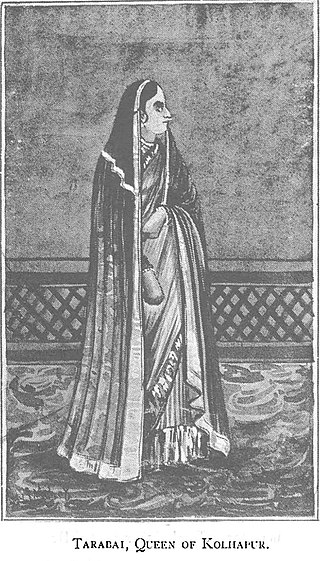
Tarabai Bhosale was the regent of the Maratha Empire of India from 1700 until 1708. She was the queen of Rajaram Bhonsale, and daughter-in-law of the empire's founder Shivaji. She is acclaimed for her role in keeping alive the resistance against Mughal occupation of Maratha territories after the death of her husband, and acting as the regent during the minority of her son, Shivaji II.

The Maratha Empire, later referred as Maratha Confederacy, was an early modern Indian empire that came to dominate much of the Indian subcontinent in the 18th century. Maratha rule formally began in 1674 with the coronation of Shivaji of the Bhonsle Dynasty as the Chhatrapati. Although Shivaji came from the Maratha caste, the Maratha empire also included warriors, administrators and other notables from Maratha and several other castes from Maharashtra.
Rajaram Bhonsle II, also known as Ramaraja, was the sixth monarch of Maratha Empire. He was an adopted son of Chhattrapati Shahu. Tarabai had presented him to Shahu as her own grandson and used him to grab power after Shahu's death. However, after being sidelined, she stated that Rajaram II was only an impostor. Nevertheless, Peshwa Balaji Baji Rao retained him as the titular Chhatrapati. In reality, Peshwa and other chiefs had all the executive power, while Rajaram II was only a figurehead.
Tarabai, regent of the Maratha Empire, imprisons Rajaram II of Satara for refusing to remove Balaji Baji Rao from the post of peshwa.

Tarabai Bhosale was the regent of the Maratha Empire of India from 1700 until 1708. She was the queen of Rajaram Bhonsale, and daughter-in-law of the empire's founder Shivaji. She is acclaimed for her role in keeping alive the resistance against Mughal occupation of Maratha territories after the death of her husband, and acting as the regent during the minority of her son, Shivaji II.

The Maratha Empire, later referred as Maratha Confederacy, was an early modern Indian empire that came to dominate much of the Indian subcontinent in the 18th century. Maratha rule formally began in 1674 with the coronation of Shivaji of the Bhonsle Dynasty as the Chhatrapati. Although Shivaji came from the Maratha caste, the Maratha empire also included warriors, administrators and other notables from Maratha and several other castes from Maharashtra.
Rajaram Bhonsle II, also known as Ramaraja, was the sixth monarch of Maratha Empire. He was an adopted son of Chhattrapati Shahu. Tarabai had presented him to Shahu as her own grandson and used him to grab power after Shahu's death. However, after being sidelined, she stated that Rajaram II was only an impostor. Nevertheless, Peshwa Balaji Baji Rao retained him as the titular Chhatrapati. In reality, Peshwa and other chiefs had all the executive power, while Rajaram II was only a figurehead.

Balajirao Bhat, also known as Nana Saheb I, was the 8th Peshwa of the Maratha Confederacy in India. He was appointed as Peshwa in 1740 upon the death of his illustrious father, the Peshwa Bajirao I.

The Peshwa was the appointed prime minister of the Maratha Empire of the Indian subcontinent. Originally, the Peshwas served as subordinates to the Chhatrapati ; later, under the Bhat family, they became the de facto leaders of the Maratha Confederacy, with the Chhatrapati becoming a nominal ruler. During the last years of the Maratha Empire, the Peshwas themselves were reduced to titular leaders, and remained under the authority of the Maratha nobles and the British East India Company.
Abel Tasman becomes the first European to discover the island Van Diemen's Land (later renamed Tasmania).
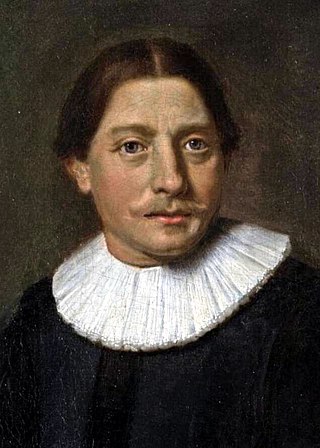
Abel Janszoon Tasman was a Dutch seafarer, explorer, and merchant, best known for his voyages of 1642 and 1644 in the service of the Dutch East India Company (VOC). He was the first known European explorer to reach New Zealand and the islands of Fiji and Van Diemen's Land.
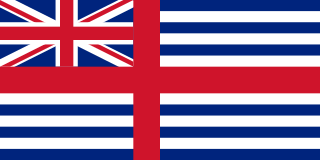
Van Diemen's Land was the colonial name of the island of Tasmania used by the British during the European exploration of Australia in the 19th century. A British settlement was established in Van Diemen's Land in 1803 before it became a separate colony in 1825. Its penal colonies became notorious destinations for the transportation of convicts due to the harsh environment, isolation and reputation for being inescapable. Macquarie Harbour and Port Arthur are among the most well-known penal settlements on the island.
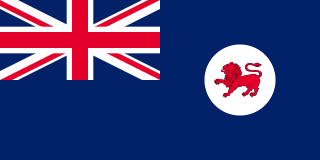
Tasmania is an island state of Australia. It is located 240 kilometres (150 miles) to the south of the Australian mainland, separated from it by the Bass Strait, with the archipelago containing the southernmost point of the country. The state encompasses the main island of Tasmania, the 26th-largest island in the world, and the surrounding 1000 islands. It is Australia's least populous state, with 569,825 residents as of December 2021. The state capital and largest city is Hobart, with around 40 percent of the population living in the Greater Hobart area.
Anglo-Scottish Wars: England captured about 1,200 Scots with a victory at the Battle of Solway Moss.

The Anglo-Scottish Wars comprise the various battles which continued to be fought between the Kingdom of England and the Kingdom of Scotland from the time of the Wars of Independence in the early 14th century through to the latter years of the 16th century.

The Battle of Solway Moss took place on Solway Moss near the River Esk on the English side of the Anglo-Scottish border in November 1542 between English and Scottish forces.
Battle of Solway Moss: An English army defeats a much larger Scottish force near the River Esk in Dumfries and Galloway.

The Battle of Solway Moss took place on Solway Moss near the River Esk on the English side of the Anglo-Scottish border in November 1542 between English and Scottish forces.

The River Esk, also known as the Border Esk, is a river in Dumfries and Galloway, Scotland, that enters the English county of Cumbria and flows into the Solway Firth.

Dumfries and Galloway is one of 32 unitary council areas of Scotland and is located in the western Southern Uplands. It covers the historic counties of Dumfriesshire, Kirkcudbrightshire, and Wigtownshire, the latter two of which are collectively known as Galloway. The administrative centre and largest settlement is the town of Dumfries. The second largest town is Stranraer, on the North Channel coast, some 57 miles (92 km) to the west of Dumfries.
Hundred Years' War: Joan of Arc unsuccessfully besieges La Charité.
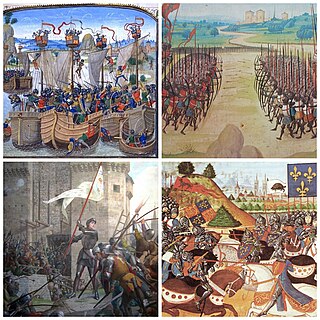
The Hundred Years' War was a series of armed conflicts between the kingdoms of England and France during the Late Middle Ages. It originated from disputed claims to the French throne between the English House of Plantagenet and the French royal House of Valois. Over time, the war grew into a broader power struggle involving factions from across Western Europe, fuelled by emerging nationalism on both sides.
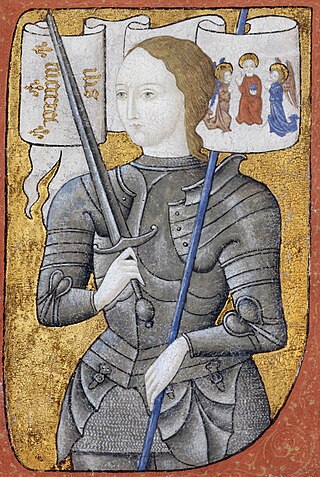
Joan of Arc is a patron saint of France, honored as a defender of the French nation for her role in the siege of Orléans and her insistence on the coronation of Charles VII of France during the Hundred Years' War. Stating that she was acting under divine guidance, she became a military leader who transcended gender roles and gained recognition as a savior of France.
The siege of La Charité was incited by the order of Charles VII to Joan of Arc after the warlord Perrinet Gressard seized the town in 1423.
Peter I of Cyprus ascends the throne of Cyprus after his father, Hugh IV of Cyprus, abdicates.

Peter I was King of Cyprus and titular King of Jerusalem from his father's abdication on 24 November 1358 until his death in 1369. He was invested as titular Count of Tripoli in 1346. As King of Cyprus, he had some military successes, but he was unable to complete many of his plans due to internal disputes that culminated in his assassination at the hands of three of his knights.

Hugh IV was King of Cyprus from 31 March 1324 to his abdication, on 24 November 1358 and, nominally, King of Jerusalem, as Hugh II, until his death. The son of Guy, Constable of Cyprus, and Eschiva of Ibelin, Hugh succeeded his father as Constable of Cyprus in 1318, and later succeeded to the throne of Cyprus on the death of his uncle Henry II, since Henry II had no son. He was a member of the House of Poitiers-Lusignan.
An overnight landslide on the north side of Mont Granier, one of the largest historical rockslope failures ever recorded in Europe, destroys five villages.
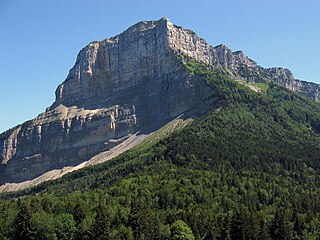
Mont Granier (1,933m) is a limestone mountain located between the départements of Savoie and Isère in France. It lies in the Chartreuse Mountains range of the French Prealps between the towns of Chapareillan and Entremont-le-Vieux. Its east face overlooks the valley of Grésivaudan and Combe de Savoie, and the north face overlooks Chambéry. At 900 meters tall, Mont Granier has one of the highest cliffs in France.
Gąsawa massacre: At an assembly of Piast dukes at Gąsawa, Polish Prince Leszek the White, Duke Henry the Bearded and others are attacked by assassins while bathing.
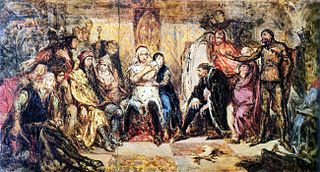
The Gąsawa massacre was an attack on the night of 23 / 24 November 1227 during a council of Polish Piast dukes which was being held near the village of Gąsawa in Kujawy, Poland. The High Duke of Poland, Leszek the White, was assassinated, and Duke Henry the Bearded of Silesia was gravely wounded.
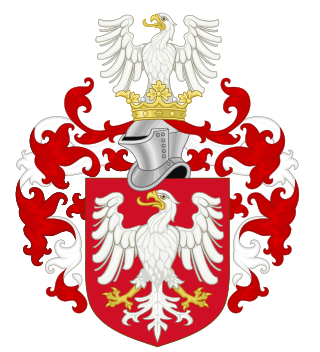
The House of Piast was the first historical ruling dynasty of Poland. The first documented Polish monarch was Duke Mieszko I. The Piasts' royal rule in Poland ended in 1370 with the death of king Casimir III the Great.

Gąsawa is a village in Żnin County, Kuyavian-Pomeranian Voivodeship, in north-central Poland. It is the seat of the gmina called Gmina Gąsawa. It lies approximately 10 kilometres (6 mi) south of Żnin and 43 km (27 mi) south-west of Bydgoszcz. The village has a population of 1,400.

Leszek the White was Prince of Sandomierz and High Duke of Poland in the years 1194–1198, 1199, 1206–1210, and 1211–1227. During the early stages of his reign, his uncle Duke Mieszko III the Old and cousin Władysław III Spindleshanks, from the Greater Polish branch of the royal Piast dynasty, contested Leszek's right to be High Duke.

Henry the Bearded was a Polish duke from the Piast dynasty.
Mongol conquest of the Khwarazmian Empire: Genghis Khan defeated the renegade Khwarazmian prince Jalal al-Din at the Battle of the Indus.

The Mongol invasion of Khwarezmia took place between 1219 and 1221, as troops of the Mongol Empire under Genghis Khan invaded the lands of the Khwarazmian Empire in Central Asia. The campaign, which followed the annexation of the Qara Khitai khanate, saw widespread devastation and atrocities, and marked the completion of the Mongol conquest of Central Asia, and began the Mongol conquest of Persia.

Genghis Khan was the founder and first Great Khan (Emperor) of the Mongol Empire, which became the largest contiguous empire in history after his death. He came to power by uniting many of the nomadic tribes of the Mongol steppe and being proclaimed the universal ruler of the Mongols, or Genghis Khan. With the tribes of Northeast Asia largely under his control, he set in motion the Mongol invasions, which ultimately witnessed the conquest of much of Eurasia, and incursions by Mongol raiding parties as far west as Legnica in western Poland and as far south as Gaza. He launched campaigns against the Qara Khitai, Khwarezmia, the Western Xia and Jin dynasty during his life, and his generals raided into medieval Georgia, Circassia, the Kievan Rus', and Volga Bulgaria.

The Khwarazmian or Khwarezmian Empire was a Turko-Persian Sunni Muslim empire that ruled large parts of present-day Central Asia, Afghanistan, and Iran in the approximate period of 1077 to 1231, first as vassals of the Seljuk Empire and the Qara Khitai, and later as independent rulers, up until the Mongol conquest in the 13th century. It is estimated that the empire spanned an area of 2.3 million square kilometers to 3.6 million square kilometers effectively making it one of the largest land empires in history. In the beginning of the 13th century, the empire was the greatest power in the Muslim world. The empire, which was modelled on the preceding Seljuk Empire, was defended by a huge cavalry army composed largely of Kipchak Turks.
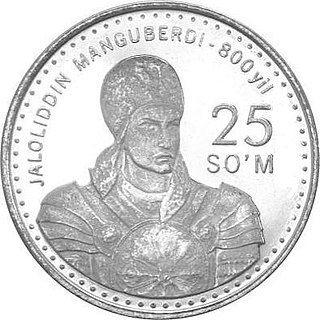
Jalal al-Din Mangburni, also known as Jalal al-Din Khwarazmshah, Minkubirni or Mengu-Berdi, was the last Khwarazmshah of the Anushteginid dynasty. The eldest son and successor of Ala ad-Din Muhammad II of the Khwarazmian Empire, Jalal al-Din was brought up at Gurganj, the wealthy capital of the Khwarazmid homeland. An able general, he served as second-in-command to his father in at least one battle; however, since he was the son of a concubine, he was challenged as successor by a younger brother, whose cause was supported by the powerful Queen Mother, Turken Khatun. Nevertheless, after the Mongol conquest of the Khwarazmian Empire led to his father's flight and death on an island in the Caspian Sea, Jalal-al Din gained the loyalty of the majority of Khwarazmian loyalists.

The Battle of the Indus was fought on the banks of the Indus River, on 24 November 1221, by two armies commanded by Shah Jalal ad-Din Mingburnu of the Khwarezmian Empire, and Genghis Khan of the Mongol Empire. The battle, which resulted in an overwhelming Mongol victory, was the concluding engagement in the Mongol conquest of the Khwarazmian Empire.
Genghis Khan defeats the renegade Khwarazmian prince Jalal al-Din at the Battle of the Indus, completing the Mongol conquest of Central Asia.

Genghis Khan was the founder and first Great Khan (Emperor) of the Mongol Empire, which became the largest contiguous empire in history after his death. He came to power by uniting many of the nomadic tribes of the Mongol steppe and being proclaimed the universal ruler of the Mongols, or Genghis Khan. With the tribes of Northeast Asia largely under his control, he set in motion the Mongol invasions, which ultimately witnessed the conquest of much of Eurasia, and incursions by Mongol raiding parties as far west as Legnica in western Poland and as far south as Gaza. He launched campaigns against the Qara Khitai, Khwarezmia, the Western Xia and Jin dynasty during his life, and his generals raided into medieval Georgia, Circassia, the Kievan Rus', and Volga Bulgaria.

The Khwarazmian or Khwarezmian Empire was a Turko-Persian Sunni Muslim empire that ruled large parts of present-day Central Asia, Afghanistan, and Iran in the approximate period of 1077 to 1231, first as vassals of the Seljuk Empire and the Qara Khitai, and later as independent rulers, up until the Mongol conquest in the 13th century. It is estimated that the empire spanned an area of 2.3 million square kilometers to 3.6 million square kilometers effectively making it one of the largest land empires in history. In the beginning of the 13th century, the empire was the greatest power in the Muslim world. The empire, which was modelled on the preceding Seljuk Empire, was defended by a huge cavalry army composed largely of Kipchak Turks.

Jalal al-Din Mangburni, also known as Jalal al-Din Khwarazmshah, Minkubirni or Mengu-Berdi, was the last Khwarazmshah of the Anushteginid dynasty. The eldest son and successor of Ala ad-Din Muhammad II of the Khwarazmian Empire, Jalal al-Din was brought up at Gurganj, the wealthy capital of the Khwarazmid homeland. An able general, he served as second-in-command to his father in at least one battle; however, since he was the son of a concubine, he was challenged as successor by a younger brother, whose cause was supported by the powerful Queen Mother, Turken Khatun. Nevertheless, after the Mongol conquest of the Khwarazmian Empire led to his father's flight and death on an island in the Caspian Sea, Jalal-al Din gained the loyalty of the majority of Khwarazmian loyalists.

The Battle of the Indus was fought on the banks of the Indus River, on 24 November 1221, by two armies commanded by Shah Jalal ad-Din Mingburnu of the Khwarezmian Empire, and Genghis Khan of the Mongol Empire. The battle, which resulted in an overwhelming Mongol victory, was the concluding engagement in the Mongol conquest of the Khwarazmian Empire.
The Mongol invasion of Central Asia occurred after the unification of the Mongol and Turkic tribes on the Mongolian plateau in 1206. It was finally complete when Genghis Khan conquered the Khwarizmian Empire in 1221.
Conrad of Montferrat becomes King of Jerusalem upon his marriage to Isabella I of Jerusalem.

Conrad of Montferrat was a nobleman, one of the major participants in the Third Crusade. He was the de facto King of Jerusalem by virtue of his marriage to Isabella I of Jerusalem from 24 November 1190, but officially elected only in 1192, days before his death. He was also the eighth Marquess of Montferrat from 1191.

The King of Jerusalem was the supreme ruler of the Kingdom of Jerusalem, a Crusader state founded in Jerusalem by the Latin Catholic leaders of the First Crusade, when the city was conquered in 1099.

Isabella I was reigning Queen of Jerusalem from 1190 to her death. She was the daughter of Amalric I of Jerusalem and his second wife Maria Comnena, a Byzantine princess. Her half-brother, Baldwin IV of Jerusalem, engaged her to Humphrey IV of Toron. Her mother's second husband, Balian of Ibelin, and his stepfather, Raynald of Châtillon, were influential members of the two baronial parties. The marriage of Isabella and Humphrey was celebrated in Kerak Castle in autumn 1183. Saladin, the Ayyubid sultan of Egypt and Syria, laid siege to the fortress during the wedding, but Baldwin IV forced him to lift the siege.
Theodosius I makes his adventus, or formal entry, into Constantinople.
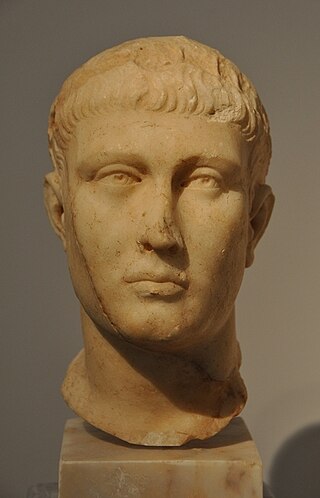
Theodosius I, also called Theodosius the Great, was Roman emperor from 379 to 395. During his reign, he succeeded in a crucial war against the Goths, as well as in two civil wars, and was instrumental in establishing the creed of Nicaea as the doctrine for Christianity. Theodosius was the last emperor to rule the entire Roman Empire before its administration was permanently split between two separate courts.

In the Roman Empire during Late Antiquity, the adventus was a ceremony held to celebrate the arrival at a city of a Roman emperor or other dignitaries. The imperial adventus was the period's "ceremonial par excellence", celebrating both the emperor's arrival and the blessing of the imperial presence itself on the city's security. The term is also used to refer to artistic depictions of such ceremonies.

Constantinople was the capital of the Roman Empire, and later, the Eastern Roman Empire, the Latin Empire (1204–1261), and the Ottoman Empire (1453–1922). Following the Turkish War of Independence, the Turkish capital then moved to Ankara. Officially renamed Istanbul in 1930, the city is today the largest city and financial centre of the Republic of Turkey (1923–present). It is also the largest city in Europe.
Börje Salming, Swedish hockey player (b. 1951) deaths

Anders Börje Salming was a Swedish ice hockey player. He was a defenceman who played professionally for 23 seasons, for the clubs Brynäs IF, Toronto Maple Leafs, Detroit Red Wings, and AIK. He spent 16 seasons with the Maple Leafs, who retired his number 21 in 2016. Salming holds several Maple Leafs records, including the most assists. Salming also played extensively for Sweden in international competitions, winning two World Championship medals.
Goo Hara, South Korean singer and actress (b. 1991) deaths

Goo Hara, also known mononymously as Hara, was a South Korean pop singer and actress. She was a member of the girl group Kara, and had also appeared in television dramas including City Hunter (2011). She made her debut as a soloist in July 2015 with the release of her EP Alohara . After Kara disbanded in 2016, she continued her solo career at another agency, KeyEast. Her solo career was interrupted in 2018 after she became embroiled in a legal case with her ex-boyfriend, Choi Jong-Bum, which was initiated when he assaulted Goo and threatened to release their sex video to harm her career. In June 2019, she continued her solo activities in Japan where she was well received by fans. Her last release was a maxi single "Midnight Queen", released on September 19, 2019.
Paul Futcher, English footballer (b. 1956) deaths
Paul Futcher was an English professional footballer who had a distinguished career as a defender in the English Football League, for England under 21s and as manager of several non-league clubs.
Florence Henderson, American actress, singer and television personality (b. 1934) deaths

Florence Agnes Henderson was an American actress. With a career spanning six decades, she is best known for her starring role as Carol Brady on the ABC sitcom The Brady Bunch. Henderson also appeared in film, as well as on stage, and hosted several long-running cooking and variety shows over the years. She appeared as a guest on many scripted and unscripted television programs and as a panelist on numerous game shows. She was a contestant on Dancing with the Stars in 2010.
Robert Ford, English general (b. 1923) deaths
General Sir Robert Cyril Ford was a British Army general who was Adjutant-General to the Forces. The Bloody Sunday shootings occurred during his tenure as Commander Land Forces, Northern Ireland.
John Forrester, English historian and philosopher (b. 1949) deaths
John Forrester was a British historian and philosopher of science and medicine. His main interests were in the history of the human sciences, in particular psychoanalysis and psychiatry.
Quincy Monk, American football player (b. 1979) deaths
Quincy Omar Monk was an American football linebacker in the National Football League for the New York Giants and the Houston Texans. He was drafted in the seventh round of the 2002 NFL Draft by the Giants. He played college football at North Carolina.
Heinz Oberhummer, Austrian physicist, astronomer, and academic (b. 1941) deaths

Heinz Oberhummer was an Austrian physicist and skeptic.
Douglas W. Shorenstein, American businessman (b. 1955) deaths
Douglas W. Shorenstein was a San Francisco-based real estate developer and former chairman of the board of directors of the Federal Reserve Bank of San Francisco.
Jorge Herrera Delgado, Mexican engineer and politician (b. 1961) deaths
Jorge Herrera Delgado was a Mexican politician. A graduate in industrial engineering from the Durango Institute of Technology (ITD), he was a member of the Institutional Revolutionary Party. He founded the radio station XHITD-FM Estéreo Tecnológico in Durango. He was Mayor of Durango from 2004-2007 and a two-time deputy in the Durango state congress. He was designated by Governor Jorge Herrera Caldera to head the Durango Department of Education from 15 September 2010 to 7 February 2012.
Murli Deora, Indian politician, Indian Minister of Corporate Affairs (b. 1937) deaths

Murli Deora was an Indian politician, businessman, and social worker. He was the Mayor of Mumbai, a Member of Parliament in both the Upper and Lower Houses, and a Minister of Cabinet rank. He was a member of the Indian National Congress.

The Ministry of Corporate Affairs is an Indian government ministry primarily concerned with administration of the Companies Act 2013, the Companies Act 1956, the Limited Liability Partnership Act, 2008, and the Insolvency and Bankruptcy Code, 2016.
Peter Henderson, New Zealand rugby player (b. 1926) deaths
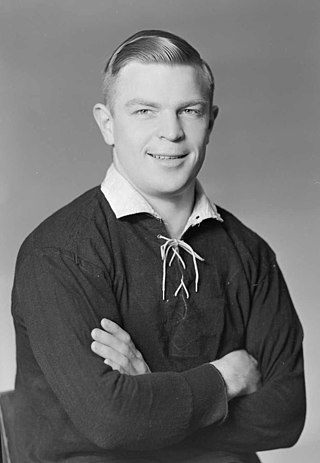
Peter "Sammy" Henderson was a New Zealand rugby union and rugby league footballer. He also competed at the 1950 British Empire Games in Auckland, winning a bronze medal in the 4 x 110 yards men's relay.
Nenad Manojlović, Serbian water polo player and manager (b. 1957) deaths

Nenad Manojlović was a Yugoslav and Serbian water polo player and manager. As manager of Serbia and Montenegro men's national water polo team, Manojlović won silver and bronze medals in the Summer Olympics in Athens 2004 and Sydney 2000, silver and bronze medals in the World Championships 2001 in Fukuoka and 2003 in Barcelona and gold medals in the European championships 2001 in Budapest and 2003 in Kranj.
Viktor Tikhonov, Russian ice hockey player and coach (b. 1930) deaths

Viktor Vasilyevich Tikhonov was a Soviet ice hockey player and coach. Tikhonov was a defenceman with VVS Moscow and Dynamo Moscow from 1949 to 1963, winning four national championships. He was the coach of the Soviet team when it was the dominant team in the world, winning eight World Championship gold medals, as well as Olympic gold in 1984, 1988, and 1992. Tikhonov also led CSKA Moscow to twelve consecutive league championships. He was named to the IIHF Hall of Fame as a builder in 1998.
Matthew Bucksbaum, American businessman and philanthropist, co-founded General Growth Properties (b. 1926) deaths

Matthew Bucksbaum was an American businessman and philanthropist. Matthew and his brothers Martin and Maurice co-founded General Growth Properties.

GGP Inc. was an American commercial real estate company and the second-largest shopping mall operator in the United States. It was founded by brothers Martin, Matthew and Maurice Bucksbaum in Cedar Rapids, Iowa in 1954, and was headquartered in Chicago, Illinois from 2000. It was subject to the largest real estate bankruptcy in American history at the time of its filing in 2009.
Arnaud Coyot, French cyclist (b. 1980) deaths

Arnaud Coyot was a French road bicycle racer, who competed as a professional from 2003 to 2012. He had two race victories, and finished in tenth place in the 2005 Paris–Roubaix race, and tenth place in the 14th stage of the 2006 Tour de France.
Lou Hyndman, Canadian lawyer and politician (b. 1935) deaths
Louis Davies Hyndman, was a Canadian lawyer and politician from Alberta. He served as a Member of the Legislative Assembly of Alberta for 19 years and was a member of Premier Peter Lougheed and Don Getty's Cabinets. Hyndman was named the 15th Chancellor of the University of Alberta on June 10, 1994. From 1993 through 1996, he was Honorary Captain of the 4th Destroyer Squadron, Royal Canadian Navy.
June Keithley, Filipino actress and journalist (b. 1947) deaths
June Keithley-Castro was a Filipina actress and broadcast journalist.
Jean King, American politician, 6th Lieutenant Governor of Hawaii (b. 1925) deaths

Jean Sadako King, née McKillop was the sixth lieutenant governor of Hawaii, the state's first woman to be elected as such, from 1978 to 1982 in the administration of Governor George Ariyoshi.

The lieutenant governor of Hawaii is the assistant chief executive of the U.S. state of Hawaii and its various agencies and departments, as provided in the Article V, Sections 2 though 6 of the Constitution of Hawaii. Elected by popular suffrage of residents of the state on the same ticket as the governor of Hawaii, the officeholder is concurrently the secretary of State of Hawaii.
Robin Leigh-Pemberton, Baron Kingsdown, English banker and politician, Governor of the Bank of England (b. 1927) deaths
Robert "Robin" Leigh-Pemberton, Baron Kingsdown, was a British Peer and banker, who served as Governor of the Bank of England from 1983 to 1993.
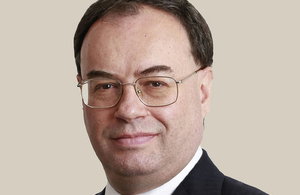
The governor of the Bank of England is the most senior position in the Bank of England. It is nominally a civil service post, but the appointment tends to be from within the bank, with the incumbent grooming their successor. The governor of the Bank of England is also chairman of the Monetary Policy Committee, with a major role in guiding national economic and monetary policy, and is therefore one of the most important public officials in the United Kingdom.
Matti Ranin, Finnish actor (b. 1926) deaths
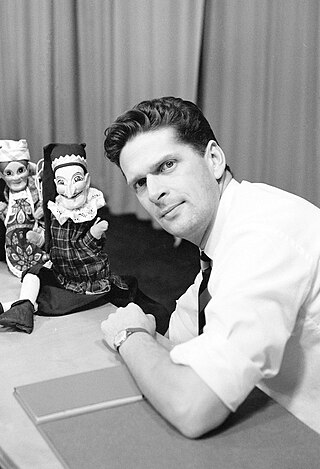
Matti Helge Ranin was a Finnish actor.
Héctor Camacho, Puerto Rican-American boxer (b. 1962) deaths

Héctor Luís Camacho Matías, commonly known by his nickname "Macho" Camacho, was a Puerto Rican professional boxer and entertainer. Known for his quickness in the ring and flamboyant style, Camacho competed professionally from 1980 to 2010, and was a world champion in three weight classes. He held the WBC super featherweight title from 1983 to 1984, the WBC lightweight title from 1985 to 1987, and the WBO junior welterweight title twice between 1989 and 1992.
Antoine Kohn, Luxembourgian footballer and manager (b. 1933) deaths

Antoine "Spitz" Kohn was a Luxembourg football player and football manager.
Jimmy Stewart, American baseball player and manager (b. 1939) deaths
James Franklin Stewart was an American Major League Baseball utility man and scout. During his active career, he appeared in 777 MLB games for the Chicago Cubs, Chicago White Sox, Cincinnati Reds and Houston Astros over ten seasons between 1963 and 1973. He was a switch hitter who threw right handed, and was listed as 6 feet (1.8 m) tall and 165 pounds (75 kg).
Nicholas Turro, American chemist and academic (b. 1938) deaths
Nicholas J. Turro was an American chemist, Wm. P. Schweitzer Professor of Chemistry at Columbia University. He was a world renowned organic chemist and leading world expert on organic photochemistry. He was the recipient of the 2011 Arthur C. Cope Award in Organic Chemistry, given annually "to recognize outstanding achievement in the field of organic chemistry, the significance of which has become apparent within the five years preceding the year in which the award will be considered." He was also the recipient of the 2000 Willard Gibbs Award, which recognizes "eminent chemists who...have brought to the world developments that enable everyone to live more comfortably and to understand this world better."
Ernie Warlick, American football player and sportscaster (b. 1932) deaths
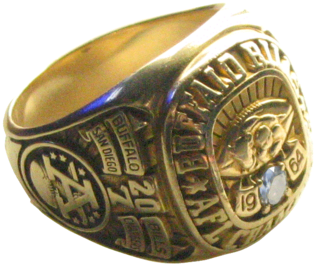
Ernest "Ernie" "Big Hoss" Warlick was a tight end from North Carolina Central University who played American collegiate and Professional Football as well as Canadian Professional Football.
Huang Hua, Chinese translator and politician, 5th Foreign Minister of the People's Republic of China (b. 1913) deaths
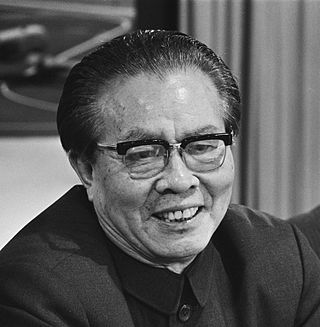
Huang Hua was a senior Communist Chinese revolutionary, politician, and diplomat. He served as Foreign Minister of China from 1976 to 1982, and concurrently as Vice Premier from 1980 to 1982. He was instrumental in establishing diplomatic links of the People's Republic of China with the United States and Japan, and was intensely involved in the negotiations with the United Kingdom over the status of Hong Kong.

The Minister of Foreign Affairs of the People's Republic of China is the head of the Ministry of Foreign Affairs of the People's Republic of China and one of the country's most important cabinet posts. The Minister usually is also a member of the Central Committee of the Chinese Communist Party.
Abe Pollin, American businessman and philanthropist (b. 1923) deaths

Abraham J. Pollin was the owner of a number of professional sports teams including the Washington Capitals in the National Hockey League (NHL), the Washington Mystics in the Women's National Basketball Association (WNBA), and the Baltimore / Washington Bullets / Wizards in the National Basketball Association (NBA). Pollin was the longest-tenured owner of an NBA team, holding the Packers / Zephyrs / Bullets / Wizards franchise for 46 years.
Samak Sundaravej, Thai politician, 25th Prime Minister of Thailand (b. 1935) deaths
Samak Sundaravej was a Thai politician who briefly served as the Prime Minister of Thailand and Minister of Defense in 2008, as well as the leader of the People's Power Party in 2008.
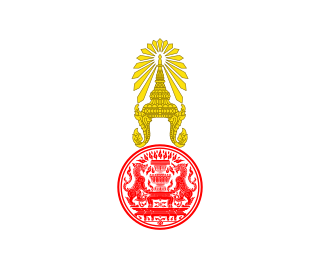
The prime minister of Thailand is the head of government of Thailand. The prime minister is also the chair of the Cabinet of Thailand. The post has existed since the Revolution of 1932, when the country became a constitutional monarchy. Prior to the coup d'état, the prime minister was nominated by a vote in the Thai House of Representatives by a simple majority, and is then appointed and sworn-in by the king of Thailand. The house's selection is usually based on the fact that either the prime minister is the leader of the largest political party in the lower house or the leader of the largest coalition of parties. In accordance with the 2017 Constitution, the Prime Minister can hold the office for no longer than eight years, consecutively or not. The post of Prime Minister is currently held by retired general Prayut Chan-o-cha, since the 2014 coup d'état.
Jun Ross, Filipino basketball player (b. 1949) deaths
Jun Ross Jr. was born on July 14, 1949 to Lyle Ross Sr. and Maddamou. Lyle is often referred to and remembered lovingly as "Jun". He is a noted player of the Ateneo Blue Eagles basketball team. He graduated from Ateneo de Manila University in 1971. He was a member of the 1971 MICAA Meralco commercial league Basketball team.
Kenny MacLean, Scottish-Canadian bass player and songwriter (b. 1956) deaths
Kenneth Irving MacLean was a Scottish-Canadian musician, best known as a member of the multi-platinum selling band Platinum Blonde.
Cecil H. Underwood, American educator and politician, 25th Governor of West Virginia (b. 1922) deaths
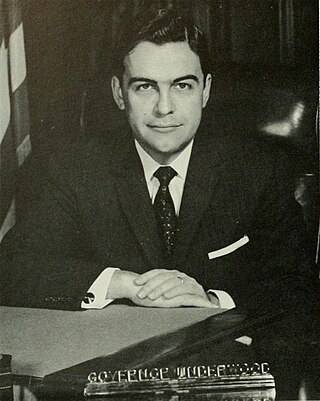
Cecil Harland Underwood was an American Republican Party politician from West Virginia, known for the length of his career.
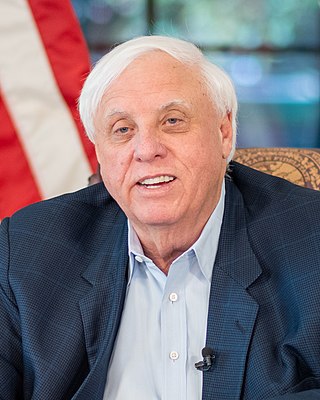
The governor of West Virginia is the head of government of West Virginia and the commander-in-chief of the state's military forces. The governor has a duty to enforce state laws, and the power to either approve or veto bills passed by the West Virginia Legislature, to convene the legislature at any time, and, except when prosecution has been carried out by the House of Delegates, to grant pardons and reprieves.
Casey Calvert, American guitarist (b. 1981) deaths

Hawthorne Heights, formerly A Day in the Life, is an American rock band from Dayton, Ohio, formed in 2001. Their lineup currently consists of JT Woodruff, Matt Ridenour, Mark McMillon, and Chris Popadak.
Juice Leskinen, Finnish singer-songwriter (b. 1950) deaths
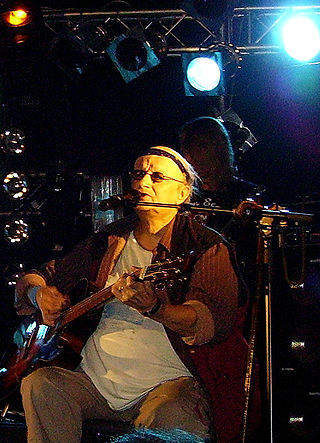
Juhani Juice Leskinen, better known as Juice Leskinen was one of the most important and successful Finnish singer-songwriters of the late 20th century. From the early 1970s onward he released nearly 30 full-length albums and wrote song lyrics for dozens of other Finnish artists. Several of Leskinen's songs have reached classic status in Finnish popular music, e.g., "Viidestoista yö", "Kaksoiselämää" and "Syksyn sävel". His early records are considered staples of the so-called Manserock movement of the mid-'70s. He also wrote poetry and plays and published nine collections of verse and seven plays.
George W. S. Trow, American author, playwright, and critic (b. 1943) deaths
George William Swift Trow, Jr. was an American essayist, novelist, playwright, and media critic. He worked for The New Yorker for almost 30 years, and wrote numerous essays and several books. He is best known for his long essay on television and its effect on American culture, "Within the Context of No Context," first published in The New Yorker on November 17, 1980, one of the few times the magazine devoted its central section to a single piece of writing.
Zdeněk Veselovský, Czech zoologist and ethologist (b. 1938) deaths

Zdeněk Veselovský was one of the most important Czech zoologists of the 20th century, founder of Czech ethology, director of the Prague Zoo (1959-1988) and the president of the International Union of Directors of Zoological Gardens (1971-1975) He was born in Jaroměř and died in 2006, aged 74, in Prague. In November 2008, he received the Minister of the Environment Award in memoriam "for his lifelong work in the field of zoology and ethology and for his admirable activity in activities involved in the conservation of animal species and the promotion of zoos as educational institutions."
Pat Morita, American actor (b. 1932) deaths

Noriyuki "Pat" Morita was an American actor and comedian. He was known for his roles as Matsuo "Arnold" Takahashi on Happy Days, Mr. Miyagi in The Karate Kid film series, Captain Sam Pak on the sitcom M*A*S*H, Ah Chew in Sanford and Son, Mike Woo in The Mystery Files of Shelby Woo, and The Emperor of China in Mulan and Mulan II. He was the series lead actor in the television program Mr. T and Tina and in Ohara, a police-themed drama. The two shows made history for being among the few TV shows with an Asian-American series lead.
Arthur Hailey, English-Canadian journalist and author (b. 1920) deaths

Arthur Frederick Hailey, AE was a British-Canadian novelist whose plot-driven storylines were set against the backdrops of various industries. His books, which include such best sellers as Hotel (1965), Airport (1968), Wheels (1971), The Moneychangers (1975), and Overload (1979), have sold 170 million copies in 38 languages.
Joseph Hansen, American author and poet (b. 1923) deaths

Joseph Hansen was an American crime writer and poet, best known for a series of novels featuring private eye Dave Brandstetter.
James Wong, Chinese actor and songwriter (b. 1940) deaths

James Wong Jim was a Cantopop lyricist and songwriter based primarily in Hong Kong. Beginning from the 1960s, he was the lyricist for over 2,000 songs, collaborating with songwriter Joseph Koo on many popular television theme songs, many of which have become classics of the genre. His work propelled Cantopop to unprecedented popularity.
Warren Spahn, American baseball player and coach (b. 1921) deaths

Warren Edward Spahn was an American professional baseball pitcher who played 21 seasons in Major League Baseball (MLB). A left-handed pitcher, Spahn played in 1942 and then from 1946 until 1965, most notably for the Boston Braves, who became the Milwaukee Braves after the team moved west before the 1953 season. His baseball career was interrupted by his military service in the United States Army during World War II.
John Rawls, American philosopher, author, and academic (b. 1921) deaths

John Bordley Rawls was an American moral, legal and political philosopher in the liberal tradition. Rawls received both the Schock Prize for Logic and Philosophy and the National Humanities Medal in 1999, the latter presented by President Bill Clinton, in recognition of how Rawls's work "revived the disciplines of political and ethical philosophy with his argument that a society in which the most fortunate help the least fortunate is not only a moral society but a logical one".
Barbara, French singer-songwriter and actress (b. 1930) deaths

Monique Andrée Serf, known as Barbara, was a French singer. She took her stage name from her grandmother, Varvara Brodsky, a native of Odessa, Russian Empire. Barbara became a famous cabaretière in the late 1950s in Paris, known as La Chanteuse de minuit, before she started composing her own tracks, which brought her to fame. Her most famous songs include "Dis, quand reviendras-tu ?" (1962), "Ma plus belle histoire d'amour" (1966) and "L'Aigle noir" (1970), the latter of which sold over 1 million copies in just twelve hours. She was buried at the Cimetière parisien de Bagneux, adjacent to the Paris Métro station named in her honour. The station Barbara opened 13 January 2022, on a southern extension of Line 4.
Sorley MacLean, Scottish soldier and poet (b. 1911) deaths

Sorley MacLean was a Scottish Gaelic poet, described by the Scottish Poetry Library as "one of the major Scottish poets of the modern era" because of his "mastery of his chosen medium and his engagement with the European poetic tradition and European politics". Nobel Prize Laureate Seamus Heaney credited MacLean with saving Scottish Gaelic poetry.
Eduard Ole, Estonian-Swedish painter (b. 1898) deaths
Eduard Ole was an Estonian painter. Some of his most representative works are on permanent exhibition at the Kumu Art Museum of Estonia.
Nabil Bentaleb, Algerian footballer births

Nabil Bentaleb is an Algerian professional footballer who plays as a midfielder for Ligue 1 club Angers and the Algeria national team.
Ivi Adamou, Cypriot-Greek singer-songwriter births

Ivi Adamou is a Greek-Cypriot singer. She was born and raised in Agia Napa, Cyprus and currently resides in Alexandroupoli, Greece. Adamou rose to recognition in Greece and Cyprus following her participation in the second season of the Greek version of The X Factor, where she was under the mentorship of Giorgos Theofanous. Right after her elimination from the X Factor, Adamou secured a recording contract with Sony Music Greece. She gained further recognition from her participation in the Eurovision Song Contest 2012, where she represented Cyprus with the song "La La Love".
Joe Pigott, English footballer births

Joseph David Wozencroft Pigott is an English professional footballer who plays as a striker for League One club Portsmouth on loan from Ipswich Town.
Albert Collins, American singer-songwriter and guitarist (b. 1932) deaths

Albert Gene Drewery, known as Albert Collins and the Ice Man, was an American electric blues guitarist and singer with a distinctive guitar style. He was noted for his powerful playing and his use of altered tunings and a capo. His long association with the Fender Telecaster led to the title "The Master of the Telecaster".
Sergei Kulbach, Ukrainian figure skater births

Sergei Kulbach is a Ukrainian pair skater. He won national titles with former partners Elizaveta Usmantseva and Natalja Zabijako. With Zabijako, he also competed at the 2011 World Championships, placing 16th.
Freddie Mercury, Tanzanian-English singer-songwriter, lead vocalist of Queen, and producer (b. 1946) deaths
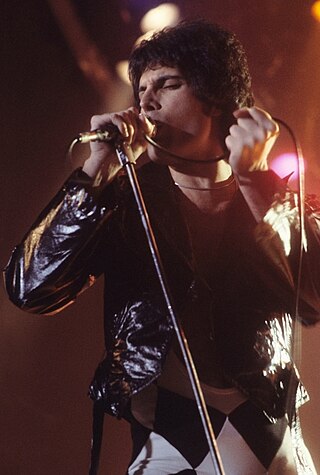
Freddie Mercury was a British singer and songwriter, who achieved worldwide fame as the lead vocalist of the rock band Queen. Regarded as one of the greatest singers in the history of rock music, he was known for his flamboyant stage persona and four-octave vocal range. Mercury defied the conventions of a rock frontman with his theatrical style, influencing the artistic direction of Queen.
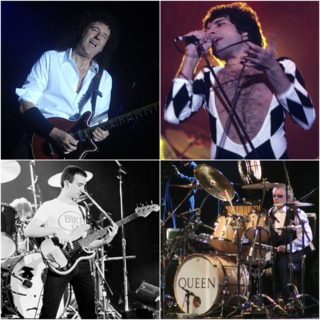
Queen are a British rock band formed in London in 1970 by Freddie Mercury, Brian May and Roger Taylor, later joined by John Deacon (bass). Their earliest works were influenced by progressive rock, hard rock and heavy metal, but the band gradually ventured into more conventional and radio-friendly works by incorporating further styles, such as arena rock and pop rock.
Eric Carr, American drummer of KISS (b. 1950) deaths

Paul Charles Caravello, better known professionally as Eric Carr, was an American musician who was the drummer for the rock band Kiss from 1980 to 1991. Caravello was selected as the new Kiss drummer after Peter Criss departed, when he chose the stage name "Eric Carr" and took up The Fox persona. He remained a member of Kiss until his death from heart cancer on November 24, 1991, at the age of 41.
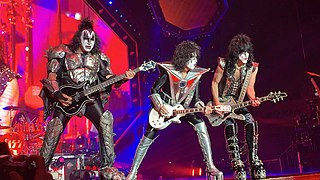
Kiss is an American rock band formed in New York City in 1973 by Paul Stanley, Gene Simmons, Ace Frehley, and Peter Criss. Known for their face paint and stage outfits, the group rose to prominence in the mid-1970s with shock rock-style live performances, which featured fire-breathing, blood-spitting, smoking guitars, shooting rockets, levitating drum kits, and pyrotechnics. The band has gone through several lineup changes, with Stanley and Simmons remaining the only consistent members. The original and best-known lineup consisted of Stanley, Simmons, Frehley, and Criss.
Sarah Hyland, American actress births

Sarah Jane Hyland is an American actress and singer. Born in Manhattan, she attended the Professional Performing Arts School before having small roles in the films Private Parts (1997), Annie (1999) and Blind Date (2007). She is best known for playing Haley Dunphy in the ABC sitcom Modern Family (2009–2020), for which she received much acclaim, including four Screen Actors Guild Awards for Outstanding Performance by an Ensemble in a Comedy Series and a nomination for the Critics' Choice Television Award for Best Supporting Actress in a Comedy Series. In August 2022, Hyland began hosting Love Island USA on Peacock.
Tom Odell, English singer-songwriter births

Thomas Peter Odell is an English singer-songwriter. He released his debut extended play, Songs from Another Love, in 2012. It won the BRITs Critics' Choice Award in early 2013. Odell's debut studio album, Long Way Down, was issued on 24 June 2013. Three years later, his follow-up studio album, Wrong Crowd, was released, on 10 June 2016. This was followed by the release two years later, on 26 October 2018, of his third studio album, Jubilee Road. Monsters, his fourth album, was released on 9 July 2021, while his fifth album, Best Day Of My Life, was released the next year, on 28 October 2022.
Michael Oldfield, Australian rugby league player births

Michael Oldfield is a Tonga international rugby league footballer who last played as a winger and centre for the Parramatta Eels in the NRL.
Mario Gaspar, Spanish footballer births

Mario Gaspar Pérez Martínez is a Spanish professional footballer who plays for EFL Championship club Watford as a right-back.
Juan Manuel Bordeu, Argentinian race car driver (b. 1934) deaths

Juan Manuel Bordeu was a racing driver from Balcarce, Argentina. A protégé of Juan Manuel Fangio, Bordeu had a successful early career but a bad testing accident wrecked his chances in Formula One. His only World Championship Formula One entry was at the 1961 French Grand Prix in a Lotus run by the UDT Laystall team, but the car was eventually driven by Lucien Bianchi.
Fred Shero, Canadian ice hockey player and coach (b. 1925) deaths

Frederick Alexander Shero, nicknamed The Fog was a Canadian professional ice hockey player, coach, and general manager. He played for the New York Rangers of the National Hockey League (NHL). However, he spent most of his playing career in the minor leagues. Following his playing career, Shero went into coaching. He spent 13 years coaching in the minor leagues before making it to the NHL. As the head coach of the NHL's Philadelphia Flyers, Shero won the Stanley Cup in 1974 and 1975 and reached the Stanley Cup Finals a third time, in 1976. He also had four consecutive seasons of having a 0.700 or better winning percentage and remains the Flyers all-time leader in coaching victories. Shero controversially left the Flyers following the 1977–78 season to become the head coach of the New York Rangers, whom he led to the Stanley Cup Finals in his first season. He resigned from the Rangers after coaching for less than three seasons. Shero had a unique style of coaching that led to several innovations that are still used today. He was the first coach to hire a full-time assistant coach, employ systems, have his players use in season strength training, study film, and he was one of the first coaches to utilize a morning skate. In 2013 Shero was recognized for his contributions when he was elected to the Hockey Hall of Fame as a builder.
Dodie Smith, English author and playwright (b. 1896) deaths

Dorothy Gladys "Dodie" Smith was an English novelist and playwright. She is best known for writing I Capture the Castle (1948) and the children's novel The Hundred and One Dalmatians (1956). Other works include Dear Octopus (1938) and The Starlight Barking (1967). The Hundred and One Dalmatians was adapted into a 1961 animated film and a 1996 live-action film, both produced by Disney. Her novel I Capture the Castle was adapted into a 2003 film version. I Capture the Castle was voted number 82 as "one of the nation's 100 best-loved novels" by the British public as part of the BBC's The Big Read (2003).
Marion Post Wolcott, American photographer (b. 1910) deaths

Marion Post Wolcott was an American photographer who worked for the Farm Security Administration during the Great Depression documenting poverty, the Jim Crow South, and deprivation.
Bülent Arel, Turkish-American composer and educator (b. 1919) deaths
Bülent Arel was a Turkish-born composer of contemporary classical music and electronic music.
Jehane Benoît, Canadian journalist and author (b. 1904) deaths
Jehane Benoît, was a Canadian culinary author, speaker, commentator, journalist and broadcaster.
Pedro León, Spanish footballer births

Pedro León Sánchez Gil, known as León, is a Spanish professional footballer who plays as a right winger for Real Murcia.
Mohamed Massaquoi, American football player births

Mohamed Jah Massaquoi is a former American football wide receiver. He played college football at Georgia and was drafted by the Cleveland Browns in the second round of the 2009 NFL Draft.
Julia Alexandratou, Greek model, actress, and singer births

Julia Alexandratou is a Greek socialite, media personality, glamour model, singer, actress, and pornographic actress. In 2002, at age 16, she won the beauty pageant title "Miss Young" in Greece. Four years later, Alexandratou won the title "Miss Greece International 2006" at the Miss Star Hellas beauty pageant. In 2010, a controversial celebrity sex tape featuring Alexandratou was released. She later admitted that she was paid for her participation in the film. In 2011, Alexandratou attracted controversy again, after the release of a second pornographic video.
Tony Hunt, American football player births
Antonio Christopher Hunt is a former American football running back. He was drafted by the Philadelphia Eagles in the third round of the 2007 NFL Draft. He played two NFL seasons. He also played one season in Austrian Football League. Hunt played college football at Penn State.
Maria Höfl-Riesch, German skier births

Maria Höfl-Riesch is a former German World Cup alpine ski racer. She is a three-time Olympic champion, two-time world champion, and an overall World Cup champion.
Dean Ashton, English footballer births

Dean Ashton is an English former professional footballer. He made over 240 appearances as a forward in the Football League and Premier League for Crewe Alexandra, Norwich City and West Ham United, and was capped by England. He was highly praised as a talented centre forward, but had a career frustrated by injury. He retired on 11 December 2009, aged 26, after failing to recover from a long-term ankle injury sustained during international duty with England.
Lars Eckert, German rugby player births
Lars Eckert is a German international rugby union player, playing for the SC Neuenheim in the Rugby-Bundesliga and the German national rugby union team.
André Laurito, German footballer births

André Laurito is a German footballer who plays for Bayernliga club SV Donaustauf.
Gwilym Lee, Welsh actor births

Gwilym Lee is a Welsh actor. He is best known for his roles in Jamestown, Midsomer Murders, Top End Wedding, The Great, and for playing guitarist Brian May in the Queen biopic Bohemian Rhapsody.
José López, Venezuelan baseball player births
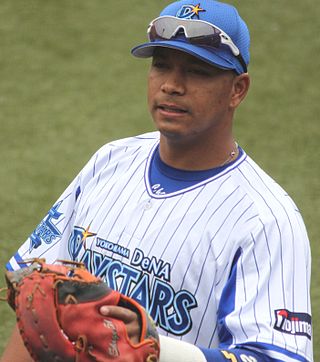
José Celestino López Echevarria is a Venezuelan former professional baseball infielder. López played in Major League Baseball (MLB) for the Seattle Mariners, Colorado Rockies, Florida Marlins, Cleveland Indians, and Chicago White Sox and for the Yomiuri Giants and Yokohama DeNA BayStars of Nippon Professional Baseball (NPB).
Karine Vanasse, Canadian actress and producer births
Karine Vanasse is a French-Canadian actress, who had roles in the films Polytechnique, Séraphin: Heart of Stone , Switch and Set Me Free (Emporte-moi). Internationally she is best known for her roles as Colette Valois in Pan Am, Margaux LeMarchal in Revenge and Lise Delorme in Cardinal.
Ryan Fitzpatrick, American football player births

Ryan Joseph Fitzpatrick is a former American football quarterback who played in the National Football League (NFL) for 17 seasons. During his career, Fitzpatrick started at quarterback for nine different teams, the most in league history. He is also the only NFL player to have a passing and rushing touchdown with eight different teams.
Sean O'Loughlin, English rugby player births

Sean O'Loughlin is an English former professional rugby league footballer who played as a loose forward for and captained the Wigan Warriors in the Super League, and has also played for Great Britain and England at international level.
Barack Obama, Sr., Kenyan economist and academic, father of Barack Obama, 44th President of the United States (b. 1936) deaths

Barack Hussein Obama Sr. was a Kenyan senior governmental economist and the father of Barack Obama, the 44th president of the United States. He is a central figure of his son's memoir, Dreams from My Father (1995). Obama married in 1954 and had two children with his first wife, Kezia. He was selected for a special program to attend college in the United States and studied at the University of Hawaii where he met Stanley Ann Dunham, whom he married in 1961 following the conception of his son, Barack II. Dunham divorced Obama three years later. The elder Obama later went to Harvard University for graduate school, where he earned an M.A. in economics, and returned to Kenya in 1964. He saw his son Barack once more, when his son was about 10.

Barack Hussein Obama II is an American politician who served as the 44th president of the United States from 2009 to 2017. A member of the Democratic Party, Obama was the first African-American president of the United States. He previously served as a U.S. senator from Illinois from 2005 to 2008 and as an Illinois state senator from 1997 to 2004, and previously worked as a civil rights lawyer before entering politics.
Kabir Ali, English cricketer births

Kabir Ali is an English former cricketer. A right-arm seam bowler and useful lower-order right-handed batsman, he played one Test match for England in 2003, while also earning 14 ODI caps between 2003 and 2006.
Beth Phoenix, American wrestler births

Elizabeth Copeland, known professionally as Beth Phoenix, is an American professional wrestler. She is a former WWE Divas Champion and a three-time WWE Women's Champion.
Herbert Agar, American journalist and historian (b. 1897) deaths

Herbert Sebastian Agar was an American journalist and historian, and an editor of the Louisville Courier-Journal.
George Raft, American actor and dancer (b. 1901) deaths

George Raft was an American film actor and dancer identified with portrayals of gangsters in crime melodramas of the 1930s and 1940s. A stylish leading man in dozens of movies, Raft is remembered for his gangster roles in Quick Millions (1931) with Spencer Tracy, Scarface (1932) with Paul Muni, Each Dawn I Die (1939) with James Cagney, Invisible Stripes (1939) with Humphrey Bogart, Billy Wilder's comedy Some Like It Hot (1959) with Marilyn Monroe and Jack Lemmon, and as a dancer in Bolero (1934) with Carole Lombard and a truck driver in They Drive by Night (1940) with Ann Sheridan, Ida Lupino and Bogart.
Molly Reilly, Canadian aviator (b. 1922) deaths
Moretta Fenton Beall "Molly" Reilly became the first female Canadian pilot to reach the rank of captain, the first female Canadian corporate pilot, and the first woman to fly to the Arctic professionally. Her modifications to the Beechcraft Duke were used to improve the aircraft. Over the course of her career, Reilly logged over 10,000 flight hours as a pilot-in-command — without a single accident. She is a member of the Canadian Aviation Hall of Fame.
Henrietta Hill Swope, American astronomer and academic (b. 1902) deaths

Henrietta Hill Swope was an American astronomer who studied variable stars. In particular, she measured the period-luminosity relation for Cepheid stars, which are bright variable stars whose periods of variability relate directly to their intrinsic luminosities. Their measured periods can therefore be related to their distances and used to measure the size of the Milky Way and distances to other galaxies.
Joseba Llorente, Spanish footballer births

Joseba Llorente Etxarri is a Spanish retired professional footballer who played as a centre-forward.
Katherine Heigl, American actress and producer births

Katherine Marie Heigl is an American actress and former fashion model. She played Dr. Izzie Stevens on the ABC television medical drama Grey's Anatomy from 2005 to 2010, a role that brought her recognition and accolades, including the Primetime Emmy Award for Outstanding Supporting Actress in a Drama Series in 2007.
Colin Hanks, American actor births
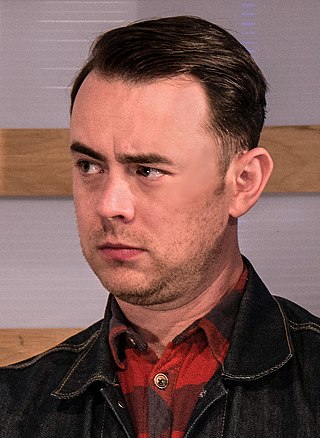
Colin Lewes Hanks is an American actor. He has starred in films including Orange County, King Kong, The House Bunny, The Great Buck Howard, and the Jumanji film series. His television credits include Roswell, Band of Brothers, Dexter, Fargo, The Good Guys, Life in Pieces, Impeachment: American Crime Story, The Offer, and A Friend of the Family. He is the eldest son of actor Tom Hanks.
Celaleddin Koçak, German-Turkish footballer births
Celaleddin Koçak is a Turkish footballer.
Christian Laflamme, Canadian ice hockey player births

Christian Lucien Laflamme is a Canadian former professional ice hockey defenceman. He played parts of eight seasons in the National Hockey League between 1996 and 2004.
Chen Lu, Chinese figure skater births

Chen Lu is a Chinese former figure skater. She is the 1994 and 1998 Olympic bronze medalist and the 1995 World Champion. Chen won the first ever Olympic medal in figure skating for China.
Mona Hanna-Attisha, British-American pediatrician, professor, and public health advocate births
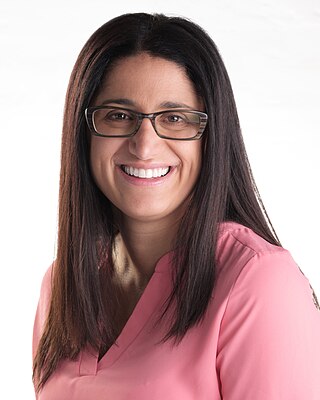
Mona Hanna-Attisha is a pediatrician, professor, and public health advocate whose research exposed the Flint water crisis. She is the author of the 2018 book What the Eyes Don't See, which The New York Times named as one of the 100 most notable books of the year.
Thomas Kohnstamm, American author births
Thomas Kohnstamm is an American author from Seattle, Washington.
Stephen Merchant, English actor, director, producer, and screenwriter births

Stephen James Merchant is an English comedian, actor, director, presenter and writer.
Machel Montano, Trinidadian singer-songwriter and producer births

Machel Jesus Montano is a Trinidadian soca singer, actor, record producer and songwriter. Known for his high energy, fast-paced, and often unpredictable on-stage performances, he is one of the genre’s most popular artists.
Tarō Yamamoto, Japanese actor and politician births

Tarō Yamamoto is a Japanese politician and former actor, who is the founder and current leader of the anti-establishment political party Reiwa Shinsengumi. Yamamoto served as a member of the House of Councillors from 2013 to 2019 and was a candidate in the 2020 Tokyo gubernatorial election.
Amy Faye Hayes, American boxing ring announcer and model births
Amy Hayes is an American ring announcer and model. She is a regular on Fox Sports Net. and a former regular on ESPN2's Friday Night Fights, Hayes has also announced on United States, ESPN, and Showtime. She has also been featured on Best Damn Sports Show Period. She became the exclusive Ring Announcer on Fox Sport's networks "Sunday Night Fights" series - under Promoter Dan Goossen, in 2001. Hayes was asked to announce the very first episode of ShoBox: The New Generation on Showtime.
Alejandro Ávila, Mexican telenovela actor births
Alejandro Ávila is a Mexican telenovela actor.
John Neihardt, American author and poet (b. 1881) deaths
John Gneisenau Neihardt was an American writer and poet, amateur historian and ethnographer. Born at the end of the American settlement of the Plains, he became interested in the lives of those who had been a part of the European-American migration, as well as the Indigenous peoples whom they had displaced.
Marek Lemsalu, Estonian footballer births

Marek Lemsalu is an Estonian former professional footballer. He played as a centre-back for Pärnu KEK, Sport Tallinn, Pärnu Kalakombinaat/MEK, Flora, Mainz 05, Kuressaare, Strømsgodset, Tulevik, Start, Bryne and Levadia.
Ruxandra Dragomir, Romanian tennis player births

Ruxandra Dragomir Ilie is a retired tennis player from Romania.
Cosmas Ndeti, Kenyan runner births
Cosmas Ndeti is a three-time winner of the Boston Marathon. He was the winner of the 1993, 1994, and 1995 races. He set the course record in 1994 with a time of 2:07:15, which was also the best marathon performance in 1994. That course record stood for 12 years until it was broken by one second when Robert Kipkoech Cheruiyot, a fellow Kenyan, won the 2006 race.
Keith Primeau, Canadian-American ice hockey player and coach births
Keith David Primeau is a Canadian former professional ice hockey centre who played 15 seasons in the National Hockey League (NHL) with the Detroit Red Wings, Hartford Whalers, Carolina Hurricanes and Philadelphia Flyers.
Doug Brien, American football player births
Douglas Robert Zachariah Brien is a former American football placekicker and American businessman. He played twelve seasons for seven teams in the National Football League: San Francisco, New Orleans, Indianapolis, Tampa Bay, Minnesota, New York Jets, and Chicago. Brien was picked in the third round of the 1994 NFL Draft by San Francisco out of the University of California, Berkeley. After retiring from the NFL, Brien co-founded the real estate investment firms Waypoint Homes and Mynd.
Julieta Venegas, American-Mexican singer-songwriter, guitarist, and producer births
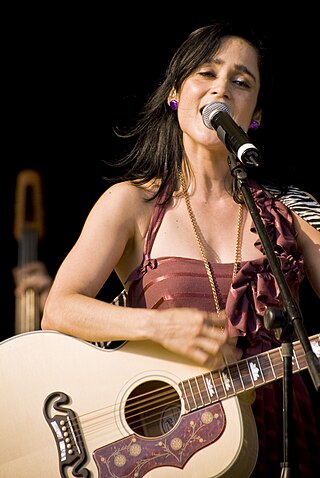
Julieta Venegas Percevault is an American-born Mexican singer, songwriter, instrumentalist and producer who sings pop-rock-indie in Spanish. She went on to join several bands including Mexican ska band Tijuana No!. Venegas plays 17 instruments including acoustic guitar, accordion, and keyboard.
Ashley Ward, English footballer and businessman births
Ashley Ward is an English former professional footballer who played as a centre forward.
David Adeang, Nauruan lawyer and politician births
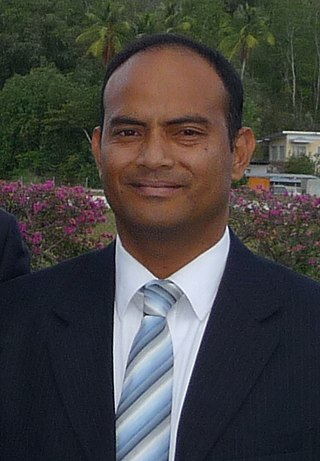
David Waiau Adeang is a Nauruan politician, former Speaker of the Parliament of Nauru, and Nauru's Minister of Finance and Justice, as well as the Minister Assisting the President of Nauru. He is a founding member of the Naoero Amo, currently the only successful political party on the island.
Romesh Kaluwitharana, Sri Lankan cricketer births
Deshabandu Romesh Shantha Kaluwitharana is a former Sri Lankan cricketer who represented the Sri Lanka national cricket team from 1990 to 2004. He was a key member and wicket-keeper for 1996 Cricket World Cup winning team and renowned for his aggressive batting style.
Rob Nicholson, American bass player and songwriter births

Rob "Blasko" Nicholson is an American bassist. He performed on Rob Zombie's solo albums and is currently part of Ozzy Osbourne's band. He is also noted for his contribution as bassist to metal band Cryptic Slaughter within underground metal circles.
Bülent Korkmaz, Turkish footballer and manager births

Bülent Korkmaz, colloquially known by his given nicknames "Büyük Kaptan" and "Cengaver", is a Turkish former professional footballer and current manager of TFF First League club Çaykur Rizespor.
Dawn Robinson, American singer and actress births

Dawn Sherrese Robinson is an American singer best known as a founding member of the R&B/pop group En Vogue, one of the world's best-selling girl groups of all time. Following her departure from En Vogue, Robinson joined Lucy Pearl and released their self-titled debut album Lucy Pearl in 2000, which went platinum worldwide and produced the successful singles "Dance Tonight" and "Don't Mess with My Man".
D. A. Levy, American poet and publisher (b. 1942) deaths

D.A. Levy, born Darryl Alfred Levey, was an American poet, artist, and alternative publisher active during the 1960s, based in Cleveland, Ohio.
Henrik Brockmann, Danish singer-songwriter births
Henrik Brockmann is a Danish heavy metal singer. He started singing at the age of 13 in local school bands. He released his first album 1992 with the Danish band Royal Hunt and was replaced 1994 by DC Cooper.
Cal Eldred, American baseball player and sportscaster births

Calvin John Eldred is an American former professional baseball pitcher who played for 14 seasons in Major League Baseball (MLB) from 1991 to 2005. He previously worked for the St. Louis Cardinals as a special assistant to general manager John Mozeliak, instructing minor league players for various on-field and off-field issues. On October 5th, 2022, Eldred was relieved of his duties as pitching coach for the Kansas City Royals.
Jon Hein, American radio personality births

Jon Hein is an American radio personality and former webmaster. He created the website jumptheshark.com and works for The Howard Stern Show. Hein has written three books, Jump the Shark: When Good Things Go Bad as well as Fast Food Maniac: From Arby’s to White Castle, One Man’s Supersized Obsession with American Fastfood. Hein also wrote, Jump the Shark: TV Edition. He is an alumnus of the University of Michigan where he appeared in the sketch comedy troupe Comedy Company with Jon Glaser. The two also were a part of the comedy troupe Just Kidding along with Craig Neuman.
Russell Watson, English tenor and actor births

Russell Watson is an English tenor who has released singles and albums of both operatic-style and pop songs. He began singing as a child, and became known after performing at a working men's club. He came to attention in 1999 when he sang "God Save the Queen" at the Rugby League Challenge Cup Final at Wembley Stadium, "Barcelona" at the last match of the Premiership season between Manchester United and Tottenham Hotspur at Old Trafford, and a full set of songs at the 1999 UEFA Champions League Final in Barcelona between Manchester United and Bayern Munich.
Shirley Henderson, Scottish actress births

Shirley Henderson is a Scottish actress. Her accolades include two Scottish BAFTAs, a VFCC Award and an Olivier Award, as well as BAFTA, BIFA, London Critics' Circle, Chlotrudis, Gotham, and Canadian Screen Award nominations.
Abdullah III Al-Salim Al-Sabah, Kuwaiti ruler (b. 1895) deaths

Sheikh Abdullah Al-Salim Al-Sabah was the eleventh ruler of the Sheikhdom of Kuwait and commander-in-chief of Kuwait Military Forces from 29 January 1950 to his death in 1965; he became the first Emir of the State of Kuwait after the country gained its independence from Great Britain on 19 June 1961.
Garret Dillahunt, American actor births

Garret Lee Dillahunt is an American actor. He is best known for his work in television, including the roles Burt Chance on the Fox sitcom Raising Hope, for which he was nominated for the Critics' Choice Television Award for Best Actor in a Comedy Series, Jack McCall and Francis Wolcott in Deadwood, and John Dorie in Fear the Walking Dead (2018–2021). He has also appeared in The 4400, ER, Terminator: The Sarah Connor Chronicles, Raising Hope, Justified, and The Mindy Project (2015–2017). He starred in the Amazon Studios drama series Hand of God (2014–2017).
Brad Sherwood, American actor and game show host births
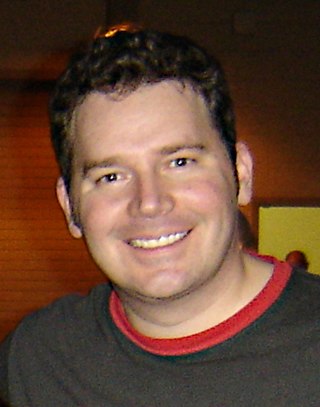
Bradley Sherwood is an American actor, singer, comedian, game show host and writer.
Neale Cooper, Scottish footballer (d. 2018) births
Neale James Cooper was a Scottish football player and coach. He played as a midfielder during the 1980s and 1990s, most prominently for the Aberdeen team managed by Alex Ferguson, and later played for Aston Villa, Rangers, Reading, Dunfermline Athletic and Ross County. Cooper then became a coach, and worked as a manager in England with Hartlepool United (twice) and Gillingham, and in Scotland with Ross County and Peterhead.
Lee Harvey Oswald, American assassin of John F. Kennedy (b. 1939) deaths

Lee Harvey Oswald was a U.S. Marine veteran who assassinated John F. Kennedy, the 35th president of the United States, on November 22, 1963.

John Fitzgerald Kennedy, often referred to by his initials JFK and the nickname Jack, was an American politician who served as the 35th president of the United States from 1961 until his assassination near the end of his third year in office. Kennedy was the youngest person to assume the presidency by election. He was also the youngest president at the end of his tenure. Kennedy served at the height of the Cold War, and the majority of his work as president concerned relations with the Soviet Union and Cuba. A Democrat, he represented Massachusetts in both houses of the U.S. Congress prior to his presidency.
John Kovalic, English author and illustrator births
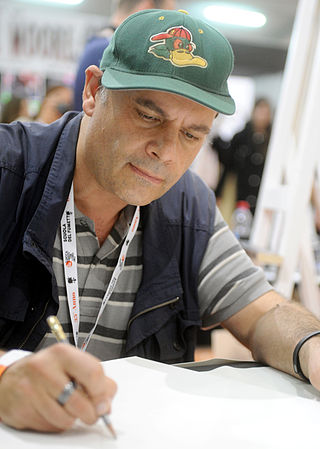
John Kovalic is an American cartoonist, illustrator, and writer.
John Squire, English singer-songwriter and guitarist births

Jonathan Thomas "John" Squire is an English musician, songwriter and painter. He was the guitarist for The Stone Roses, a rock band in which he formed a songwriting partnership with lead singer Ian Brown. After leaving the Stone Roses he went on to found The Seahorses and has since released two solo albums. In 2007, Squire gave up music to fully commit to painting. However, he later returned to music when the Stone Roses reformed in 2011. When the Stone Roses disbanded for a second time in 2017 Squire once again returned to painting. However, he continues to play guitar occasionally, including making guest appearances for two shows with Liam Gallagher at Knebworth in 2022.
Paul Thorburn, German-Welsh rugby player and manager births
Paul Thorburn (born 24 November 1962 in Rheindahlen, West Germany) is a former Neath RFC and international Wales rugby union player who played at full back and also featured in the Welsh international team.
Ioannis Topalidis, Greek footballer and manager births

Ioannis Topalidis is a Greek professional football manager and former player.
Tracey Wickham, Australian swimmer births

Tracey Lee Wickham is an Australian former middle distance swimmer. Wickham was the World Champion for the 400 m and 800 m freestyle in 1978, and won gold in both events at the 1978 and 1982 Commonwealth Games. She is a former world record holder for the 400 m, 800 m and 1500 m freestyle. Despite her success in the pool, Wickham has battled hardship and personal tragedy throughout her life.
Carlos Carnero, Spanish lawyer and politician births
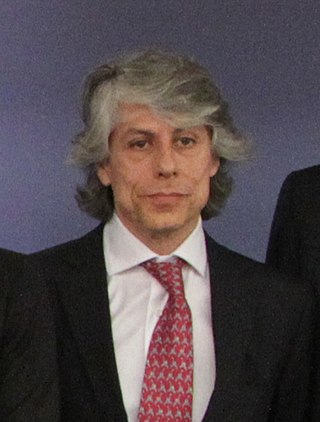
Carlos Carnero González is a Member of the European Parliament for the Spanish Socialist Workers' Party (PSOE). He has been a Member of the European Parliament (MEP) since 1994. On 7 December 2006, he was appointed a member of the presidency of the Party of European Socialists (PES).
Arundhati Roy, Indian writer and activist, recipient of Booker Prize births
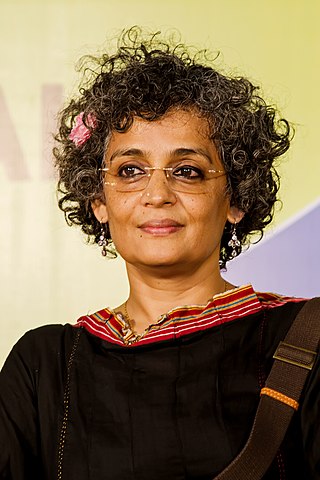
Suzanna Arundhati Roy is an Indian author best known for her novel The God of Small Things (1997), which won the Booker Prize for Fiction in 1997 and became the best-selling book by a non-expatriate Indian author. She is also a political activist involved in human rights and environmental causes.
Ruth Chatterton, American actress (b. 1892) deaths

Ruth Chatterton was an American stage, film, and television actress, aviator and novelist. She was at her most popular in the early to mid-1930s, and in the same era gained prominence as an aviator, one of the few female pilots in the United States at the time. In the late 1930s, Chatterton retired from film acting but continued her career on the stage. She had several TV roles beginning in the late 1940s and became a successful novelist in the 1950s.
Edgar Meyer, American bassist and composer births

Edgar Meyer is an American bassist and composer. His styles include classical, bluegrass, newgrass, and jazz. He has won five Grammy Awards and been nominated seven times.
Grand Duchess Olga Alexandrovna of Russia (b. 1882) deaths
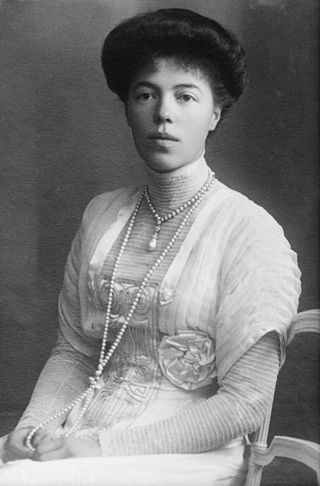
Grand Duchess Olga Alexandrovna of Russia was the youngest child of Emperor Alexander III of Russia and younger sister of Emperor Nicholas II.
Todd Brooker, Canadian skier and sportscaster births

Todd Brooker is a former alpine ski racer member Crazy Canucks and a ski commentator on television.
Dally Messenger, Australian rugby player, cricketer, and sailor (b. 1883) deaths

Herbert Henry Messenger, nicknamed "Dally" and sometimes "The Master" was one of Australasia's first professional rugby footballers, recognised as one of the greatest-ever players in either code. He played for New South Wales in the first match run by the newly created New South Wales Rugby Football League, which had just split away from the established New South Wales Rugby Football Union.
Roy Aitken, Scottish footballer and manager births
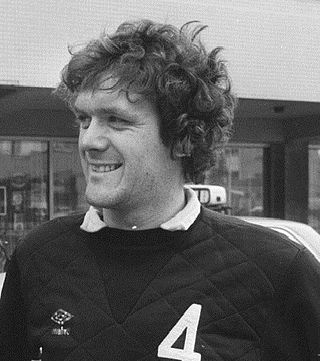
Robert Sime "Roy" Aitken is a Scottish former football player and manager. He made over 480 league appearances for Celtic, and later played for Newcastle United, St Mirren and Aberdeen. Aitken also made 57 international appearances for Scotland. His playing position was either in midfield or defence.
Margaret Curran, Scottish academic and politician births

Margaret Patricia Curran is a Scottish Labour Party politician. She served in the British House of Commons as the Member of Parliament (MP) for Glasgow East from 2010 to 2015 and was Shadow Secretary of State for Scotland from 2011 until 2015. She was previously the Member of the Scottish Parliament (MSP) for Glasgow Baillieston from 1999 to 2011, and held a number of posts within the Scottish Executive, including Minister for Parliamentary Business, Minister for Social Justice and Minister for Communities.
Nick Knight, British photographer births

Nicholas David Gordon Knight OBE is a British fashion photographer and founder and director of SHOWstudio.com. He is an honorary professor at University of the Arts London and was awarded an honorary Ph.D. by the same university. He has produced books of his work including retrospectives Nicknight (1994) and Nick Knight (2009). In 2016, Knight's 1992 campaign photograph for fashion brand Jil Sander was sold by Phillips auction house at the record-breaking price of HKD 2,360,000.
Robert Cecil, 1st Viscount Cecil of Chelwood, English lawyer and politician, Chancellor of the Duchy of Lancaster, Nobel Prize laureate (b. 1864) deaths

Edgar Algernon Robert Gascoyne-Cecil, 1st Viscount Cecil of Chelwood,, known as Lord Robert Cecil from 1868 to 1923, was a British lawyer, politician and diplomat. He was one of the architects of the League of Nations and a defender of it, whose service to the organisation saw him awarded the Nobel Peace Prize in 1937.

The chancellor of the Duchy of Lancaster is a ministerial office in the Government of the United Kingdom. The position is currently sixth in the ministerial ranking and is the second highest ranking minister in the Cabinet Office, immediately after the Prime Minister, and senior to the Minister for the Cabinet Office. The role includes as part of its duties the administration of the estates and rents of the Duchy of Lancaster.

The Nobel Peace Prize is one of the five Nobel Prizes established by the will of Swedish industrialist, inventor and armaments manufacturer Alfred Nobel, along with the prizes in Chemistry, Physics, Physiology or Medicine and Literature. Since March 1901, it has been awarded annually to those who have "done the most or the best work for fraternity between nations, for the abolition or reduction of standing armies and for the holding and promotion of peace congresses".
Denise Crosby, American actress and producer births

Denise Michelle Crosby is an American actress and model known for portraying Security Chief Tasha Yar mainly in season one of Star Trek: The Next Generation, and Yar's daughter, the half-Romulan Commander Sela, in subsequent seasons. She is also known for her numerous film and television roles, and for starring in and producing the film Trekkies.
Edward Stourton, English journalist and author births

Edward John Ivo Stourton(born November 1957) is a BBC broadcaster and presenter of the BBC Radio 4 programme Sunday, and a frequent contributor to the Today programme, where for ten years he was one of the main presenters. He is the author of six books, most recently Auntie's War: The BBC During the Second World War (2017).
Diego Rivera, Mexican painter and sculptor (b. 1886) deaths

Diego María de la Concepción Juan Nepomuceno Estanislao de la Rivera y Barrientos Acosta y Rodríguez, known as Diego Rivera, was a prominent Mexican painter. His large frescoes helped establish the mural movement in Mexican and international art.
Ruben Santiago-Hudson, American actor, playwright, and director births

Ruben Santiago-Hudson is an American actor, playwright, and director who has won national awards for his work in all three categories. He is best known for his role of Captain Roy Montgomery from 2009 to 2011 on ABC's Castle. In November 2011 he appeared on Broadway in Lydia R. Diamond's play Stick Fly. In 2013 he starred in the TV series Low Winter Sun, a police drama set in Detroit.
Guido Cantelli, Italian conductor (b. 1920) deaths
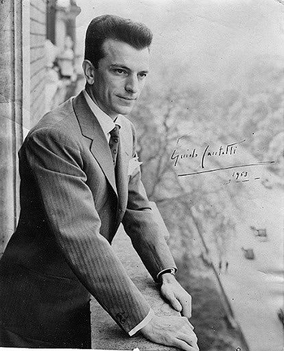
Guido Cantelli was an Italian orchestral conductor. Toscanini elected him his "spiritual heir" since the beginnings of his career. He was named Musical Director of La Scala, Milan in November 1956, but his promising career was cut short only one week later by his death at the age of 36 in an airplane crash in Paris, France.
Ian Botham, English cricketer, footballer, and sportscaster births
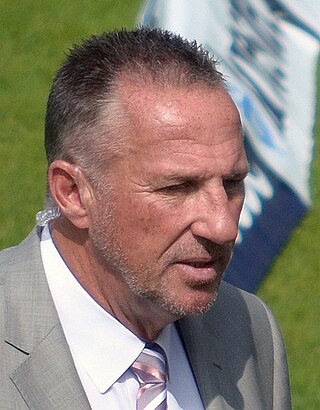
Ian Terence Botham, Baron Botham, is an English cricket commentator, member of the House of Lords, a former cricketer who has been chairman of Durham County Cricket Club since 2017 and charity fundraiser.
Scott Hoch, American golfer births
Scott Mabon Hoch is an American professional golfer, who represented his country in the Ryder Cup in 1997 and 2002.
Lena Adelsohn Liljeroth, Swedish politician, Swedish Minister for Culture births

Lena Elisabeth Adelsohn Liljeroth is a Swedish politician who served as Minister for Culture and Sports from 2006 to 2014. A member of the Moderate Party, she was an MP of the Swedish Riksdag from 2002 to 2014.
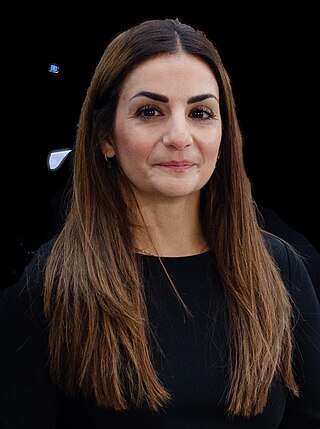
The Minister for Culture is a member and minister of the Swedish Government and appointed by the Prime Minister. The minister heads the Ministry for Culture and is responsible for cultural issues and construction.
Najib Mikati, Lebanese businessman and politician, 31st Prime Minister of Lebanon births

Najib Azmi Mikati is a Lebanese politician and businessman, and three-time Prime Minister of Lebanon whose current term began in September 2021. He also serves as the acting President of Lebanon as of October 2022 in his capacity as prime minister. He previously served as Prime Minister from June 2011 to February 2014 and from April to July 2005. He also served as Minister of Public Works and Transport from December 1998 to 2003.

The Prime Minister of Lebanon, officially the President of the Council of Ministers, is the head of government and the head of the Council of Ministers of Lebanon. The Prime Minister is appointed by the president of Lebanon, with the consent of the plurality of the members of the Parliament of Lebanon. By convention, the office holder is always a Sunni Muslim.
Takashi Yuasa, Japanese lawyer and author births
Takashi Yuasa is a Japanese lawyer and television personality. He belongs to the Horipro talent agency.
Emir Kusturica, Serbian actor, director, and screenwriter births
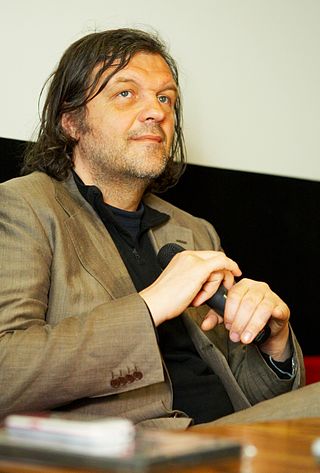
Emir Kusturica is a Serbian film director, screenwriter, actor, producer and musician. He also has French citizenship. Kusturica is one of the most-distinguished European filmmakers since the mid-1980s, best known for surreal and naturalistic movies that express deep sympathies for people from the margins. He has also been recognized for his projects in town-building. He has competed at the Cannes Film Festival on five occasions and won the Palme d'Or twice, as well as the Best Director prize for Time of the Gypsies.
Margaret Wetherell, English psychologist and academic births
Margaret Wetherell, is a prominent academic in the area of discourse analysis.
Clem Burke, American drummer births

Clement Burke is an American musician who is best known as the drummer for the band Blondie from 1975, shortly after the band formed, throughout the band's entire career. He also played drums for the Ramones for a brief time in 1987, and performed under the name Elvis Ramone.
Mamie Dillard, African American educator, clubwoman and suffragist (b. 1874) deaths

Mary "Mamie" J. Dillard was an American educator, clubwoman and suffragist.
Parveen Shakir, Pakistani Urdu poet (d. 1994) births
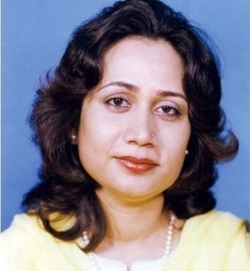
Parveen Shakir was a Pakistani poet, teacher and a civil servant of the government of Pakistan. She is best known for her poems, which brought a distinctive feminine voice to Urdu literature, and for her consistent use of the rare grammatical feminine gender for the word "lover".
Rachel Chagall, American actress births
Rachel Chagall is an American actress, best known for roles as Gaby in the film Gaby: A True Story (1987), for which she was nominated for Golden Globe Award for Best Actress – Motion Picture Drama and as Val Toriello on The Nanny (1993–1999).
Norbert Haug, German journalist and businessman births

Norbert Friedrich Haug is a German journalist and the former vice president of Mercedes-Benz motorsport activity, including Formula One, Formula 3 and DTM. Under his direction, Mercedes-Benz enjoyed considerable success in all categories, winning multiple races and championships.
Thierry Lhermitte, French actor, producer, and screenwriter births

Thierry Lhermitte is a French actor, director, writer and producer, best known for his comedic roles. He was a founder of the comedy troupe Le Splendid in the 1970s, along with, among others, Christian Clavier, Gérard Jugnot, and Michel Blanc. The group adapted a number of its stage hits for the cinema, and scored major successes with films such as Les Bronzés (1978), Les Bronzés font du ski (1979), Le Père Noël est une ordure (1982) and Un indien dans la ville (1994).
Jim Sheridan, Scottish politician births

James Sheridan was a British Labour Party politician who was Member of Parliament (MP) for Paisley and Renfrewshire North, formerly Renfrewshire West, from 2001 to 2015.
Ken Wilson, Australian rugby league player births
Ken Wilson nicknamed "Squeaker" is an Australian former rugby league footballer who played in the 1970s and 1980s.
Mimis Androulakis, Greek author and politician births

Dimitris (Mimis) Androulakis is a Greek author and politician.
Chet Edwards, American businessman and politician births

Thomas Chester Edwards is an American politician who was a United States Representative from Texas, representing a district based in Waco, from 1991 to 2011. Previously, he served in the Texas Senate from 1983 to 1990. He is a member of the Democratic Party. Edwards was on Barack Obama's vice presidential shortlist in 2008.
Margaret Mountford, Northern Irish-British lawyer and businesswoman births
Margaret Rose Mountford is a Northern Irish lawyer, businesswoman and television personality best known for her role in The Apprentice.
Graham Price, Egyptian-Welsh rugby player births
Graham Price MBE is a former Welsh rugby union player, who was a member of the famous Pontypool RFC front row known as the "Viet Gwent". He won 41 caps for Wales, and a record 12 for the British and Irish Lions as a prop forward.
Bob Burns, American drummer and songwriter (d. 2015) births
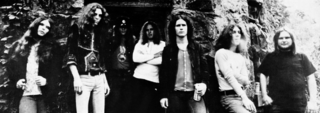
Robert Lewis Burns Jr. was an American drummer in the original line-up of the Southern rock band Lynyrd Skynyrd.
Stanley Livingston, American actor, director, producer, and screenwriter births

Stanley Bernard Livingston is an American actor, director, producer, editor and writer.
Shane Bourne, Australian comedian, actor, and television host births

Shane Bourne is an Australian stand-up comedian, actor, musician, and television host.
Ewen Cameron, Baron Cameron of Dillington, English politician births
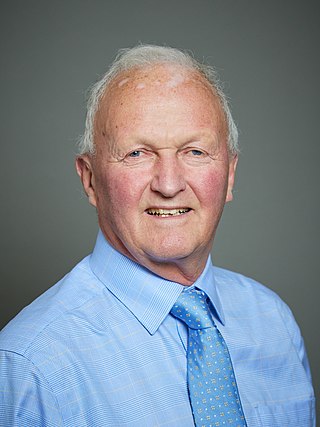
Ewen James Hanning Cameron, Baron Cameron of Dillington DL, is a landowner and life peer who sits as a crossbench member of the House of Lords.
Sally Davies, English hematologist and academic births

Dame Sally Claire Davies is a British physician and academic administrator who was the Chief Medical Officer from 2010 to 2019 and Chief Scientific Adviser at the Department of Health from 2004 to 2016 and worked as a clinician specialising in the treatment of diseases of the blood and bone marrow. She was appointed Master of Trinity College, Cambridge, on 8 February 2019, effective from 8 October 2019. She is one of the founders of the National Institute for Health and Care Research (NIHR).
Spider Robinson, American-Canadian author and critic births
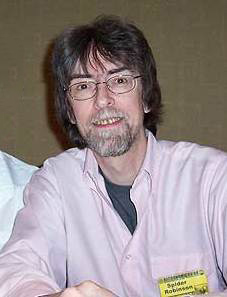
Spider Robinson is an American-born Canadian science fiction author. He has won a number of awards for his hard science fiction and humorous stories, including the Hugo Award 1977 and 1983, and another Hugo with his co-author and wife Jeanne Robinson in 1978.
Rudy Tomjanovich, American basketball player and coach births

Rudolph Tomjanovich Jr. is an American former professional basketball player and coach who is a consultant for the Minnesota Timberwolves of the National Basketball Association (NBA). His professional playing career, which lasted between 1970 and 1981, was entirely spent with the San Diego / Houston Rockets. Tomjanovich was a 5-time NBA All-Star forward; four consecutive times between 1974 and 1977, and again in 1979. He also made the playoffs five times: in 1975, 1977, and consecutively between 1979 and 1981.
Steve Yeager, American baseball player and coach births
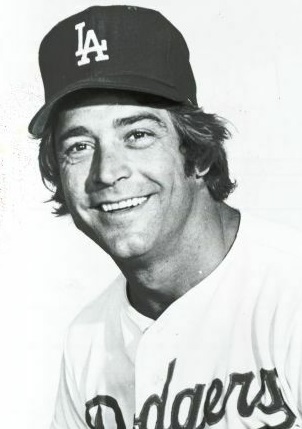
Stephen Wayne Yeager is an American former professional baseball catcher. Yeager spent 14 of the 15 seasons of his Major League Baseball career, from 1972 through 1985, with the Los Angeles Dodgers. His last year, 1986, he played for the Seattle Mariners. From 2012 to 2018, Yeager was the catching coach for the Dodgers. He was co-MVP of the 1981 World Series.
Anna Jarvis, American founder of Mother's Day (b. 1864) deaths

Anna Maria Jarvis was the founder of Mother's Day in the United States. Her mother had frequently expressed a desire for the establishment of such a holiday, and after her mother's death, Jarvis led the movement for the commemoration. However, as the years passed, Jarvis grew disenchanted with the growing commercialization of the observation and even attempted to have Mother's Day rescinded. She died in a sanitarium, her medical bills paid by people in the floral and greeting card industries.
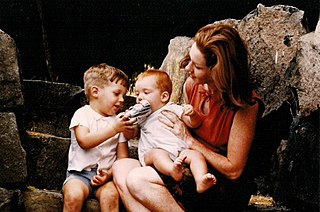
Mother's Day is a celebration honoring the mother of the family or individual, as well as motherhood, maternal bonds, and the influence of mothers in society. It is celebrated on different days in many parts of the world, most commonly in the months of March or May. It complements similar celebrations, largely pushed by commercial interests, honoring family members, such as Father's Day, Siblings Day, and Grandparents' Day.
Dwight Schultz, American actor births

William Dwight Schultz is an American television, film and voice actor.
Dave Sinclair, English keyboard player births

David Sinclair is a British keyboardist associated with the psychedelia/progressive rock Canterbury Scene since the late 1960s. He became famous with the band Caravan and was responsible as a songwriter for creating some of their best-known tracks: "For Richard", "Nine Feet Underground", "The Dabsong Conshirtoe", "Proper Job/Back to Front".
Ted Bundy, American serial killer (d. 1989) births
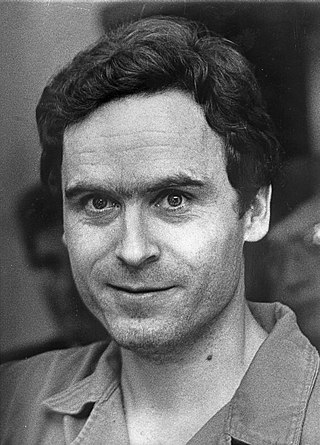
Theodore Robert Bundy was an American serial killer who kidnapped, raped and murdered numerous young women and girls during the 1970s and possibly earlier. After more than a decade of denials, he confessed to 30 murders committed in seven states between 1974 and 1978. His true victim total is unknown and likely significantly higher.
Tony Clarkin, English guitarist and songwriter births

Tony Clarkin is an English musician and record producer, best known as the guitarist of the rock band Magnum. He has been the sole songwriter throughout Magnum's history, writing all of the material on their 22 studio albums as well as on two studio albums by Magnum spin-off group Hard Rain.
Penny Jordan, English author (d. 2011) births
Penelope Halsall was a best-selling and prolific English writer of over 200 romance novels. She started writing regency romances as Caroline Courtney, and wrote contemporary romances as Penny Jordan and historical romances as Annie Groves. She also wrote novels as Melinda Wright and Lydia Hitchcock. Her books have sold over 70 million copies worldwide and been translated into many languages.
Nuruddin Farah, Somali novelist births

Nuruddin Farah is a Somali novelist. His first novel, From a Crooked Rib, was published in 1970 and has been described as "one of the cornerstones of modern East African literature today". He has also written plays both for stage and radio, as well as short stories and essays. Since leaving Somalia in the 1970s he has lived and taught in numerous countries, including the United States, Britain, Germany, Italy, Sweden, Sudan, India, Uganda, Nigeria and South Africa.
Lee Michaels, American singer-songwriter and musician births
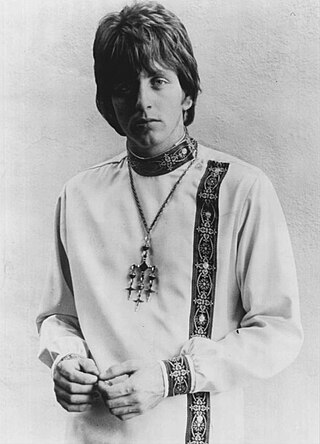
Lee Eugene Michaels is an American rock musician who sings and accompanies himself on organ, piano, or guitar. He is best known for his powerful soulful voice and his energetic virtuosity on the Hammond organ, peaking in 1971 with his Top 10 pop hit single, "Do You Know What I Mean". In 1988 he founded the Marina Del Rey-based restaurant chain Killer Shrimp which he and his family continue to operate to this day.
Bev Bevan, English drummer births

Beverley Bevan is an English rock musician, who was the drummer and one of the original members of The Move and Electric Light Orchestra (ELO). After the end of ELO in 1986, he founded ELO Part II.
Candy Darling, American model and actress (d. 1974) births

Candy Darling was an American actress, best known as a Warhol superstar and transgender icon. She starred in Andy Warhol's films Flesh (1968) and Women in Revolt (1971), and was a muse of The Velvet Underground.
Ibrahim Gambari, Nigerian academic and diplomat, 9th Nigerian Minister of Foreign Affairs births

Ibrahim Agboola Gambari, ListenCFR, is a Nigerian academic and diplomat who is currently serving as Chief of Staff to the President of Nigeria.

The Nigerian foreign ministry is a statutory body created to re-inforce foreign decision making and implementation processes in Nigeria and handle the external promotion of Nigeria's domestic vision and ideals; it is headed by a federal executive cabinet minister. As of late its mission has geared towards increasing awareness about Nigeria's economic potential. It is part of the government's executive branch.
Dan Glickman, American businessman and politician, 26th United States Secretary of Agriculture births

Daniel Robert Glickman is an American politician, lawyer, lobbyist, and nonprofit leader. He served as the United States Secretary of Agriculture from 1995 until 2001, prior to which he represented Kansas's 4th congressional district as a Democrat in Congress for 18 years.

The United States secretary of agriculture is the head of the United States Department of Agriculture. The position carries similar responsibilities to those of agriculture ministers in other governments.
Dave Bing, American basketball player and politician, 70th Mayor of Detroit births

David Bing is an American former professional basketball player, businessman, and politician who served as the 74th mayor of Detroit, Michigan from 2009 to 2013. He is a member of the Democratic Party.

This is a list of mayors of Detroit, Michigan. See History of Detroit, Michigan, for more information about the history of the incorporation of the city.
Richard Tee, American singer-songwriter and keyboard player (d. 1993) births

Richard Edward Tee was an American pianist, studio musician, singer and arranger, who had several hundred studio credits and played on such notable hits as "In Your Eyes", "Slip Slidin' Away", "Just the Two of Us", "I'll Be Sweeter Tomorrow ", "Crackerbox Palace", "Tell Her About It", and many others.
Robin Williamson, Scottish singer-songwriter and guitarist births
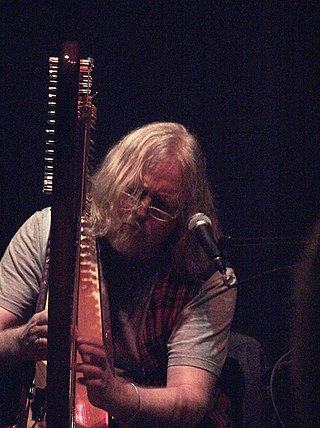
Robin Duncan Harry Williamson is a Scottish multi-instrumentalist, singer, songwriter, and storyteller who was a founding member of The Incredible String Band.
Margaret E. M. Tolbert, American chemist and academic births
Margaret Ellen Mayo Tolbert is a biochemist who worked as a professor and director of the Carver Research Foundation at Tuskegee University, and was an administrative chemist at British Petroleum. From 1996 to 2002 she served as director of the New Brunswick Laboratory, becoming the first African American and the first woman in charge of a Department of Energy lab.
Doris Miller, American soldier and chef, Navy Cross recipient (b. 1919) deaths

Doris Miller was a United States Navy cook third class who was killed in action during World War II. He was the first Black American to be awarded the Navy Cross, the highest decoration for valor presented by the US Navy, and the second highest in the United States after the Medal of Honor.

The Navy Cross is the United States Navy and United States Marine Corps' second-highest military decoration awarded for sailors and marines who distinguish themselves for extraordinary heroism in combat with an armed enemy force. The medal is equivalent to the Army's Distinguished Service Cross, the Air Force and Space Force's Air Force Cross, and the Coast Guard Cross.
Billy Connolly, Scottish comedian and actor births

Sir William Connolly is a Scottish actor, retired comedian, artist, writer, musician, and presenter. He is sometimes known, especially in his homeland, by the Scots nickname the Big Yin. Known for his idiosyncratic and often improvised observational comedy, frequently including strong language, Connolly has topped many UK polls as the greatest stand-up comedian of all time. In 2022 he received the BAFTA Fellowship for lifetime achievement from the British Academy of Film and Television Arts.
Marlin Fitzwater, American soldier and journalist, 17th White House Press Secretary births

Max Marlin Fitzwater is an American writer-journalist who served as White House Press Secretary for six years under U.S. Presidents Ronald Reagan and George H. W. Bush, making him one of the longest-serving press secretaries in history. He is the only U.S. Press Secretary to be appointed by two different U.S. Presidents.

The White House press secretary is a senior White House official whose primary responsibility is to act as spokesperson for the executive branch of the United States federal government, especially with regard to the president, senior aides and executives, as well as government policies.
Jean Ping, Gabonese politician and diplomat births

Jean Ping is a Gabonese diplomat and politician who served as Chair of the African Union Commission from 2008 to 2012. Born to a Chinese father and Gabonese mother, he is the first individual of Chinese descent to lead the executive branch of the African Union.
Andrew Stunell, English minister and politician births
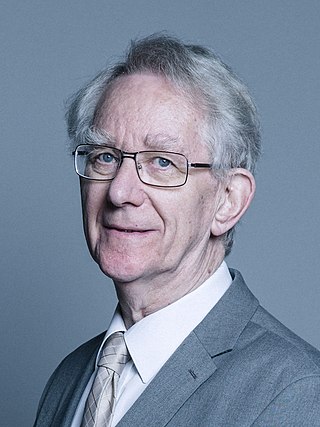
Robert Andrew Stunell, Baron Stunell, is a Liberal Democrat politician in the United Kingdom.
Pete Best, Indian-English drummer and songwriter births
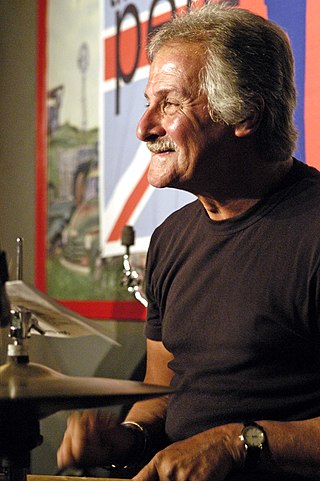
Randolph Peter Best is an English musician known as the drummer of the English rock band the Beatles who was dismissed immediately prior to the band achieving worldwide fame. Fired from the group in 1962 after playing drums as a Beatle for the previous two years in Germany and England, he started his own band, the Pete Best Four. He later joined and started many bands over the years. He is one of several people who have been referred to as a fifth Beatle.
Donald "Duck" Dunn, American bass player, songwriter, and producer (d. 2012) births

Donald "Duck" Dunn was an American bass guitarist, session musician, record producer, and songwriter. Dunn was notable for his 1960s recordings with Booker T. & the M.G.'s and as a session bassist for Stax Records. At Stax, Dunn played on thousands of records, including hits by Otis Redding, Sam & Dave, Rufus Thomas, Carla Thomas, William Bell, Eddie Floyd, Johnnie Taylor, Albert King, Bill Withers, Elvis Presley and many others. In 1992, he was inducted in the Rock and Roll Hall of Fame as a member of Booker T. & the M.G.'s. He is ranked number 40 on Bass Player magazine's list of "The 100 Greatest Bass Players of All Time".
Wayne Jackson, American trumpeter (d. 2016) births

Wayne Lamar Jackson was an American soul and R&B musician, playing the trumpet in the Mar-Keys, in the house band at Stax Records and later as one of The Memphis Horns, described as "arguably the greatest soul horn section ever".
Marshall Berman, American philosopher and Marxist humanist writer (d. 2013) births

Marshall Howard Berman was an American philosopher and Marxist humanist writer. He was a Distinguished Professor of Political Science at The City College of New York and at the Graduate Center of the City University of New York, teaching political philosophy and urbanism.
Paul Tagliabue, American lawyer and businessman, 5th Commissioner of the National Football League births
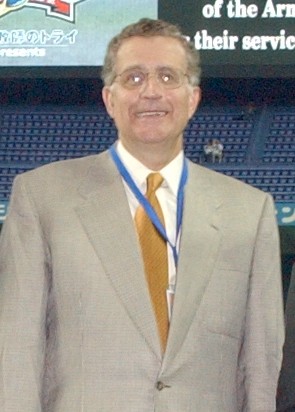
Paul John Tagliabue is an American lawyer who was the commissioner of the National Football League (NFL). He took the position in 1989 and served until September 1, 2006. He had previously served as a lawyer for the NFL. Tagliabue also served as Chairman of Board of Directors of Georgetown University from 2009 to 2015.

The National Football League (NFL) is a professional American football league that consists of 32 teams, divided equally between the American Football Conference (AFC) and the National Football Conference (NFC). The NFL is one of the major professional sports leagues in the United States and Canada and the highest professional level of American football in the world. Each NFL season begins with a three-week preseason in August, followed by the 18-week regular season which runs from early September to early January, with each team playing 17 games and having one bye week. Following the conclusion of the regular season, seven teams from each conference advance to the playoffs, a single-elimination tournament that culminates in the Super Bowl, which is contested in February and is played between the AFC and NFC conference champions. The league is headquartered in New York City.
Eric Wilson, Canadian author and educator births
Eric Hamilton Wilson is a Canadian author of young adult fiction. His detective novels follow the adventures of Tom and Liz Austen, young sleuths in Canada. Wilson has taught elementary and secondary school in White Rock, British Columbia, and has a B.A. from the University of British Columbia.
Willy Claes, Belgian conductor and politician, 8th Secretary General of NATO births

Willem Werner Hubert "Willy" Claes is a Belgian politician who served as the eighth Secretary General of NATO, from 1994 to 1995. Claes was forced to resign from his NATO position after he was found guilty of corruption, which was uncovered during the investigation into André Cools' death. Claes was a member of the Flemish Socialist Party.

The secretary general of NATO is the chief civil servant of the North Atlantic Treaty Organization (NATO). The officeholder is an international diplomat responsible for coordinating the workings of the alliance, leading NATO's international staff, chairing the meetings of the North Atlantic Council and most major committees of the alliance, with the notable exception of the NATO Military Committee, as well as acting as NATO's spokesperson. The secretary general does not have a military command role; political, military and strategic decisions ultimately rest with the member states. Together with the Chair of the NATO Military Committee and the supreme allied commander, the officeholder is one of the foremost officials of NATO.
Oscar Robertson, American basketball player and sportscaster births

Oscar Palmer Robertson, nicknamed "the Big O", is an American former professional basketball player who played for the Cincinnati Royals and Milwaukee Bucks in the National Basketball Association (NBA). Robertson played point guard and was a 12-time All-Star, 11-time member of the All-NBA Team, and one-time winner of the MVP award in 14 seasons. In 1962, he became the first player in NBA history to average a triple-double for a season. In the 1970–71 NBA season, he was a key player on the team that brought the Bucks their first NBA title. His playing career, especially during high school and college, was plagued by racism.
Charles Starkweather, American spree killer (d. 1959) births
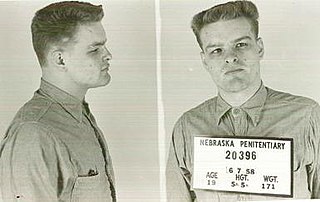
Charles Raymond Starkweather was an American spree killer who murdered eleven people in Nebraska and Wyoming between December 1957 and January 1958, when he was 19 years old. He killed ten of his victims between January 21 and January 29, 1958, the date of his arrest. During his spree in 1958, Starkweather was accompanied by his 14-year-old girlfriend, Caril Ann Fugate.
Khalifa bin Salman Al Khalifa, Bahraini politician, Prime Minister of Bahrain (d. 2020) births

Khalifa bin Salman Al Khalifa was a Bahraini royal and politician who served as the Prime Minister of Bahrain from 10 January 1970 until his death in 2020. He took office over a year before Bahrain's independence on 15 August 1971. He was the longest-serving prime minister in the world. Under the 2002 Constitution he lost some of his powers, with the King now having the authority to appoint and dismiss ministers.

In Bahrain, the Prime Minister is the head of government of the country. According to the Constitution of Bahrain, the Prime Minister is appointed directly by the King, and needs not to be an elected member of the Council of Representatives.
Ron Dellums, American soldier and politician, 48th Mayor of Oakland (d. 2018) births
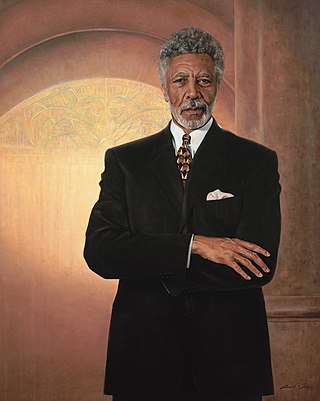
Ronald Vernie Dellums was an American politician who served as Mayor of Oakland from 2007 to 2011. He had previously served thirteen terms as a Member of the U.S. House of Representatives from California's 9th congressional district, in office from 1971 to 1998, after which he worked as a lobbyist in Washington, D.C.

The city of Oakland, California, was founded in 1852, and was incorporated in 1854.
Mordicai Gerstein, American author, illustrator, and director (d. 2019) births
Mordicai Gerstein was an American artist, writer, and film director, best known for illustrating and writing children's books. He illustrated the comic mystery fiction series Something Queer is Going On.
Alfred Schnittke, German-Russian journalist and composer (d. 1998) births

Alfred Garrievich Schnittke was a Russian composer of Jewish-German descent. Among the most performed and recorded composers of late 20th-century classical music, he is described by musicologist Ivan Moody as a "composer who was concerned in his music to depict the moral and spiritual struggles of contemporary man in [...] depth and detail."
John Sheridan, English rugby player and coach (d. 2012) births
John Sheridan was an English professional rugby league footballer who played in the 1950s and 1960s, and coached in the 1970s and 1980s. He played at club level for Lock Lane ARLFC, and Castleford (captain), as a centre, or loose forward, i.e. number 3 or 4, or 13., during the era of contested scrums, and coached at club level for Castleford, Leeds and Doncaster.
Claudio Naranjo, Chilean psychiatrist (d. 2019) births
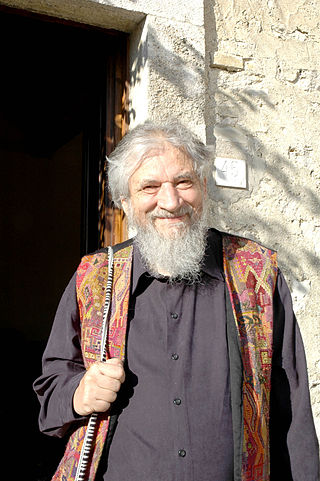
Claudio Benjamín Naranjo Cohen was a Chilean-born psychiatrist of Arabic/Moorish, Spanish and Jewish descent who is considered a pioneer in integrating psychotherapy and the spiritual traditions. He was one of the three successors named by Fritz Perls, a principal developer of Enneagram of Personality theories and a founder of the Seekers After Truth Institute. He was also an elder statesman of the US and global human potential movement and the spiritual renaissance of the late 20th century. He was the author of various books.
Fred Titmus, English cricketer and coach (d. 2011) births

Frederick John Titmus was an English cricketer, whose first-class career, mostly for Middlesex with a shortish stint for Surrey, spanned five decades. He was the fourth man after W.G. Grace, Wilfred Rhodes and George Hirst to take 2,500 wickets and make 20,000 runs in first-class cricket. Although he was best known for his off-spin, he was an accomplished lower-order batsman who deserved to be called an all-rounder, even opening the batting for England on six occasions. Outside cricket, Titmus was also an able footballer; at one stage he was contracted to Watford as a professional, having earlier played for Leytonstone, and then for Chelsea as a junior.
William Arnon Henry American academic and agriculturist (b. 1850) deaths
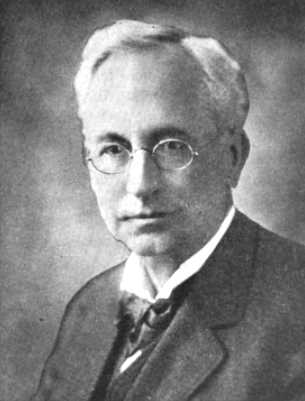
William Arnon Henry was an American academic and agriculturist from Ohio. Henry studied at the National Normal University and Ohio Wesleyan University before becoming a principal of two high schools. After continuing his education at Cornell University from 1876 to 1880, Henry was appointed a professor at the University of Wisconsin. There, he led the growth of the College of Agriculture, becoming its first dean in 1891. He remained at the university until 1907, when he was named a professor emeritus.
Tommy Allsup, American guitarist (d. 2017) births

Thomas Douglas Allsup was an American rockabilly and swing musician.
Arthur Chaskalson, South African lawyer and judge, 18th Chief Justice of South Africa (d. 2012) births

Arthur Chaskalson SCOB, was President of the Constitutional Court of South Africa from 1994 to 2001 and Chief Justice of South Africa from 2001 to 2005. Chaskalson was a member of the defence team in the Rivonia Trial of 1963.

The Chief Justice of South Africa is the most senior judge of the Constitutional Court and head of the judiciary of South Africa, who exercises final authority over the functioning and management of all the courts.
Ken Barrington, English cricketer (d. 1981) births
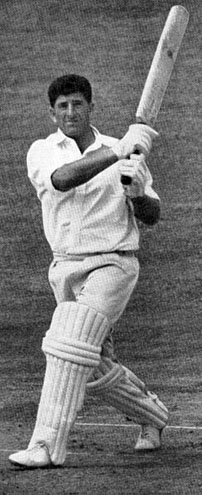
Kenneth Frank Barrington, was an English international cricketer who played for the England cricket team and Surrey County Cricket Club in the 1950s and 1960s. He was a right-handed batsman and occasional leg-spin bowler, known for his jovial good humour and long, defensive innings "batting with bulldog determination and awesome concentration".
Bob Friend, American baseball player and politician (d. 2019) births
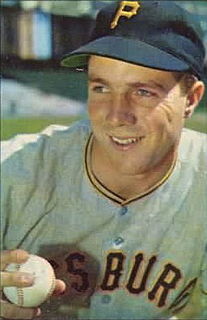
Robert Bartmess Friend was an American professional baseball player. He played in Major League Baseball as a right-handed pitcher between 1951 and 1966, most notably as a member of the Pittsburgh Pirates. A four-time All-Star, Friend was an integral member of the Pirates team that defeated the New York Yankees in the 1960 World Series. He played for the New York Yankees and New York Mets in his final season of 1966. As of 2019, he still held Pirates records for career innings pitched and strikeouts. He is the first man to lead the league in ERA while pitching for a last place team.
Franciszek Kokot, Polish nephrologist and endocrinologist (d. 2021) births
Franciszek Kokot was a Polish nephrologist and endocrinologist. Kokot was known as a pioneer of nephrology in Eastern Europe. He was a full member of the Polish Academy of Sciences, having previously served as its rector.
George Moscone, American soldier, lawyer, and politician, 37th Mayor of San Francisco (d. 1978) births

George Richard Moscone was an American attorney and Democratic politician. He was the 37th mayor of San Francisco, California from January 1976 until his assassination in November 1978. He was known as "The People's Mayor", who opened up City Hall and its commissions to reflect the diversity of San Francisco, appointing African Americans, Asian Americans, and homosexuals. Moscone served in the California State Senate from 1967 until becoming Mayor. In the Senate, he served as Majority Leader. Moscone is remembered for being an advocate of civil progressivism.

The mayor of the City and County of San Francisco is the head of the executive branch of the San Francisco city and county government. The officeholder has the duty to enforce city laws, and the power to either approve or veto bills passed by the San Francisco Board of Supervisors, the legislative branch. The mayor serves a four-year term and is limited to two successive terms. Because of San Francisco's status as a consolidated city-county, the mayor also serves as the head of government of the county; both entities have been governed together by a combined set of governing bodies since 1856.
Georges Clemenceau, French physician, publisher, and politician, 72nd Prime Minister of France (b. 1841) deaths

Georges Benjamin Clemenceau was a French statesman who served as Prime Minister of France from 1906 to 1909 and again from 1917 until 1920. A key figure of the Independent Radicals, he was a strong advocate of separation of church and state, amnesty of the Communards exiled to New Caledonia, as well as opposition to colonisation. Clemenceau, a physician turned journalist, played a central role in the politics of the Third Republic, most notably successfully leading France through the end of the First World War.

The head of the government of France has been called the prime minister of France since 1959, when Michel Debré became the first officeholder appointed under the Fifth Republic. During earlier periods of history, the head of government of France was known by different titles. As was common in European democracies of the 1815–1958 period, the head of government was called President of the Council of Ministers, generally shortened to President of the Council. This should not be confused with the elected office of president of the French Republic, who appoints the prime minister as head of state.
Ahmadou Kourouma, Ivorian-French author and playwright (d. 2003) births
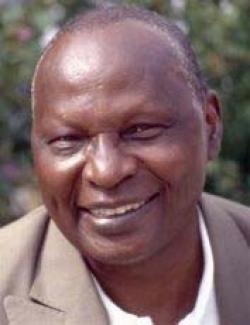
Ahmadou Kourouma was an Ivorian novelist.
Alfredo Kraus, Spanish tenor (d. 1999) births

Alfredo Kraus Trujillo was a distinguished Spanish tenor from the Canary islands, particularly known for the artistry he brought to opera's bel canto roles. He was also considered an outstanding interpreter of the title role in Massenet's opera Werther, and especially of its famous aria, "Pourquoi me réveiller?"
Kevin Skinner, New Zealand rugby player (d. 2014) births

Kevin Lawrence Skinner was a rugby union player from New Zealand who won 20 full caps for the All Blacks, two of them as captain. He was also a heavyweight boxer, winning the New Zealand championship in 1947.
Tsung-Dao Lee, Chinese-American physicist and academic, Nobel Prize laureate births
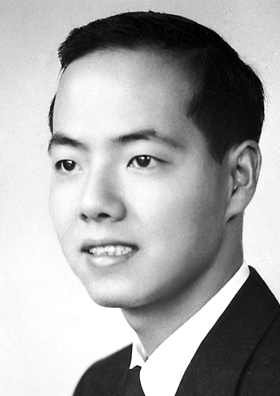
Tsung-Dao Lee is a Chinese-American physicist, known for his work on parity violation, the Lee–Yang theorem, particle physics, relativistic heavy ion (RHIC) physics, nontopological solitons and soliton stars. He was a University Professor Emeritus at Columbia University, where he taught from 1953 until his retirement in 2012.

The Nobel Prize in Physics is a yearly award given by the Royal Swedish Academy of Sciences for those who have made the most outstanding contributions for humankind in the field of physics. It is one of the five Nobel Prizes established by the will of Alfred Nobel in 1895 and awarded since 1901, the others being the Nobel Prize in Chemistry, Nobel Prize in Literature, Nobel Peace Prize, and Nobel Prize in Physiology or Medicine. Physics is traditionally the first award presented in the Nobel Prize ceremony.
William F. Buckley, Jr., American publisher and author, founded the National Review (d. 2008) births

William Frank Buckley Jr. was an American public intellectual, conservative author and political commentator. In 1955, he founded National Review, the magazine that stimulated the conservative movement in the mid-20th century United States. Buckley hosted 1,429 episodes of the public affairs television show Firing Line (1966–1999), the longest-running public affairs show with a single host in American television history, where he became known for his distinctive Mid-Atlantic accent and wide vocabulary.

National Review is an American conservative editorial magazine, focusing on news and commentary pieces on political, social, and cultural affairs. The magazine was founded by the author William F. Buckley Jr. in 1955. Its editor-in-chief is Rich Lowry, while the editor is Ramesh Ponnuru.
Simon van der Meer, Dutch-Swiss physicist and engineer, Nobel Prize laureate (d. 2011) births

Simon van der Meer was a Dutch particle accelerator physicist who shared the Nobel Prize in Physics in 1984 with Carlo Rubbia for contributions to the CERN project which led to the discovery of the W and Z particles, the two fundamental communicators of the weak interaction.

The Nobel Prize in Physics is a yearly award given by the Royal Swedish Academy of Sciences for those who have made the most outstanding contributions for humankind in the field of physics. It is one of the five Nobel Prizes established by the will of Alfred Nobel in 1895 and awarded since 1901, the others being the Nobel Prize in Chemistry, Nobel Prize in Literature, Nobel Peace Prize, and Nobel Prize in Physiology or Medicine. Physics is traditionally the first award presented in the Nobel Prize ceremony.
Eileen Barton, American singer (d. 2006) births

Eileen Barton was an American singer best known for her 1950 hit song, "If I Knew You Were Comin' I'd've Baked a Cake."
Lorne Munroe, Canadian-American cellist and educator (d. 2020) births
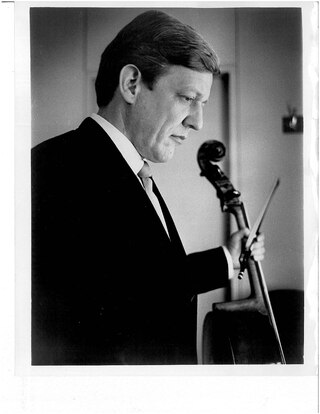
Lorne Munroe was an American cellist. He was principal cellist of the Philadelphia Orchestra from 1951 to 1964 and principal cellist of the New York Philharmonic from 1964 to 1996. He was a featured soloist more than 150 times during the 32 seasons he played for the New York Philharmonic. His last performance with the orchestra as a member of the ensemble was on February 27, 1996; although he later returned as a guest artist.
Claus Moser, Baron Moser, German-English statistician and academic (d. 2015) births

Claus Adolf Moser, Baron Moser, was a British statistician who made major contributions in both academia and the Civil Service. He prided himself rather on being a non-mathematical statistician, and said that the thing that frightened him most in his life was when Maurice Kendall asked him to teach a course on analysis of variance at the LSE.
Erskine Childers, Irish soldier, journalist, and author (b. 1870) deaths

Robert Erskine Childers DSC, usually known as Erskine Childers, was an English-born Irish writer, politician, and militant. His works included the influential novel The Riddle of the Sands. Starting as an ardent Unionist, he later became a supporter of Irish Republicanism and smuggled guns into Ireland in his sailing yacht Asgard. He was executed by the authorities of the nascent Irish Free State during the Irish Civil War. He was the son of British Orientalist scholar Robert Caesar Childers; the cousin of Hugh Childers and Robert Barton; and the father of the fourth President of Ireland, Erskine Hamilton Childers.
John Lindsay, American lawyer and politician, 103rd Mayor of New York City (d. 2000) births

John Vliet Lindsay was an American politician and lawyer. During his political career, Lindsay was a U.S. congressman, mayor of New York City, and candidate for U.S. president. He was also a regular guest host of Good Morning America. Lindsay served as a member of the United States House of Representatives from January 1959 to December 1965 and as mayor of New York City from January 1966 to December 1973.

The mayor of New York City, officially Mayor of the City of New York, is head of the executive branch of the government of New York City and the chief executive of New York City. The mayor's office administers all city services, public property, police and fire protection, most public agencies, and enforces all city and state laws within New York City.
Lado Aleksi-Meskhishvili, Georgian actor and director (b. 1857) deaths
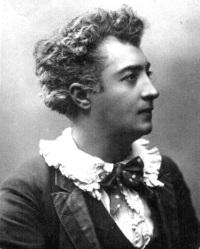
Vladimir (Lado) Alexi-Meskhishvili, Lado Meskhishivili, or Alekseev-Meskhiev, was a Georgian theater actor and director. He is buried at the Didube Pantheon in Tbilisi. His son was Shalva Aleksi-Meskhishvili, a Georgian jurist and politician.
Alexandru Macedonski, Romanian author and poet (b. 1854) deaths

Alexandru Macedonski was a Romanian poet, novelist, dramatist and literary critic, known especially for having promoted French Symbolism in his native country, and for leading the Romanian Symbolist movement during its early decades. A forerunner of local modernist literature, he is the first local author to have used free verse, and claimed by some to have been the first in modern European literature. Within the framework of Romanian literature, Macedonski is seen by critics as second only to national poet Mihai Eminescu; as leader of a cosmopolitan and aestheticist trend formed around his Literatorul journal, he was diametrically opposed to the inward-looking traditionalism of Eminescu and his school.
David Kossoff, English actor and screenwriter (d. 2005) births

David Kossoff was a British actor. In 1954 he won the BAFTA Award for Most Promising Newcomer to Leading Film Roles for his appearance as Geza Szobek in The Young Lovers. He played Alf Larkin in TV sitcom The Larkins and Professor Kokintz in The Mouse that Roared (1959) and its sequel The Mouse on the Moon (1963).
Shabtai Rosenne, English-Israeli academic, jurist, and diplomat (d. 2010) births

Shabtai Rosenne was a Professor of International Law and an Israeli diplomat. Rosenne was awarded the 1960 Israel Prize for Jurisprudence, the 1999 Manley O. Hudson Medal for International Law and Jurisprudence, the 2004 Hague Prize for International Law and the 2007 Distinguished Onassis Scholar Award. He was the leading scholar of the World Court - the PCIJ and ICJ and had a widely recognized expertise in treaty law, state responsibility, self-defence, UNCLOS and other issues of international law.
Forrest J Ackerman, American soldier and author (d. 2008) births

Forrest James Ackerman was an American magazine editor; science fiction writer and literary agent; a founder of science fiction fandom; a leading expert on science fiction, horror, and fantasy films; a prominent advocate of the Esperanto language; and one of the world's most avid collectors of genre books and film memorabilia. He was based in Los Angeles, California.
Hiram Maxim, American-English engineer, invented the Maxim gun (b. 1840) deaths

Sir Hiram Stevens Maxim was an American-British inventor best known as the creator of the first automatic machine gun, the Maxim gun. Maxim held patents on numerous mechanical devices such as hair-curling irons, a mousetrap, and steam pumps. Maxim laid claim to inventing the lightbulb.

The Maxim gun is a recoil-operated machine gun invented in 1884 by Hiram Stevens Maxim. It was the first fully automatic machine gun in the world.
Lynn Chadwick, English sculptor (d. 2003) births
Lynn Russell Chadwick, was an English sculptor and artist. Much of his work is semi-abstract sculpture in bronze or steel. His work is in the collections of MoMA in New York, the Tate in London and the Centre Georges Pompidou in Paris.
Bessie Blount Griffin, American physical therapist, inventor and forensic scientist (d. 2009) births
Bessie Virginia Blount, also known as Bessie Blount Griffin, was a writer, nurse, physical therapist, inventor and forensic scientist.
Howard Duff, American actor, director, and producer (d. 1990) births

Howard Green Duff was an American actor.
Geraldine Fitzgerald, Irish-American actress (d. 2005) births

Geraldine Mary Fitzgerald was an Irish actress and a member of the American Theater Hall of Fame. In 2020, she was listed at number 30 on The Irish Times list of Ireland's greatest film actors.
Bernard Delfgaauw, Dutch philosopher and academic (d. 1993) births
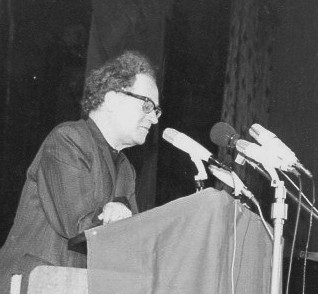
Bernardus Maria Ignatius "Bernard" Delfgaauw was a Dutch philosopher. He studied Dutch language and (thomistic) philosophy at the University of Amsterdam. In 1947 he earned his doctoral degree on John van Ruysbroeck. In 1961 he became a professor in philosophy at the University of Groningen.
Garson Kanin, American director and screenwriter (d. 1999) births
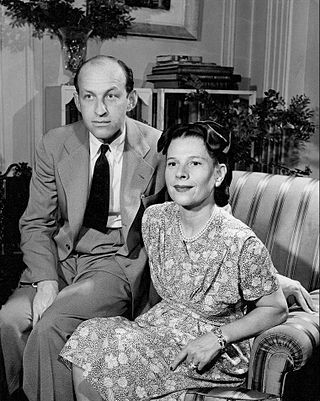
Garson Kanin was an American writer and director of plays and films.
Joan Sanderson, English actress (d. 1992) births
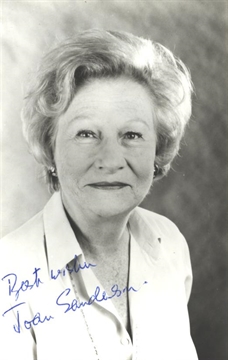
Joan Sanderson was a British television and stage actress born in Bristol. During a long career, her tall and commanding disposition led to her playing mostly dowagers, spinsters and matrons, as well as intense Shakespearean roles. Her television work included the sitcoms Please Sir! (1968–72), Fawlty Towers (1979) and Me and My Girl (1984–88).
Charles Schneeman, American soldier and illustrator (d. 1972) births
Charles Schneeman was an American illustrator of science fiction.
Teddy Wilson, American pianist and educator (d. 1986) births
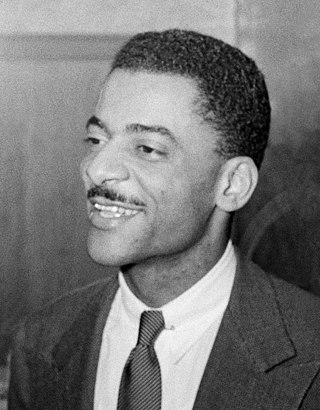
Theodore Shaw Wilson was an American jazz pianist. Described by critic Scott Yanow as "the definitive swing pianist", Wilson had a sophisticated, elegant style. His work was featured on the records of many of the biggest names in jazz, including Louis Armstrong, Lena Horne, Benny Goodman, Billie Holiday, and Ella Fitzgerald. With Goodman, he was one of the first black musicians to appear prominently with white musicians. In addition to his extensive work as a sideman, Wilson also led his own groups and recording sessions from the late 1920s to the 1980s.
Kirby Grant, American actor (d. 1985) births

Kirby Grant, born Kirby Grant Hoon Jr., was a long-time B movie and television actor, mostly remembered for having played the title role in the Western-themed adventure television series Sky King. Between 1949 and 1954, Grant starred in 10 Mounted-Police adventures, usually in the role of Corporal Rod Webb.
Joe Medwick, American baseball player and manager (d. 1975) births
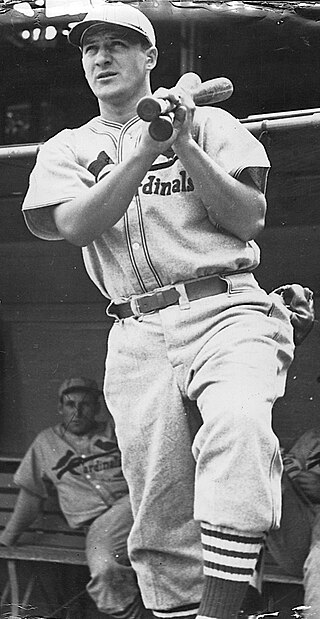
Joseph Michael Medwick, nicknamed "Ducky" and "Muscles", was an American Major League Baseball player. A left fielder with the St. Louis Cardinals during the "Gashouse Gang" era of the 1930s, he also played with the Brooklyn Dodgers, New York Giants (1943–1945), and Boston Braves (1945). Medwick is the last National League player to win the Triple Crown Award (1937).
Larry Siemering, American football player and coach (d. 2009) births

Lawrence Edwin Siemering was an American football player and coach. He played college football at the University of San Francisco and professionally in the National Football League (NFL) with the Boston Redskins in 1935 and 1936. Siemering served as the head football coach at the University of the Pacific in Stockton, California from 1947 to 1951 and at Arizona State University in 1951, compiling a career college football coached record of 41–8–4. He also was the head coach of the Canadian Football League's Calgary Stampeders in 1954. In all, Siemering's football career as a player and coach lasted more than forty years. At the time of his death, he was the oldest surviving professional football player at 98 years of age.
Libertad Lamarque, Argentinian actress and singer (d. 2000) births

Libertad Lamarque Bouza was a Mexican-Argentine actress and singer, one of the icons of the Golden Age of Argentine and Mexican cinema. She achieved fame throughout Latin America, and became known as "La Novia de América". By the time she died in 2000, she had appeared in 65 films and six telenovelas, had recorded over 800 songs and had made innumerable theatrical appearances.
Albert Ross Tilley, Canadian captain and surgeon (d. 1988) births

Albert Ross Tilley, was a Canadian plastic surgeon who pioneered the treatment of burned airmen during the Second World War.
Ward Morehouse, American author, playwright, and critic (d. 1966) births
Ward Morehouse was an American theater critic, newspaper columnist, playwright, and author.
Lucky Luciano, Italian-American mob boss (d. 1962) births

Charles "Lucky" Luciano was an Italian-born gangster who operated mainly in the United States. Luciano started his criminal career in the Five Points gang and was instrumental in the development of the National Crime Syndicate. Luciano is considered the father of modern organized crime in the United States for the establishment of The Commission in 1931, after he abolished the boss of bosses title held by Salvatore Maranzano following the Castellammarese War. He was also the first official boss of the modern Genovese crime family.
Dorothy Shepherd-Barron, English tennis player (d. 1953) births
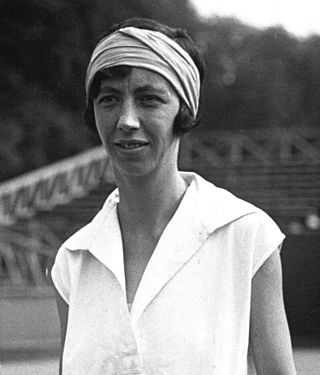
Dorothy Shepherd-Barron was a tennis player from Great Britain who competed in the 1924 Summer Olympics.
Esther Applin, American geologist and paleontologist (d. 1972) births

Esther Applin was an American geologist and paleontologist. She completed her undergraduate degree in 1919 from the University of California, Berkeley. Later, she completed a master's degree which was focused on microfossils. She was a leading figure in the use of microfossils to determine the age of rock formation for use in oil exploration in the Gulf of Mexico region. Her job was to examine microfossils collected in drill holes to determine the age of the rock into which the company was drilling. Applin's discoveries were crucial to successful drilling operations across the entire oil industry. Additionally, her contribution to geology and the study of micropaleontology, put women geologists on the map, and was pivotal in earning them respect in the field.
Ludwik Teichmann, Polish anatomist (b. 1823) deaths

Ludwik Karol Teichmann-Stawiarski (1823–1895) was a Polish anatomist and discoverer of a new way of research in forensic medicine, after whom Teichmann crystals are called.
Herbert Sutcliffe, English cricketer and businessman (d. 1978) births
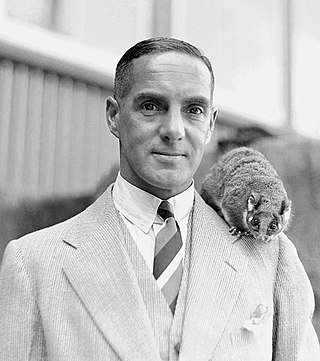
Herbert Sutcliffe was an English professional cricketer who represented Yorkshire and England as an opening batsman. Apart from one match in 1945, his first-class career spanned the period between the two world wars. His first-class debut was delayed by the First World War until 1919 and his career was effectively terminated in August 1939 when he was called up for military service in the imminent Second World War. He was the first cricketer to score 16 centuries in Test match cricket.He is most famous for being the partner of Jack Hobbs and the partnership between the two,Hobbs and Sutcliffe is widely regarded as the greatest partnership of all time.
Charles F. Hurley, American soldier and politician, 54th Governor of Massachusetts (d. 1946) births

Charles Francis Hurley was an American attorney and the 54th Governor of the U.S. state of Massachusetts and one of its first Irish-American governors.

The governor of the Commonwealth of Massachusetts is the chief executive officer of the government of Massachusetts. The governor is the head of the state cabinet and the commander-in-chief of the commonwealth's military forces.
Vasil Gendov, Bulgarian actor, director, and screenwriter (d. 1970) births
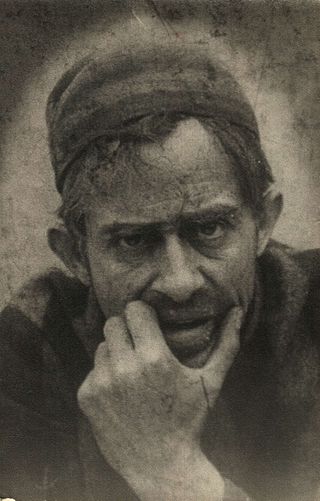
Vasil Gendov was a Bulgarian film and stage actor, film director and screenwriter. Gendov wrote, directed and had a starring role as an actor in the first feature-length film released in Bulgaria; the 1915 silent film comedy Bulgaran is Gallant. Gendov also produced Bulgaria's first sound film The Slave's Revolt in 1933.
August Belmont, German-American banker and politician, 16th United States Ambassador to the Netherlands (b. 1816) deaths
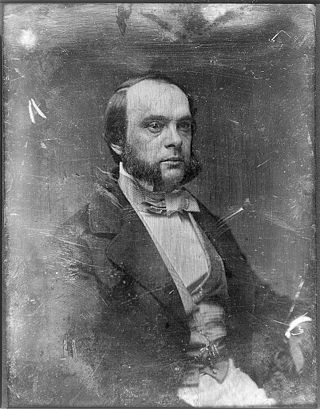
August Belmont Sr. was a German-American financier, diplomat, politician and party chairman of the Democratic National Committee, and also a horse-breeder and racehorse owner. He was the founder and namesake of the Belmont Stakes, third leg of the Triple Crown series of American Thoroughbred horse racing.

The United States diplomatic mission to the Netherlands consists of the embassy located in The Hague and a consular office located in Amsterdam.
Dale Carnegie, American author and educator (d. 1955) births

Dale Carnegie was an American writer and lecturer, and the developer of courses in self-improvement, salesmanship, corporate training, public speaking, and interpersonal skills. Born into poverty on a farm in Missouri, he was the author of How to Win Friends and Influence People (1936), a bestseller that remains popular today. He also wrote How to Stop Worrying and Start Living (1948), Lincoln the Unknown (1932), and several other books.
Fredrick Willius, American cardiologist and author (d. 1972) births
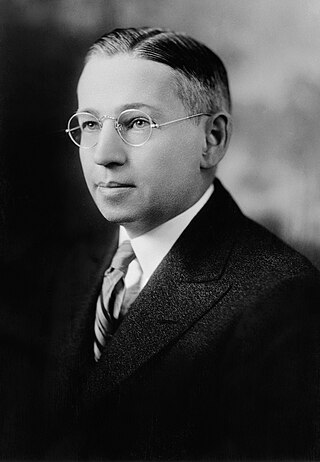
Fredrick Arthur Willius was an American research cardiologist and medical historian who was the founding director of the Cardiology section at the Mayo Clinic.
Raoul Paoli, French boxer and rower (d. 1960) births

Jacques Marie Lucien Raoul Simonpaoli was a French athlete, boxer, wrestler, rower and actor. Aged 12, he served as a coxswain in the French coxed pair and won a bronze medal at the 1900 Summer Olympics. He competed in the shot put, his favourite event, at the 1912, 1920, 1924 and 1928 Summer Olympics with the best result of ninth place in 1924. In 1912 he also took part in the Greco-Roman wrestling contest and served as the Olympic flag bearer for France, and in 1928 he finished 29th in the discus throw.
Erich von Manstein, German field marshal (d. 1973) births

Fritz Erich Georg Eduard von Manstein was a German Field Marshal of the Wehrmacht during the Second World War, who was subsequently convicted of war crimes and sentenced to 18 years imprisonment.
Margaret Caroline Anderson, American publisher, founded The Little Review (d. 1973) births

Margaret Caroline Anderson was the American founder, editor and publisher of the art and literary magazine The Little Review, which published a collection of modern American, English and Irish writers between 1914 and 1929. The periodical is most noted for introducing many prominent American and British writers of the 20th century, such as Ezra Pound and T. S. Eliot, in the United States and publishing the first thirteen chapters of James Joyce's then-unpublished novel Ulysses.
The Little Review, an American literary magazine founded by Margaret Anderson in Chicago's historic Fine Arts Building, published literary and art work from 1914 to May 1929. With the help of Jane Heap and Ezra Pound, Anderson created a magazine that featured a wide variety of transatlantic modernists and cultivated many early examples of experimental writing and art. Many contributors were American, British, Irish, and French. In addition to publishing a variety of international literature, The Little Review printed early examples of surrealist artwork and Dadaism. The magazine's most well known work was the serialization of James Joyce's Ulysses.
Theodor Altermann, Estonian actor, director, and producer (d. 1915) births
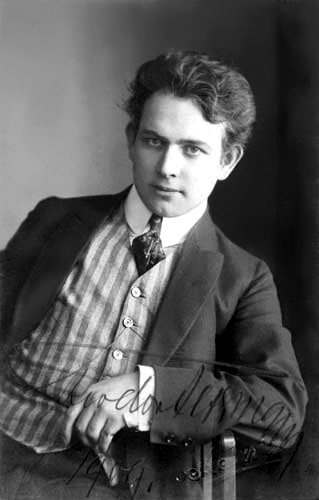
Theodor Altermann was an actor, theatre director and producer in the Russian Empire.
Christian Wirth, German SS officer (d. 1944) births
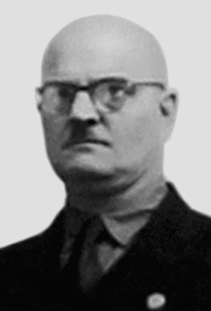
Christian Wirth was a German SS officer and leading Holocaust perpetrator who was one of the primary architects of the program to exterminate the Jewish people of Poland, known as Operation Reinhard. His nicknames included Christian the Cruel, Stuka, and The Wild Christian due to the extremity of his behaviour among the SS and Trawniki guards and to the camp inmates and victims.

The Schutzstaffel was a major paramilitary organization under Adolf Hitler and the Nazi Party in Nazi Germany, and later throughout German-occupied Europe during World War II.
Nicolás Avellaneda, Argentinian journalist and politician, 8th President of Argentina (b. 1837) deaths
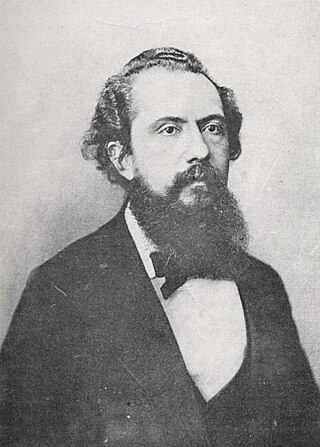
Nicolás Remigio Aurelio Avellaneda Silva was an Argentine politician and journalist, and President of Argentina from 1874 to 1880. Avellaneda's main projects while in office were banking and education reform, leading to Argentina's economic growth. The most important events of his government were the Conquest of the Desert and the transformation of the Buenos Aires into a federal district.

The president of Argentina, officially known as the president of the Argentine Nation, is both head of state and head of government of Argentina. Under the national constitution, the president is also the chief executive of the federal government and commander-in-chief of the armed forces.
Yitzhak Ben-Zvi, Ukrainian-Israeli historian and politician, 2nd President of Israel (d. 1963) births
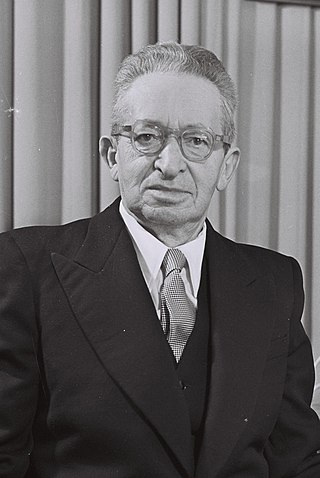
Yitzhak Ben-Zvi was a historian, Labor Zionist leader and the longest-serving President of Israel.

The president of the State of Israel is the head of state of Israel. The position is largely a ceremonial role, with executive power vested in the cabinet led by the prime minister. The incumbent president is Isaac Herzog, who took office on 7 July 2021. Presidents are elected by the Knesset for a single seven-year term.
Nikolai Janson, Russian politician (d. 1938) births
Nikolay Mikhailovich Janson was an Estonian revolutionary, Soviet politician and statesman.
Al Christie, Canadian-American director, producer, and screenwriter (d. 1951) births

Charles Herbert Christie and Alfred Ernest Christie were Canadian motion picture entrepreneurs.
Wylie Cameron Grant, American tennis player (d. 1968) births

Wylie Cameron Grant was an American tennis champion.
Alben W. Barkley, American lawyer and politician, 35th Vice President of the United States (d. 1956) births

Alben William Barkley was an American lawyer and politician from Kentucky who served in both houses of Congress and as the 35th vice president of the United States from 1949 to 1953 under President Harry S. Truman. After 1905, he was elected to local offices and in 1912 U.S. representative. In Congress he was a liberal Democrat, supporting President Woodrow Wilson's New Freedom domestic agenda and foreign policy.

The vice president of the United States (VPOTUS) is the second-highest officer in the executive branch of the U.S. federal government, after the president of the United States, and ranks first in the presidential line of succession. The vice president is also an officer in the legislative branch, as the president of the Senate. In this capacity, the vice president is empowered to preside over Senate deliberations at any time, but may not vote except to cast a tie-breaking vote. The vice president is indirectly elected together with the president to a four-year term of office by the people of the United States through the Electoral College.
Kavasji Jamshedji Petigara, Indian police officer (d. 1941) births

Khan Bahadur Kavasji Jamshedji Petigara was the first Indian to become the Deputy Commissioner of Police of the Mumbai Police in 1928. He was in charge of the Crime Branch division and was noted for his intelligence network. A decorated officer, he was appointed an Officer of the Order of the British Empire (OBE), Companion of the Indian Empire (CIE) and awarded the King's Police Medal (KPM). Petigara was also awarded the Imperial Service Order (ISO) and used the honorific title "Khan Bahadur". He joined the police force as a sub-inspector at the CID, and gradually rose through the ranks. In 1928, he was promoted to the Indian Police Service rank, one that very few Indians achieved in those days.
Walter Burley Griffin, American architect and urban planner, designed Canberra (d. 1937) births

Walter Burley Griffin was an American architect and landscape architect. He is known for designing Canberra, Australia's capital city and the New South Wales towns of Griffith and Leeton. He has been credited with the development of the L-shaped floor plan, the carport and an innovative use of reinforced concrete.

Canberra is the capital city of Australia. Founded following the federation of the colonies of Australia as the seat of government for the new nation, it is Australia's largest inland city and the eighth-largest city overall. The city is located at the northern end of the Australian Capital Territory at the northern tip of the Australian Alps, the country's highest mountain range. As of June 2021, Canberra's estimated population was 453,558.
Charles William Miller, Brazilian footballer and referee (d. 1953) births
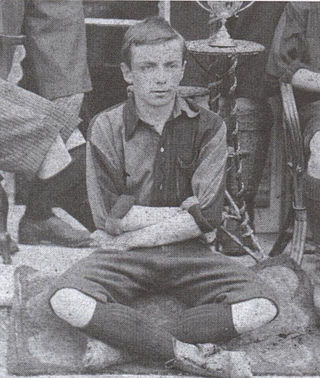
Charles William Miller was a Brazilian sportsman, who is considered to be the father of football in Brazil.
Julius Martov, Russian politician (d. 1923) births

Julius Martov or L. Martov was a politician and revolutionary who became the leader of the Mensheviks in early 20th-century Russia. He was arguably the closest friend Vladimir Lenin ever had, and was a friend and mentor of Leon Trotsky, who described him as the "Hamlet of Democratic Socialism".
Herbert Roper Barrett, English tennis player (d. 1943) births

Herbert Roper Barrett, KC was a tennis player from Great Britain.
Comte de Lautréamont, Uruguayan-French poet and author (b. 1846) deaths
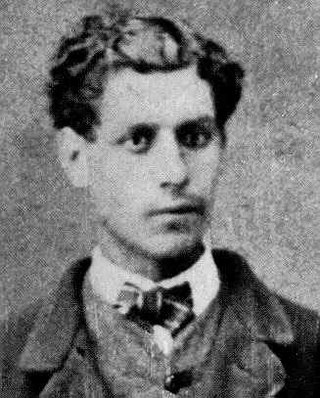
Comte de Lautréamont was the nom de plume of Isidore Lucien Ducasse, a French poet born in Uruguay. His only works, Les Chants de Maldoror and Poésies, had a major influence on modern arts and literature, particularly on the Surrealists and the Situationists. Ducasse died at the age of 24.
Óscar Carmona, Portuguese field marshal and politician, 11th President of Portugal (d. 1951) births

António Óscar de Fragoso Carmona was a Portuguese Army officer and politician who served as prime minister of Portugal from 1926 to 1928 and as the 11th president of Portugal from 1926 until his death in 1951. He also served as the Minister of War, in late 1923 and in 1926, and as a Minister of Foreign Affairs in 1926.
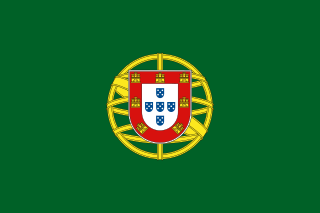
The president of Portugal, officially the president of the Portuguese Republic, is the head of state and highest office of Portugal.
Scott Joplin, American pianist and composer (d. 1917) births

Scott Joplin was an American composer and pianist. Because of the fame achieved for his ragtime compositions, he was dubbed the "King of Ragtime." During his career, he wrote over 40 original ragtime pieces, one ragtime ballet, and two operas. One of his first and most popular pieces, the Maple Leaf Rag, became the genre's first and most influential hit, later being recognized as the archetypal rag. Joplin considered ragtime to be a form of classical music and largely disdained the practice of ragtime such as that in honky tonk.
Henri de Toulouse-Lautrec, French painter and illustrator (d. 1901) births

Comte Henri Marie Raymond de Toulouse-Lautrec-Monfa was a French painter, printmaker, draughtsman, caricaturist and illustrator whose immersion in the colourful and theatrical life of Paris in the late 19th century allowed him to produce a collection of enticing, elegant, and provocative images of the sometimes decadent affairs of those times.
Cass Gilbert, American architect, designed the United States Supreme Court Building and Woolworth Building (d. 1934) births

Cass Gilbert was an American architect. An early proponent of skyscrapers, his works include the Woolworth Building, the United States Supreme Court building, the state capitols of Minnesota, Arkansas and West Virginia; and the Detroit Public Library, the Saint Louis Art Museum and Public Library. His public buildings in the Beaux Arts style reflect the optimistic American sense that the nation was heir to Greek democracy, Roman law and Renaissance humanism. Gilbert's achievements were recognized in his lifetime; he served as president of the American Institute of Architects in 1908–09.

The Supreme Court Building houses the Supreme Court of the United States. Also referred to as "The Marble Palace," the building serves as the official workplace of the Chief Justice of the United States and the eight Associate Justices of the Supreme Court. It is located at 1 First Street in Northeast Washington, D.C., in the block immediately east of the United States Capitol and north of the Library of Congress. The building is managed by the Architect of the Capitol. On May 4, 1987, the Supreme Court Building was designated a National Historic Landmark.

The Woolworth Building is an early American skyscraper designed by architect Cass Gilbert located at 233 Broadway in the Tribeca neighborhood of Manhattan in New York City. It was the tallest building in the world from 1913 to 1930, with a height of 792 feet (241 m). More than a century after its construction, it remains one of the 100 tallest buildings in the United States.
Miklós Kovács, Hungarian-Slovene poet and songwriter (d. 1937) births
Miklós Kovács was a Hungarian Slovene cantor and writer.
John Indermaur, British lawyer (d. 1925) births
John Indermaur was a British lawyer and legal writer, with his writing focus was on common law. He is known for having written An Epitome of Leading Common Law Cases in 1875, Principles of Common Law in 1876, and The Student's Guide to Trusts and Partnerships in 1885. Indermaur qualified as a solicitor in 1874. He and his law partner, Charles Thwaites, had a law firm on Chancery Lane in the City of London and began teaching and writing about law together in 1884. Other legal works written by Indermaur include A Manual of the Principals of Equity, The Student's Guide to Procedure and Evidence, and Principals and Practice in Matters Appertaining to Conveyancing.
Frances Hodgson Burnett, English-American novelist and playwright (d. 1924) births

Frances Eliza Hodgson Burnett was a British-American novelist and playwright. She is best known for the three children's novels Little Lord Fauntleroy, A Little Princess (1905), and The Secret Garden (1911).
William Lamb, 2nd Viscount Melbourne, English politician, Prime Minister of the United Kingdom (b. 1779) deaths
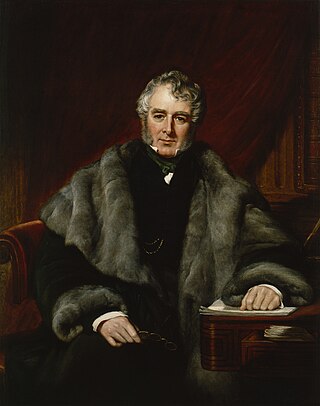
William Lamb, 2nd Viscount Melbourne,, in some sources called Henry William Lamb, was a British Whig politician who served as Home Secretary (1830–1834) and Prime Minister. His first premiership ended when he was dismissed by King William IV in 1834, the last British prime minister to be dismissed by a monarch. Five months later he was re-appointed and served for six more years, into the reign of Queen Victoria. He is best known for coaching the Queen in the ways of politics, acting almost as her private secretary. Historians do not rank Melbourne's tenure as prime minister favourably, as he had no great foreign wars or domestic issues to handle, and he was involved in several political scandals in the early years of Victoria's reign.

The prime minister of the United Kingdom is the head of government of the United Kingdom. The prime minister advises the sovereign on the exercise of much of the royal prerogative, chairs the Cabinet and selects its ministers. As modern prime ministers hold office by virtue of their ability to command the confidence of the House of Commons, they sit as members of Parliament.
John Alfred Brashear, American scientist, telescope maker and educator (d. 1920) births

John Alfred Brashear was an American astronomer and instrument builder.
Carlo Collodi, Italian journalist and author (d. 1890) births
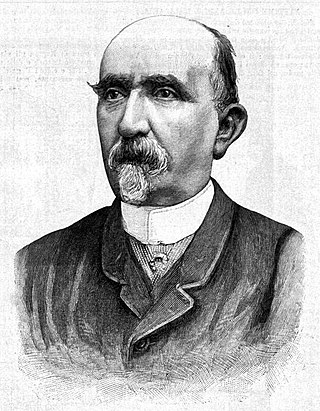
Carlo Lorenzini, better known by the pen name Carlo Collodi, was an Italian author, humourist, and journalist, widely known for his fairy tale novel The Adventures of Pinocchio.
Xavier Hommaire de Hell, French geographer and engineer (d. 1848) births

Ignace Xavier Morand Hommaire de Hell, often known as Xavier Hommaire de Hell, was a French geographer, engineer and traveller who carried out research in Turkey, southern Russia and Persia.
Ulrich Ochsenbein, Swiss lawyer and politician, President of the Swiss National Council (d. 1890) births

Ulrich Ochsenbein was a Swiss politician and member of the Swiss Federal Council (1848–1854).
The President of the National Council of Switzerland presides over the National Council and Federal Assembly. The National Council President is often colloquially referred to as the "highest Swiss person", as the highest ranking person subject to the people's vote. However, this is an honorary title and the president is not the head of state. The head of state is the Federal Council). In the official order of precedence, she or he ranks behind the members of the Federal Council, but ahead of the President of the Swiss Council of States.
Joseph Brant, American tribal leader (b. 1742) deaths

Thayendanegea or Joseph Brant was a Mohawk military and political leader, based in present-day New York, who was closely associated with Great Britain during and after the American Revolution. Perhaps the Native American of his generation best known to the Americans and British, he met many of the most significant Anglo-American people of the age, including both George Washington and King George III.
William Webb Ellis, English priest, created Rugby football (d. 1872) births
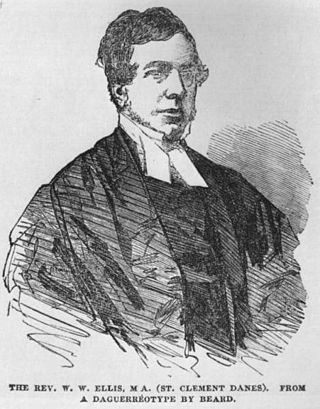
William Webb Ellis was an English Anglican clergyman who, by tradition, has been credited as the inventor of rugby football while a pupil at Rugby School. According to legend, Webb Ellis picked up the ball and ran with it during a school football match in 1823, thus creating the "rugby" style of play. Although the story has become firmly entrenched in the sport's folklore, it is not supported by substantive evidence, and is discounted by most rugby historians as an origin myth.

Rugby football is the collective name for the team sports of rugby union and rugby league.
Ludwig Bechstein, German author and poet (d. 1860) births

Ludwig Bechstein was a German writer and collector of folk fairy tales.
Franz Moritz von Lacy, Austrian field marshal (b. 1725) deaths

Franz Moritz Graf von Lacy was a Baltic German-born Austrian military leader, he was the son of Count Peter von Lacy and was a famous Austrian field marshal. He served during the reign of Maria Theresa and was a close friend to Joseph II, Holy Roman Emperor, becoming one of the latter's advisers. Lacy was made a Count of the Holy Roman Empire.
Philip Hamilton, Oldest son of Alexander Hamilton (b. 1782) deaths

Philip Hamilton was the eldest child of Alexander Hamilton, the first U.S. Secretary of the Treasury, and Elizabeth Schuyler Hamilton. He died at age 19, fatally shot in a duel with George Eacker.
Clément Charles François de Laverdy, French lawyer and politician, French Minister of Finance (b. 1723) deaths
Clément Charles François de Laverdy was a French statesman.
This is a list of Ministers of Finance of France, including the equivalent positions of Superintendent of Finances and Controller-General of Finances during the Ancien Régime. The position of Superintendent of Finances was abolished following the arrest of Nicolas Fouquet; his powers were transferred to First Minister Jean-Baptiste Colbert, who would become ex officio Controller-General of Finances four years later after the elevation of the office.
Zachary Taylor, American general and politician, 12th President of the United States (d. 1850) births

Zachary Taylor was an American military leader who served as the 12th president of the United States from 1849 until his death in 1850. Taylor was a career officer in the United States Army, rising to the rank of major general and becoming a national hero for his victories in the Mexican–American War. As a result, he won election to the White House despite his vague political beliefs. His top priority as president was to preserve the Union. He died 16 months into his term, having made no progress on the most divisive issue in Congress and the nation: slavery.

The president of the United States (POTUS) is the head of state and head of government of the United States of America. The president directs the executive branch of the federal government and is the commander-in-chief of the United States Armed Forces.
James Caldwell, American minister (b. 1734) deaths
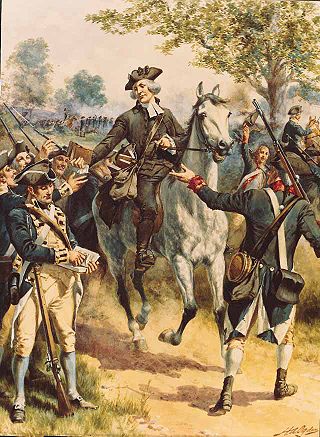
James Caldwell was a Presbyterian minister who played a prominent part in the American Revolution.
Lorenzo Ricci, Italian religious leader, 18th Superior General of the Society of Jesus (b. 1703) deaths

Lorenzo Ricci, S.J. was an Italian Jesuit, elected the eighteenth Superior General of the Society of Jesus. He was also the last before the suppression of the Jesuits in 1773.

The superior general of the Society of Jesus is the leader of the Society of Jesus, the Catholic religious order also known as the Jesuits. He is generally addressed as Father General. The position sometimes carries the nickname of the Black Pope, because of his responsibility for the largest male religious order, in contrast with the white garb of the pope. The thirty-first and current superior general is Fr Arturo Sosa, elected by the 36th General Congregation on 14 October 2016.
Thomas Dick, Scottish minister, author, and educator (d. 1857) births

Reverend Thomas Dick, was a British church minister, science teacher and writer, known for his works on astronomy and practical philosophy, combining science and Christianity, and arguing for a harmony between the two.
Charles-Jean-François Hénault, French historian and author (b. 1685) deaths

Charles-Jean-François Hénault was a French writer and historian.
Maria Luisa of Spain (d. 1792) births

Infanta Maria Luisa of Spain was Holy Roman Empress, German Queen, Queen of Hungary and Bohemia, and Grand Duchess of Tuscany as the spouse of Leopold II, Holy Roman Emperor.
Ulrika Eleonora, Queen of Sweden (b. 1688) deaths

Ulrika Eleonora or Ulrica Eleanor, known as Ulrika Eleonora the Younger, was Queen of Sweden, reigning in her own right from 5 December 1718 until her abdication on 29 February 1720 in favour of her husband King Frederick, and then as his consort until her death.
Alexander Suvorov, Russian field marshal (d. 1800) births

Alexander Vasilyevich Suvorov was a Russian general in service of the Russian Empire. He was Count of Rymnik, Count of the Holy Roman Empire, Prince of the Kingdom of Sardinia, Prince of the Russian Empire and the last Generalissimo of the Russian Empire. Suvorov is considered one of the greatest military commanders in Russian history and one of the great generals of the early modern period. He was awarded numerous medals, titles, and honors by Russia, as well as by other countries. Suvorov secured Russia's expanded borders and renewed military prestige and left a legacy of theories on warfare. He was the author of several military manuals, the most famous being The Science of Victory, and was noted for several of his sayings. He never lost a single battle he commanded. Several military academies, monuments, villages, museums, and orders in Russia are dedicated to him.
Maria Amalia of Saxony (d. 1760) births
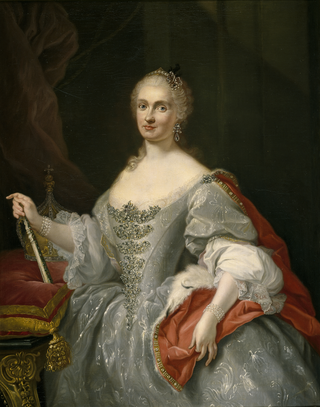
Maria Amalia of Saxony was born a princess of Poland and Saxony, and became Queen of Naples and Sicily from 1738 until 1759, and then Queen of Spain from 1759 until her death in 1760 by marriage to Charles III of Spain. The arranged marriage produced many children who survived into adulthood, including Charles IV of Spain. A popular consort, she oversaw the construction of the Caserta Palace outside Naples as well as various other projects, and she is known for her influence upon the affairs of state.
Johann Adam Reincken, Dutch-German organist and composer (b. 1623) deaths
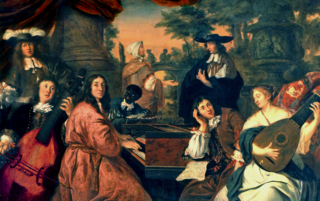
Johann Adam Reincken was a Dutch/German organist and composer. He was one of the most important composers of the 17th century, a friend of Dieterich Buxtehude and a major influence on Johann Sebastian Bach; however, very few of his works survive to this day.
Junípero Serra, Spanish priest and missionary (d. 1784) births
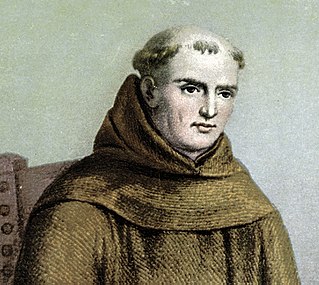
Junípero Serra y Ferrer was a Spanish Roman Catholic priest and missionary of the Franciscan Order. He is credited with establishing the Franciscan Missions in the Sierra Gorda, a UNESCO World Heritage Site. He later founded a mission in Baja California and the first nine of 21 Spanish missions in California from San Diego to San Francisco, in what was then Spanish-occupied Alta California in the Province of Las Californias, New Spain.
Laurence Sterne, Irish novelist and clergyman (d. 1768) births

Laurence Sterne, was an Anglo-Irish novelist and Anglican cleric who wrote the novels The Life and Opinions of Tristram Shandy, Gentleman and A Sentimental Journey Through France and Italy, published sermons and memoirs, and indulged in local politics. He grew up in a military family travelling mainly in Ireland but briefly in England. An uncle paid for Sterne to attend Hipperholme Grammar School in the West Riding of Yorkshire, as Sterne's father was ordered to Jamaica, where he died of malaria some years later. He attended Jesus College, Cambridge on a sizarship, gaining bachelor's and master's degrees. While Vicar of Sutton-on-the-Forest, Yorkshire, he married Elizabeth Lumley in 1741. His ecclesiastical satire A Political Romance infuriated the church and was burnt. With his new talent for writing, he published early volumes of his best-known novel, The Life and Opinions of Tristram Shandy, Gentleman. Sterne travelled to France to find relief from persistent tuberculosis, documenting his travels in A Sentimental Journey Through France and Italy, published weeks before his death. His posthumous Journal to Eliza addresses Eliza Draper, for whom he had romantic feelings. Sterne died in 1768 and was buried in the yard of St George's, Hanover Square. His body was said to have been stolen after burial and sold to anatomists at Cambridge University, but recognised and reinterred. His ostensible skull was found in the churchyard and transferred to Coxwold in 1969 by the Laurence Sterne Trust.
Charles-Michel de l'Épée, French priest and educator (d. 1789) births
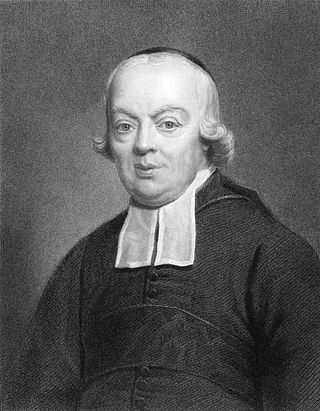
Charles-Michel de l'Épée was a philanthropic educator of 18th-century France who has become known as the "Father of the Deaf".
Ali II ibn Hussein, Tunisian ruler (d. 1782) births
Ali II ibn Hussein was the fourth leader of the Husainid Dynasty and the ruler of Tunisia from 1759 until his death in 1782.
Charles Theodore Pachelbel, German organist and composer (d. 1750) births
Charles Theodore Pachelbel was a German composer, organist and harpsichordist of the late Baroque era. He was the son of the more famous Johann Pachelbel, composer of the popular Canon in D. He was one of the first European composers to take up residence in the American colonies, and was the most famous musical figure in early Charleston, South Carolina.
Guru Tegh Bahadur, Indian guru (b. 1621) deaths

Guru Tegh Bahadur was the ninth of ten Gurus who founded the Sikh religion and the leader of Sikhs from 1665 until his beheading in 1675. He was born in Amritsar, Punjab, India in 1621 and was the youngest son of Guru Hargobind, the sixth Sikh guru. Considered a principled and fearless warrior, he was a learned spiritual scholar and a poet whose 115 hymns are included in Sri Guru Granth Sahib, the main text of Sikhism.
Charles XI of Sweden (d. 1697) births

Charles XI or Carl was King of Sweden from 1660 until his death, in a period of Swedish history known as the Swedish Empire (1611–1721).
Manuel Cardoso, Portuguese organist and composer (b. 1566) deaths
Manuel Cardoso was a Portuguese composer and organist. With Duarte Lobo and John IV of Portugal, he represented the "golden age" of Portuguese polyphony.
Walatta Petros, saint in the Ethiopian Orthodox Tewahedo Church (b. 1592) deaths

Walatta Petros was an Ethiopian female saint. Her hagiography, The Life-Struggles of Walatta Petros was written in 1672. She is known for resisting conversion to Roman Catholicism, forming many religious communities, and performing miracles for those seeking asylum from kings.
Baruch Spinoza, Dutch philosopher and scholar (d. 1677) births

Baruch (de) Spinoza was a Dutch philosopher of Portuguese-Jewish origin, born in Amsterdam. One of the foremost exponents of 17th-century Rationalism and one of the early and seminal thinkers of the Enlightenment and modern biblical criticism including modern conceptions of the self and the universe, he came to be considered "one of the most important philosophers—and certainly the most radical—of the early modern period." Inspired by Stoicism, Jewish Rationalism, Machiavelli, Hobbes, Descartes, and a variety of heterodox religious thinkers of his day, Spinoza became a leading philosophical figure of the Dutch Golden Age. Spinoza's given name, which means "Blessed", varies among different languages. In Hebrew, his full name is written ברוך שפינוזה. In most of the documents and records contemporary with Spinoza's years within the Jewish community, his name is given as Bento, Portuguese for "Blessed". In his works in Latin, he used the name "Benedictus de Spinoza".
Étienne Baluze, French scholar and academic (d. 1718) births

Étienne Baluze was a French scholar and historiographer, also known as Stephanus Baluzius.
Philip William, Elector Palatine (d. 1690) births

Philip William of Neuburg, Elector Palatine was Count Palatine of Neuburg from 1653 to 1690, Duke of Jülich and Berg from 1653 to 1679 and Elector of the Palatinate from 1685 to 1690. He was the son of Wolfgang Wilhelm, Count Palatine of Neuburg and Magdalene of Bavaria.
Sethus Calvisius, German composer and theorist (b. 1556) deaths

Sethus Calvisius or Setho Calvisio, originally Seth Kalwitz, was a German music theorist, composer, chronologer, astronomer, and teacher of the late Renaissance.
John, Count of Nassau-Idstein (1629–1677) (d. 1677) births

Count John of Nassau-Idstein was Count of Nassau and Protestant Regent of Idstein.
Henry Grey, 10th Earl of Kent, English politician, Lord Lieutenant of Bedfordshire (d. 1651) births
Henry Grey, 10th Earl of Kent, known as Lord Ruthin from 1639 to 1643, was an English politician who sat in the House of Commons in 1640 and succeeded to the title Earl of Kent in 1643.
This is a list of people who have served as Lord Lieutenant of Bedfordshire. Since 1711, all Lords Lieutenant have also been Custos Rotulorum of Bedfordshire.
Juan Martínez de Jáuregui y Aguilar, Spanish poet and painter (d. 1641) births
Juan Martínez de Jáuregui y Aguilar, was a Spanish poet, scholar and painter in the Siglo de Oro.
Philip Massinger, English dramatist (d. 1640) births
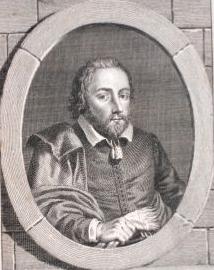
Philip Massinger was an English dramatist. His finely plotted plays, including A New Way to Pay Old Debts, The City Madam, and The Roman Actor, are noted for their satire and realism, and their political and social themes.
René de Birague, French cardinal (b. 1506) deaths

René de Birague was an Italian patrician who became a French cardinal and chancellor.
John Knox, Scottish pastor and theologian (b. 1510) deaths

John Knox was a Scottish minister, Reformed theologian, and writer who was a leader of the country's Reformation. He was the founder of the Presbyterian Church of Scotland.
Johannes Oecolampadius, German theologian and reformer (b. 1482) deaths

Johannes Oecolampadius was a German Protestant reformer in the Calvinist tradition from the Electoral Palatinate. He was the leader of the Protestant faction in the Baden Disputation of 1526, and he was one of the founders of Protestant theology, engaging in disputes with Erasmus, Zwingli, Luther and Martin Bucer. Calvin adopted his view on the Eucharist dispute.
Mingyi Nyo, Burmese ruler (b. 1459) deaths

Mingyi Nyo was the founder of Toungoo dynasty of Burma (Myanmar). Under his 45-year leadership (1485–1530), Toungoo (Taungoo), grew from a remote backwater vassal state of Ava Kingdom to a small but stable independent kingdom. In 1510, he declared Toungoo's independence from its nominal overlord Ava. He skillfully kept his small kingdom out of the chaotic warfare plaguing Upper Burma. Toungoo's stability continued to attract refugees from Ava fleeing the repeated raids of Ava by the Confederation of Shan States (1490s–1527). Nyo left a stable, confident kingdom that enabled his successor Tabinshwehti to contemplate taking on larger kingdoms on his way to founding the Toungoo Empire.
Loys of Gruuthuse, Earl of Winchester (b. c. 1427) deaths

Louis de Bruges, Lord of Gruuthuse, Prince of Steenhuijs, Earl of Winchester, was a Flemish courtier, bibliophile, soldier and nobleman. He was awarded the title of Earl of Winchester by King Edward IV of England in 1472, and was Stadtholder of Holland and Zeeland 1462–77.

Winchester is a cathedral city in Hampshire, England. The city lies at the heart of the wider City of Winchester, a local government district, at the western end of the South Downs National Park, on the River Itchen. It is 60 miles (97 km) south-west of London and 14 miles (23 km) from Southampton, its nearest city. At the 2011 census, Winchester had a population of 45,184. The wider City of Winchester district, which includes towns such as Alresford and Bishop's Waltham, has a population of 116,595. Winchester is the county town of Hampshire and contains the head offices of Hampshire County Council.
Pietro Torrigiano, Italian sculptor (d. 1528) births
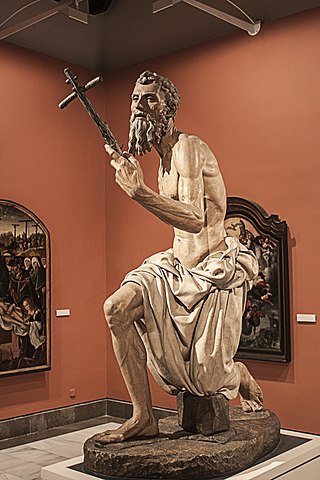
Pietro Torrigiano was an Italian Renaissance sculptor from Florence, who had to flee the city after breaking Michelangelo's nose. He then worked abroad, and died in prison in Spain. He was important in introducing Renaissance art to England, but his career was adversely affected by his violent temperament.
Jean de Dunois, French soldier (b. 1402) deaths
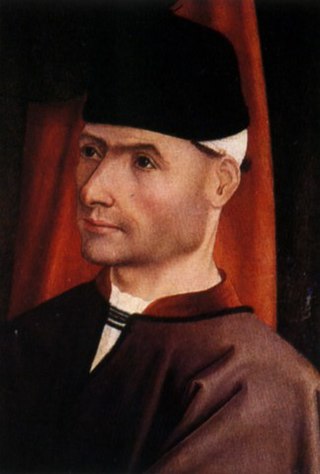
Jean d'Orléans, Count of Dunois, known as the "Bastard of Orléans" or simply Jean de Dunois, was a French military leader during the Hundred Years' War who participated in military campaigns with Joan of Arc. His nickname, the "Bastard of Orléans", was a mark of his high status, since it acknowledged him as a first cousin to the king and acting head of a cadet branch of the royal family during his half-brother's captivity. In 1439 he received the county of Dunois from his half-brother Charles, Duke of Orléans, and later king Charles VII made him count of Longueville.
John Stafford, 1st Earl of Wiltshire, English nobleman (d. 1473) births

John Stafford, 1st Earl of Wiltshire KG, KB was an English nobleman, the youngest son of Humphrey Stafford, 1st Duke of Buckingham. In 1461 he was appointed Knight of the Order of the Bath.
Elizabeth of Lancaster, Duchess of Exeter, (b. c. 1363) deaths

Elizabeth of Lancaster was the third child of John of Gaunt, 1st Duke of Lancaster, and his first wife Blanche of Lancaster. Elizabeth was made a Lady of the Garter in 1378.
Charles, Duke of Orléans (d. 1465) births

Charles of Orléans was Duke of Orléans from 1407, following the murder of his father, Louis I, Duke of Orléans. He was also Duke of Valois, Count of Beaumont-sur-Oise and of Blois, Lord of Coucy, and the inheritor of Asti in Italy via his mother Valentina Visconti.
Hugh Despenser the Younger, English courtier (b. 1296) deaths

Hugh le Despenser, 1st Baron le Despenser, also referred to as "the Younger Despenser", was the son and heir of Hugh le Despenser, Earl of Winchester, by his wife Isabella de Beauchamp, daughter of William de Beauchamp, 9th Earl of Warwick. He rose to national prominence as royal chamberlain and a favourite of Edward II of England. Despenser made many enemies amongst the nobility of England. After the overthrow of Edward, he was eventually charged with high treason and ultimately hanged, drawn and quartered.
Alphonso, Earl of Chester (d. 1284) births
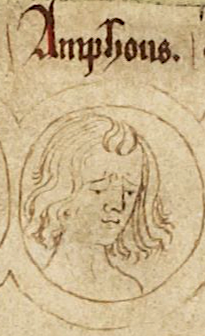
Alphonso or Alfonso, also called Alphonsus and Alphonse and styled Earl of Chester, was an heir apparent to the English throne who never became king.
Magnús Óláfsson, King of Mann and the Isles deaths
Magnús Óláfsson was a King of Mann and the Isles. He was a son of Óláfr Guðrøðarson, King of the Isles, and a member of the Crovan dynasty. Magnús' realm encompassed Mann and parts of the Hebrides. Some leading members of Magnús' family—such as his father—styled themselves "King of the Isles"; other members—such as Magnús and his brothers—styled themselves "King of Mann and the Isles". Although kings in their own right, leading members of the Crovan dynasty paid tribute to the Kings of Norway and generally recognised a nominal Norwegian overlordship of Mann and the Hebrides. Magnus was driven out by King Alexander III.
Leszek I the White, High Duke of Poland (b. c. 1186) deaths

Leszek the White was Prince of Sandomierz and High Duke of Poland in the years 1194–1198, 1199, 1206–1210, and 1211–1227. During the early stages of his reign, his uncle Duke Mieszko III the Old and cousin Władysław III Spindleshanks, from the Greater Polish branch of the royal Piast dynasty, contested Leszek's right to be High Duke.
Bagrat IV of Georgia (b. 1018) deaths
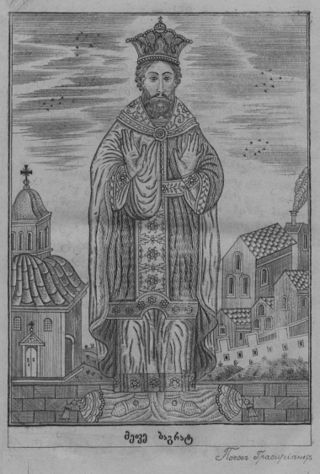
Bagrat IV, of the Bagrationi dynasty, was the King of Georgia from 1027 to 1072. During his long and eventful reign, Bagrat sought to repress the great nobility and to secure Georgia's sovereignty from the Byzantine and Seljuq Empires. In a series of intermingled conflicts, Bagrat succeeded in defeating his most powerful vassals and rivals of the Liparitid family, bringing several feudal enclaves under his control, and reducing the kings of Lorri and Kakheti, as well as the emir of Tbilisi to vassalage. Like many medieval Caucasian rulers, he bore several Byzantine titles, particularly those of nobelissimos, curopalates, and sebastos.
Emperor Kōtoku of Japan (b. 596) deaths
Emperor Kōtoku was the 36th emperor of Japan, according to the traditional order of succession.
Christian feast days: Albert of Louvain
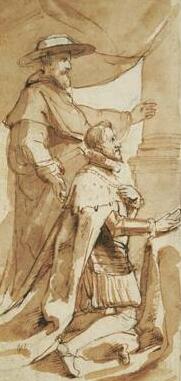
Albert of Louvain was a cardinal of the Catholic Church and the Prince-Bishop of Liège. He was canonized as a saint on 9 August 1613 and his feast falls on the date of his death.
Christian feast days: Andrew Dũng-Lạc, Pierre Dumoulin-Borie, and other Vietnamese Martyrs

Andrew Trần Dũng-Lạc, French: André Dũng-Lạc; c. 1795 – 21 December 1839) was a Vietnamese Roman Catholic priest. He was executed by beheading during the reign of Minh Mạng. He is a saint and martyr of the Catholic Church.

Pierre-Rose-Ursule Dumoulin-Borie was a French Catholic missionary priest and a member of the Paris Foreign Missions Society. He is a Catholic saint, canonized in 1988 along with other Vietnamese Martyrs.
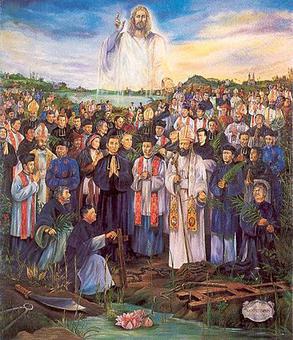
The Vietnamese Martyrs, also known as the Martyrs of Annam, Martyrs of Tonkin and Cochinchina, Martyrs of Indochina, or Andrew Dung-Lac and Companions, are saints on the General Roman Calendar who were canonized by Pope John Paul II. On June 19, 1988, thousands of Overseas Vietnamese worldwide gathered at the Vatican for the Celebration of the Canonization of 117 Vietnamese Martyrs, an event chaired by Monsignor Tran Van Hoai. Their memorial is on November 24.
Christian feast days: Chrysogonus (Roman Catholic Church)
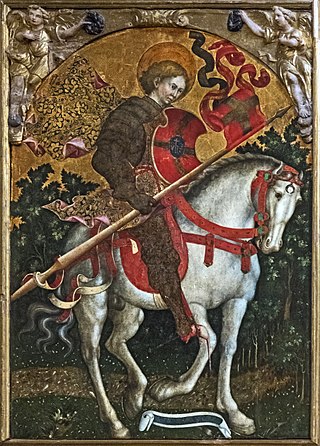
Saint Chrysogonus is a saint and martyr of ancient Rome venerated by the Catholic Church and the Eastern Orthodox Church.

The Catholic Church, also known as the Roman Catholic Church, is the largest Christian church, with 1.3 billion baptized Catholics worldwide as of 2019. As the world's oldest and largest continuously functioning international institution, it has played a prominent role in the history and development of Western civilization. The church consists of 24 sui iuris churches, including the Latin Church and 23 Eastern Catholic Churches, which comprise almost 3,500 dioceses and eparchies located around the world. The pope, who is the bishop of Rome, is the chief pastor of the church. The bishopric of Rome, known as the Holy See, is the central governing authority of the church. The administrative body of the Holy See, the Roman Curia, has its principal offices in Vatican City, a small enclave of the Italian city of Rome, of which the pope is head of state.
Christian feast days: Colmán of Cloyne (Roman Catholic Church)

Saint Colmán of Cloyne, also Colmán mac Léníne, was a monk, founder and patron of Cluain Uama, now Cloyne, County Cork, Ireland, and one of the earliest known Irish poets to write in the vernacular.

The Catholic Church, also known as the Roman Catholic Church, is the largest Christian church, with 1.3 billion baptized Catholics worldwide as of 2019. As the world's oldest and largest continuously functioning international institution, it has played a prominent role in the history and development of Western civilization. The church consists of 24 sui iuris churches, including the Latin Church and 23 Eastern Catholic Churches, which comprise almost 3,500 dioceses and eparchies located around the world. The pope, who is the bishop of Rome, is the chief pastor of the church. The bishopric of Rome, known as the Holy See, is the central governing authority of the church. The administrative body of the Holy See, the Roman Curia, has its principal offices in Vatican City, a small enclave of the Italian city of Rome, of which the pope is head of state.
Christian feast days: Eanflæd
Eanflæd was a Deiran princess, queen of Northumbria and later, the abbess of an influential Christian monastery in Whitby, England. She was the daughter of King Edwin of Northumbria and Æthelburg, who in turn was the daughter of King Æthelberht of Kent. In or shortly after 642 Eanflæd became the second wife of King Oswiu of Northumbria. After Oswiu's death in 670, she retired to Whitby Abbey, which had been founded by Hilda of Whitby. Eanflæd became the abbess around 680 and remained there until her death. The monastery had strong association with members of the Northumbrian royal family and played an important role in the establishment of Roman Christianity in England.
Christian feast days: Firmina (Roman Catholic Church)

Saint Firmina is a Roman Catholic Italian saint and virgin martyr. She is the patron saint of Civitavecchia, and Amelia Cathedral is dedicated to her.

The Catholic Church, also known as the Roman Catholic Church, is the largest Christian church, with 1.3 billion baptized Catholics worldwide as of 2019. As the world's oldest and largest continuously functioning international institution, it has played a prominent role in the history and development of Western civilization. The church consists of 24 sui iuris churches, including the Latin Church and 23 Eastern Catholic Churches, which comprise almost 3,500 dioceses and eparchies located around the world. The pope, who is the bishop of Rome, is the chief pastor of the church. The bishopric of Rome, known as the Holy See, is the central governing authority of the church. The administrative body of the Holy See, the Roman Curia, has its principal offices in Vatican City, a small enclave of the Italian city of Rome, of which the pope is head of state.
Christian feast days: Flavian of Ricina (Roman Catholic Church)
Saint Flavian of Ricina is venerated as a martyr and bishop by the Catholic Church. Tradition holds that he was a bishop of Helvia Ricina (Macerata), during the 3rd century, martyred on November 24. His cult is ancient and widespread in the Marche and Umbria, with many churches and abbeys dedicated to him, but historical information on his life is limited to a few details and traditions.

The Catholic Church, also known as the Roman Catholic Church, is the largest Christian church, with 1.3 billion baptized Catholics worldwide as of 2019. As the world's oldest and largest continuously functioning international institution, it has played a prominent role in the history and development of Western civilization. The church consists of 24 sui iuris churches, including the Latin Church and 23 Eastern Catholic Churches, which comprise almost 3,500 dioceses and eparchies located around the world. The pope, who is the bishop of Rome, is the chief pastor of the church. The bishopric of Rome, known as the Holy See, is the central governing authority of the church. The administrative body of the Holy See, the Roman Curia, has its principal offices in Vatican City, a small enclave of the Italian city of Rome, of which the pope is head of state.
Christian feast days: Flora and Maria
Flora and María were the first two of nine female Christian Martyrs of Córdoba. After denouncing Islam before an Islamic judge, they were imprisoned. Though threatened "with being thrown upon the streets as prostitutes", they were eventually beheaded. They are commemorated on 24 November.
Christian feast days: Jehu Jones (Lutheran)

Jehu Jones Jr. (1786–1852) was a Lutheran minister who founded one of the first African-American Lutheran congregations in the United States, as well as actively involved in improving the social welfare of blacks.

The Lutheran liturgical calendar is a listing which details the primary annual festivals and events that are celebrated liturgically by various Lutheran churches. The calendars of the Evangelical Lutheran Church in America (ELCA) and the Evangelical Lutheran Church in Canada (ELCIC) are from the 1978 Lutheran Book of Worship and the calendar of the Lutheran Church–Missouri Synod (LCMS) and the Lutheran Church–Canada (LCC) use the Lutheran Book of Worship and the 1982 Lutheran Worship. Elements unique to the ELCA have been updated from the Lutheran Book of Worship to reflect changes resulting from the publication of Evangelical Lutheran Worship in 2006. The elements of the calendar unique to the LCMS have also been updated from Lutheran Worship and the Lutheran Book of Worship to reflect the 2006 publication of the Lutheran Service Book.
Christian feast days: Justus Falckner (Lutheran)
Justus Falckner was an early American Lutheran minister and the first Lutheran pastor to be ordained within the region that became the United States. Falckner's published works include Grondlycke Onderricht, which first appeared in the Dutch language during 1708. This was the first Lutheran catechism to be published in North America. He is commemorated in the Calendar of Saints of the Lutheran Church on November 24 together with Jehu Jones and William Passavant.

The Lutheran liturgical calendar is a listing which details the primary annual festivals and events that are celebrated liturgically by various Lutheran churches. The calendars of the Evangelical Lutheran Church in America (ELCA) and the Evangelical Lutheran Church in Canada (ELCIC) are from the 1978 Lutheran Book of Worship and the calendar of the Lutheran Church–Missouri Synod (LCMS) and the Lutheran Church–Canada (LCC) use the Lutheran Book of Worship and the 1982 Lutheran Worship. Elements unique to the ELCA have been updated from the Lutheran Book of Worship to reflect changes resulting from the publication of Evangelical Lutheran Worship in 2006. The elements of the calendar unique to the LCMS have also been updated from Lutheran Worship and the Lutheran Book of Worship to reflect the 2006 publication of the Lutheran Service Book.
Christian feast days: Kenan (Cianán)
St. Cianán, or Kenan, was a Bishop of Duleek in Ireland. He was descended from the royal blood of the kings of Munster. His feast day is 24 November.
Christian feast days: Mercurius (Eastern Church)

Mercurius was a Saracen soldier who became a Christian saint and martyr. He was born in the city of Eskentos in Cappadocia, in Eastern Asia Minor. According to Christian tradition, he was the Lakhmid who killed Julian the apostate during his campaign in Persia.

Eastern Christianity comprises Christian traditions and church families that originally developed during classical and late antiquity in Eastern Europe, Southeastern Europe, Asia Minor, the Caucasus, Northeast Africa, the Fertile Crescent and the Malabar coast of South Asia, and ephemerally parts of Persia, Central Asia, the Near East and the Far East. The term does not describe a single communion or religious denomination.
Christian feast days: Pierre Dumoulin-Borie

Pierre-Rose-Ursule Dumoulin-Borie was a French Catholic missionary priest and a member of the Paris Foreign Missions Society. He is a Catholic saint, canonized in 1988 along with other Vietnamese Martyrs.
Christian feast days: Protasius of Milan

Protasius was Archbishop of Milan. He is honored as a saint in the Catholic Church, with his feast day celebrated on 24 November, the day of his death.
Christian feast days: Romanus of Blaye
Saint Romanus of Blaye was a priest in the Gironde in France.
Christian feast days: November 24 (Eastern Orthodox liturgics)

November 23 - Eastern Orthodox liturgical calendar - November 25
Earliest day on which Harvest Day can fall, while November 30 is the latest; celebrated on the last Sunday in November. (Turkmenistan)

Public Holidays in Turkmenistan are laid out in the Constitution of Turkmenistan, It acts as a list of nationally recognized public holidays in the country.

Turkmenistan is a country located in Central Asia, bordered by Kazakhstan to the northwest, Uzbekistan to the north, east and northeast, Afghanistan to the southeast, Iran to the south and southwest and the Caspian Sea to the west. Ashgabat is the capital and largest city. The population is about 6 million, the lowest of the Central Asian republics, and Turkmenistan is one of the most sparsely populated nations in Asia.
Earliest day on which Mother's Day can fall, while November 30 is the latest; celebrated on the last Sunday in November. (Russia)

Mother's Day is a celebration honoring the mother of the family or individual, as well as motherhood, maternal bonds, and the influence of mothers in society. It is celebrated on different days in many parts of the world, most commonly in the months of March or May. It complements similar celebrations, largely pushed by commercial interests, honoring family members, such as Father's Day, Siblings Day, and Grandparents' Day.

Russia, or the Russian Federation, is a transcontinental country spanning Eastern Europe and Northern Asia. It is the largest country in the world, with its internationally recognised territory covering 17,098,246 square kilometres (6,601,670 sq mi), and encompassing one-eighth of Earth's inhabitable landmass. Russia extends across eleven time zones and shares land boundaries with fourteen countries, more than any other country but China. It is the world's ninth-most populous country and Europe's most populous country, with a population of 146 million people. The country's capital and largest city is Moscow, the largest city entirely within Europe. Saint Petersburg is Russia's cultural centre and second-largest city. Other major urban areas include Novosibirsk, Yekaterinburg, Nizhny Novgorod, and Kazan.
Evolution Day (International observance)

Evolution Day is a celebration to commemorate the anniversary of the initial publication of On the Origin of Species by Charles Darwin on 24 November 1859. Such celebrations have been held for over a century, but the specific term "Evolution Day" for the anniversary appears to be a neologism which was coined prior to 1997. By highlighting Darwin's contributions to science, the day's events are used to educate about evolutionary biology. It is similar to the better-known Darwin Day, held on the anniversary of his birth. It is unrelated to the secularization campaign by the Giordano Bruno Foundation to have the German public holiday of Ascension Day renamed to "Evolutionstag".
Lists of holidays by various categorizations.
Lachit Divas (Assam)
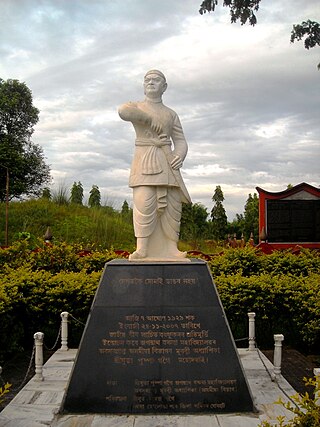
Lachit Barphukan was an Ahom commander, known for his leadership in the Battle of Saraighat that thwarted an invasion by Mughal forces under the command of Ramsingh I.
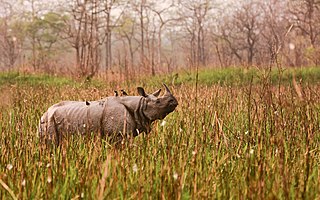
Assam is a state in northeastern India, south of the eastern Himalayas along the Brahmaputra and Barak River valleys. Assam covers an area of 78,438 km2 (30,285 sq mi). The state is bordered by Bhutan and Arunachal Pradesh to the north; Nagaland and Manipur to the east; Meghalaya, Tripura, Mizoram and Bangladesh to the south; and West Bengal to the west via the Siliguri Corridor, a 22 kilometres (14 mi) wide strip of land that connects the state to the rest of India. Assamese and Boro are the official languages of Assam, while Bengali is an additional official language in the Barak Valley.
Martyrdom of Guru Tegh Bahadur (India)

Guru Tegh Bahadur was the ninth of ten Gurus who founded the Sikh religion and the leader of Sikhs from 1665 until his beheading in 1675. He was born in Amritsar, Punjab, India in 1621 and was the youngest son of Guru Hargobind, the sixth Sikh guru. Considered a principled and fearless warrior, he was a learned spiritual scholar and a poet whose 115 hymns are included in Sri Guru Granth Sahib, the main text of Sikhism.

India, officially the Republic of India, is a country in South Asia. It is the seventh-largest country by area, the second-most populous country, and the most populous democracy in the world. Bounded by the Indian Ocean on the south, the Arabian Sea on the southwest, and the Bay of Bengal on the southeast, it shares land borders with Pakistan to the west; China, Nepal, and Bhutan to the north; and Bangladesh and Myanmar to the east. In the Indian Ocean, India is in the vicinity of Sri Lanka and the Maldives; its Andaman and Nicobar Islands share a maritime border with Thailand, Myanmar, and Indonesia.
Teachers' Day (Turkey)
Teachers' Day is a special day for the appreciation of teachers, and may include celebrations to honor them for their special contributions in a particular field area, or the community tone in education. This is the primary reason why countries celebrate this day on different dates, unlike many other International Days. For example, Argentina has commemorated Domingo Faustino Sarmiento's death on 11 September as Teachers' Day since 1915. In India the birthday of the second president Sarvepalli Radhakrishnan, 5 September, is celebrated as Teachers' Day since 1962, while Guru Purnima has been traditionally observed as a day to worship teachers/gurus by Hindus. Many countries celebrate their Teachers' Day on 5 October in conjunction with World Teachers' Day, which was established by UNESCO in 1994.

Turkey, officially the Republic of Türkiye, is a transcontinental country located mainly on the Anatolian Peninsula in Western Asia, with a small portion on the Balkan Peninsula in Southeast Europe. It shares borders with the Black Sea to the north; Georgia to the northeast; Armenia, Azerbaijan, and Iran to the east; Iraq to the southeast; Syria and the Mediterranean Sea to the south; the Aegean Sea to the west; and Greece and Bulgaria to the northwest. Cyprus is located off the south coast. Turks form the vast majority of the nation's population and Kurds are the largest minority. Ankara is Turkey's capital, while Istanbul is its largest city and financial centre.